Le Samsung Galaxy S24 FE passe à moins de 400 € pour la fin des soldes

[Deal du jour] Le Galaxy S24 FE est un smartphone de Samsung toujours dans le coup, et une excellente affaire à 399 € !

[Deal du jour] Le Galaxy S24 FE est un smartphone de Samsung toujours dans le coup, et une excellente affaire à 399 € !

Pas simple de s’y retrouver avec tous les modèles de smartphones qui sortent chaque année. Faut-il rester fidèle à Samsung et Apple ou tenter une autre marque ? Est-ce que les modèles en dessous de 400 € valent encore le coup ? Chez Numerama, on teste de nombreux téléphones régulièrement. Performances, photo, autonomie, mises à jour : on vous donne notre avis sur les modèles qui valent vraiment le coup en 2025.
In recent years, Synology has steadily moved toward a more vertically integrated hardware ecosystem, and the arrival of the 2025 generation of NAS systems marks a significant escalation in that approach. With a much stricter verification process for compatible storage media—covering both hard drives and SSDs—Synology now appears to heavily prioritize its own branded storage. This shift has sparked widespread debate across the NAS community, particularly as many long-time users of Seagate IronWolf, WD Red, and Toshiba NAS drives find themselves increasingly locked out of certain key features like RAID expansion, hot spare assignment, and recovery operations unless using “verified” drives. What’s more, while some of Synology’s media are rebranded and firmware-modified versions of familiar drives from Seagate and Toshiba, the pricing and compatibility limitations often leave users puzzled—and frustrated.
| Want to Support What We Do? Use the Links Below to Buy your NAS and/or HDD and SSD Media. Clicking these links will result in a small commission for anything you purchase, heading to me and Eddie @NASCompares and allows us to keep doing this! It’s just us two here and between this and ads, it’s the most passive way to keep us sailing! Thanks |
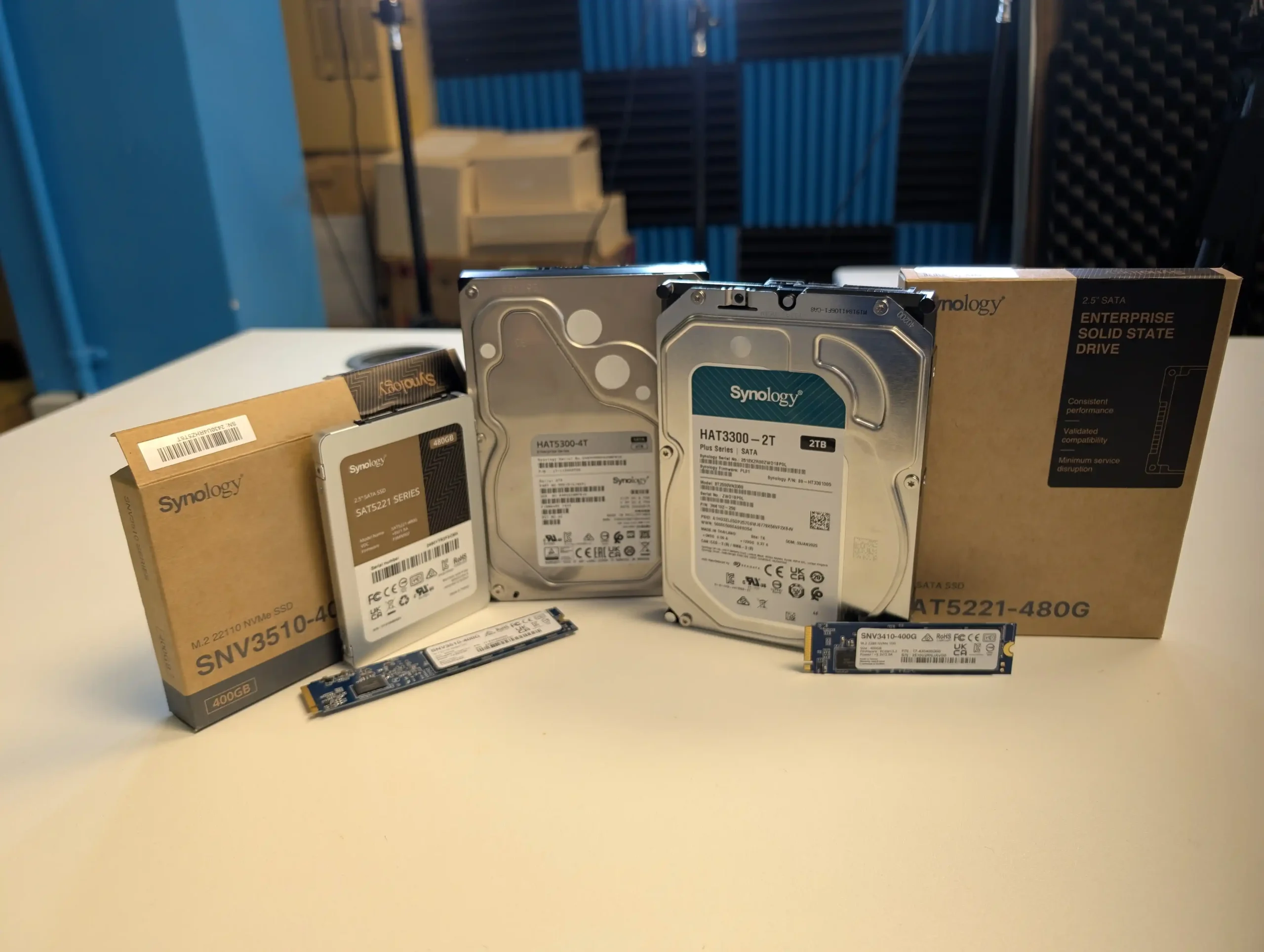
In response to growing user concern, we conducted a comparison of Synology’s drive lineup against the current offerings from Seagate, WD, and Kingston—analyzing each in terms of price per terabyte, real-world performance, durability specifications, and availability. Drawing from direct benchmarking, manufacturer datasheets, and controlled NAS testing environments, this article aims to answer a key question: is Synology’s branded media actually worth the premium? While some users may welcome the simplicity of a one-brand ecosystem, others are understandably wary of higher costs, limited SKU availability, and the potential long-term implications of vendor lock-in. Let’s break down what Synology drives really offer—and where they fall short—compared to the tried and tested alternatives on the market.
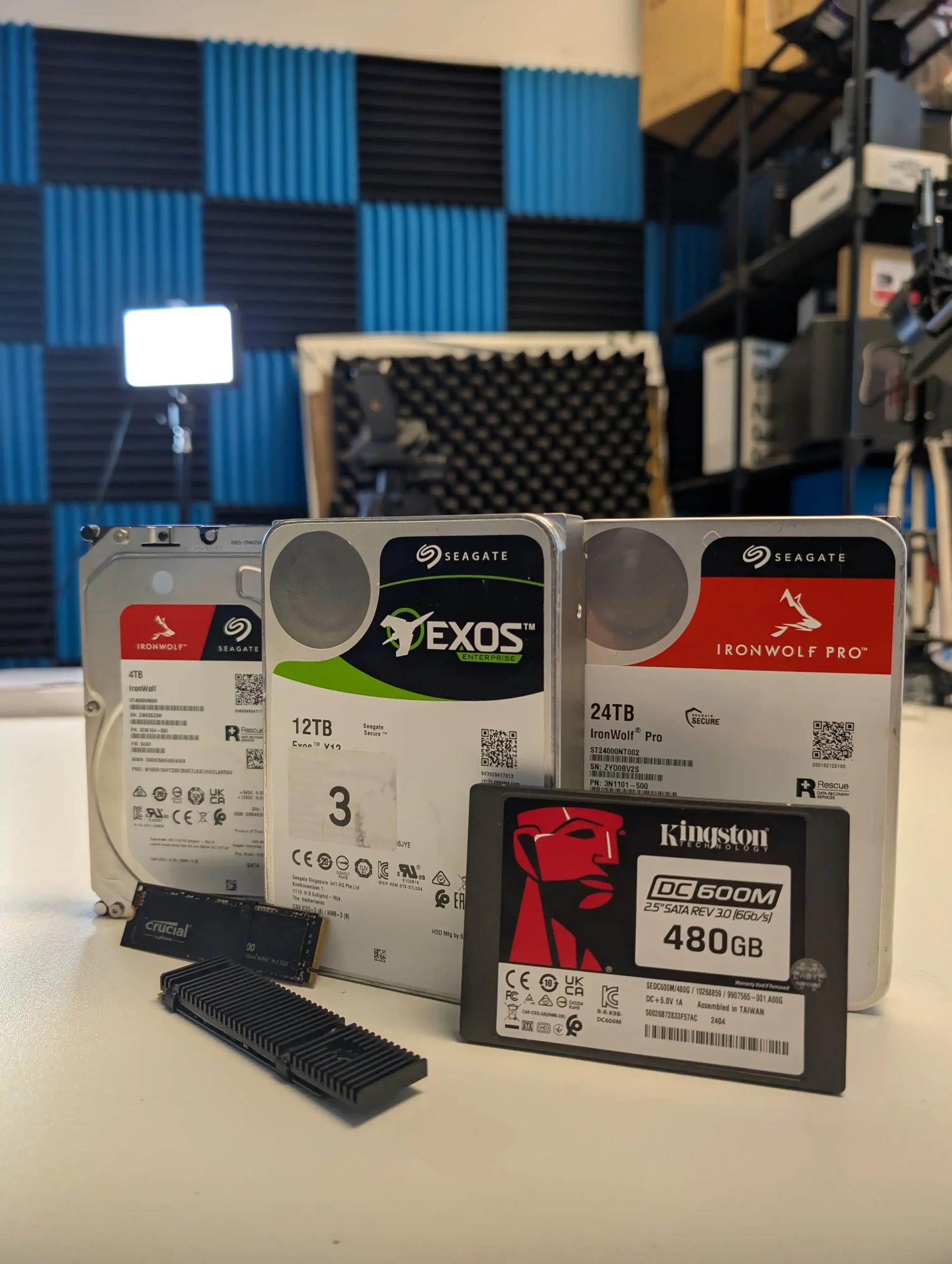
Synology’s storage media catalog is divided across value, prosumer, enterprise SATA, and SAS hard drives, alongside both SATA and NVMe SSDs. While these drives carry the Synology name and firmware, they are not designed or manufactured in-house. Instead, Synology rebrands OEM hardware from established vendors: Toshiba for the enterprise SATA and SAS drives, Seagate for the value-tier NAS HDDs, and Phison-based platforms for SSDs. The internal firmware is customized by Synology to integrate tightly with DSM, and in some cases, to restrict compatibility to only their branded drives within the latest 2025 NAS systems.
The naming scheme makes it easier to distinguish between drive classes:
HAT for SATA NAS hard drives
HAS for SAS enterprise drives
SAT for SATA SSDs
SNV for NVMe SSDs

This segmentation aims to help users align their hardware with expected durability (e.g. workload in TB/year), power loss protection, and RAID integration. However, it’s worth noting that several of these drives are virtually identical to third-party counterparts—particularly in the HAT3300 and HAT3310 lines, which closely mirror Seagate IronWolf models down to mechanical structure and spec. Despite this, third-party versions of those drives remain incompatible with key RAID features on the latest Synology systems unless they are officially “verified.”
 Synology NAS HDDs – HAT Series (SATA)
Synology NAS HDDs – HAT Series (SATA)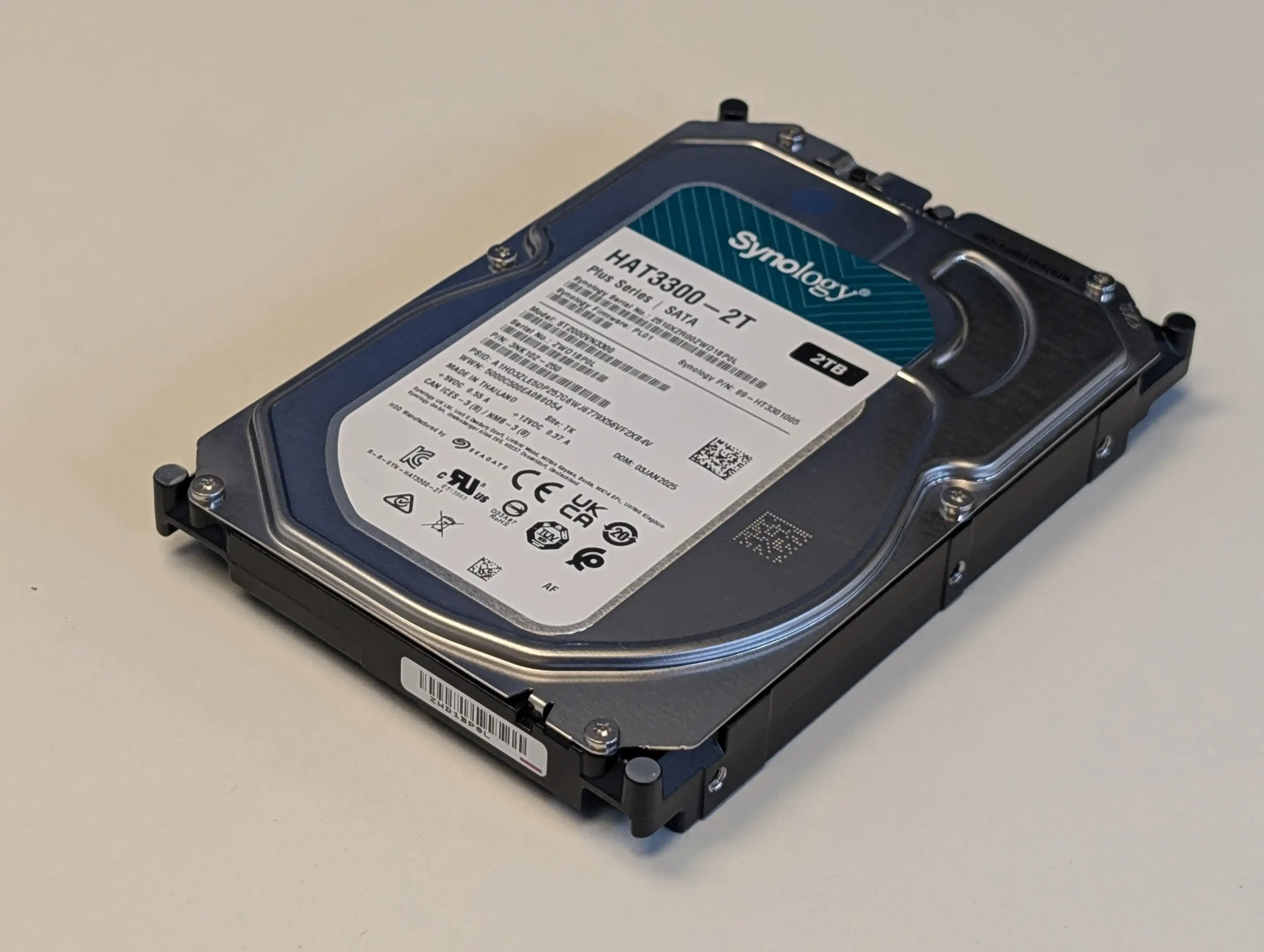 |
|||
|---|---|---|---|
| Model | Capacity | Price (USD) | $/TB |
| HAT3300 | 2TB | $84.99 | $42.50 |
| 4TB | $99.99 | $25.00 | |
| 6TB | $149.99 | $25.00 | |
| HAT3310 | 8TB | $199.99 | $25.00 |
| 12TB | $269.99 | $22.50 | |
| 12TB (2-Pack) | $539.98 | $22.50 | |
| 16TB | $299.99 | $18.75 | |
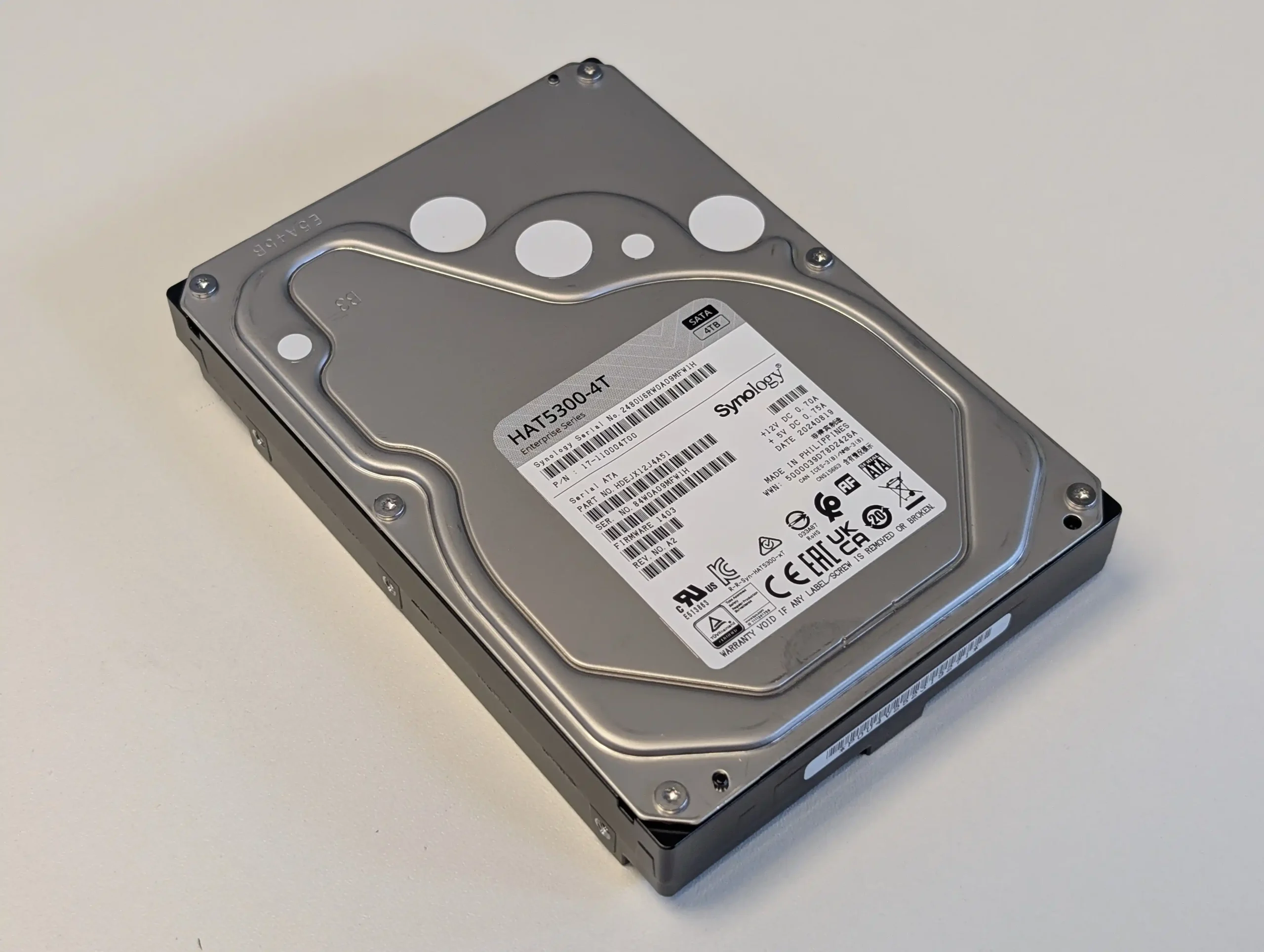 |
|||
| HAT5300 (Enterprise, Toshiba) | 12TB | $449.99 | $37.50 |
| 16TB | $579.99 | $36.25 | |
| HAT5310 | 8TB | $299.99 | $37.50 |
| 20TB | $719.99 | $36.00 | |
 Synology SAS HDDs – HAS Series
Synology SAS HDDs – HAS Series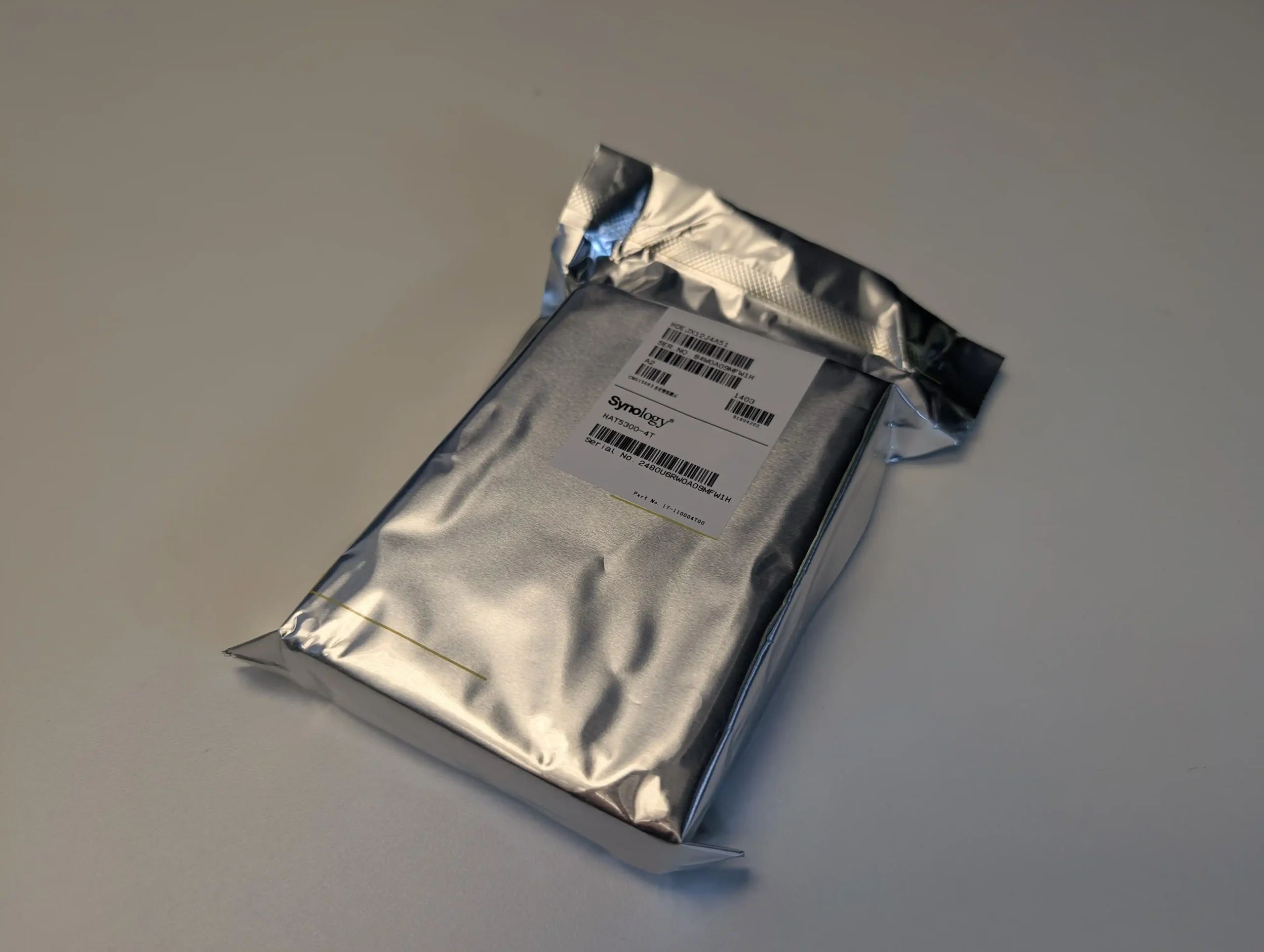 |
|||
|---|---|---|---|
| Model | Capacity | Price (USD) | $/TB |
| HAS5300 | 8TB | $299.99 | $37.50 |
| 12TB | $459.99 | $38.33 | |
| 16TB | $699.99 | $43.75 | |
| HAS5310 | 20TB | $829.99 | $41.50 |
 Synology SATA SSDs – SAT Series
Synology SATA SSDs – SAT Series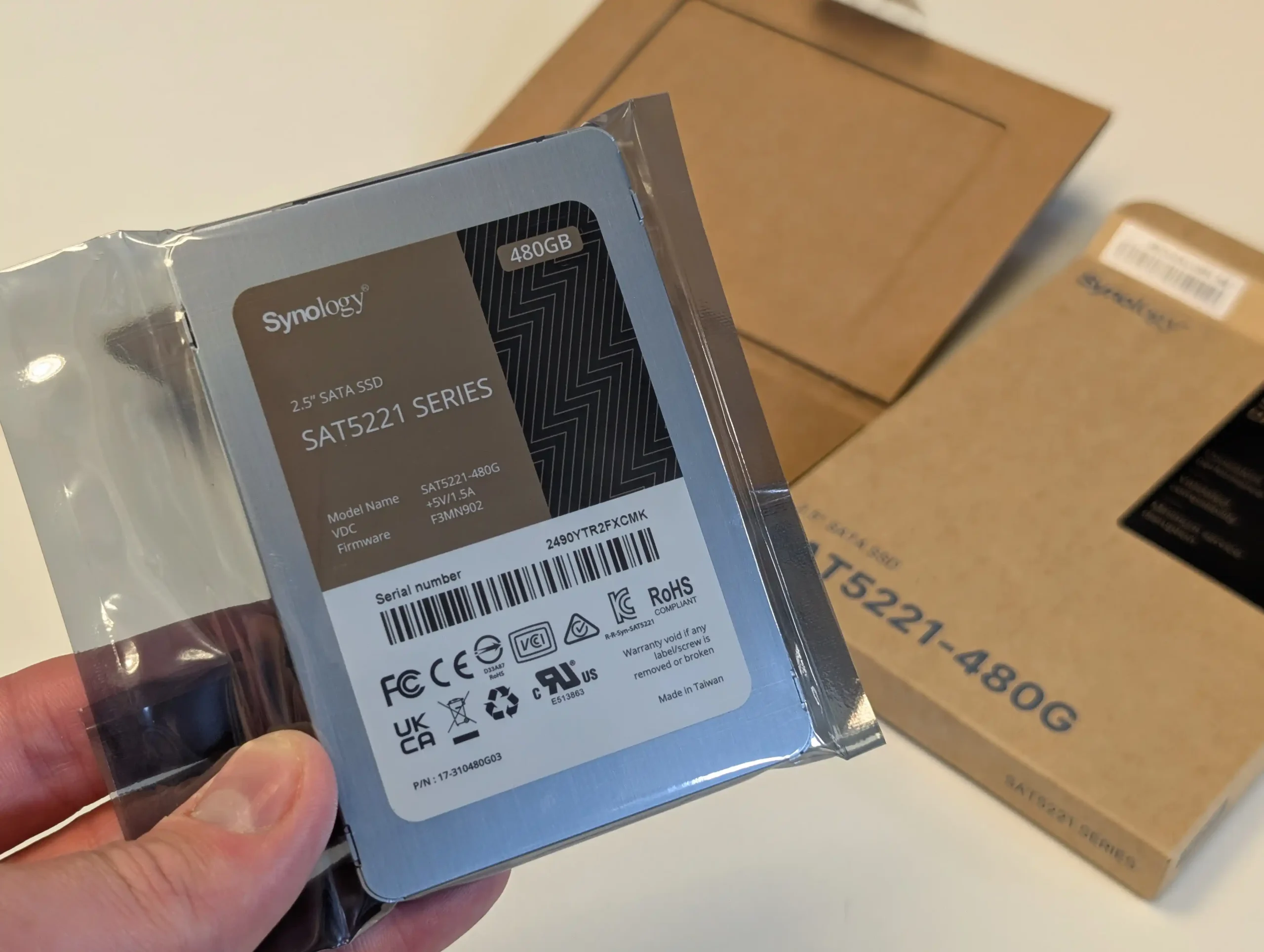 |
|||
|---|---|---|---|
| Model | Capacity | Price (USD) | $/TB |
| SAT5210 | 7TB | $1,859.99 | $265.71 |
| SAT5221 | 480GB | $169.99 | $354.15 |
| 960GB | $299.99 | $312.49 | |
| 1.92TB | $529.99 | $276.04 | |
| 3.84TB | $979.99 | $255.20 | |
 Synology NVMe SSDs – SNV Series
Synology NVMe SSDs – SNV Series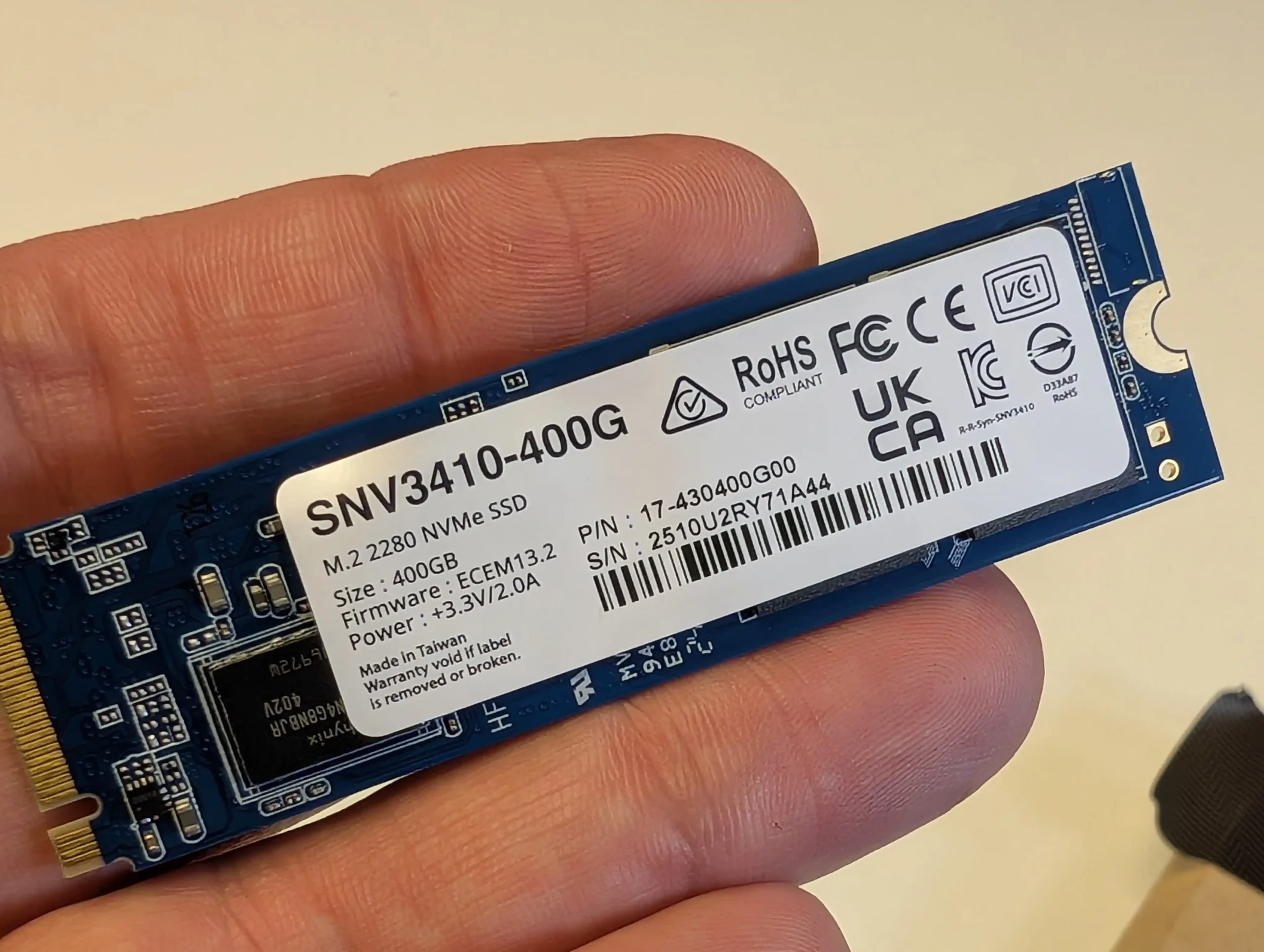 |
|||
|---|---|---|---|
| Model | Capacity | Price (USD) | $/TB |
| SNV3410 | 400GB | $139.99 | $349.98 |
| 800GB | $269.99 | $337.49 | |
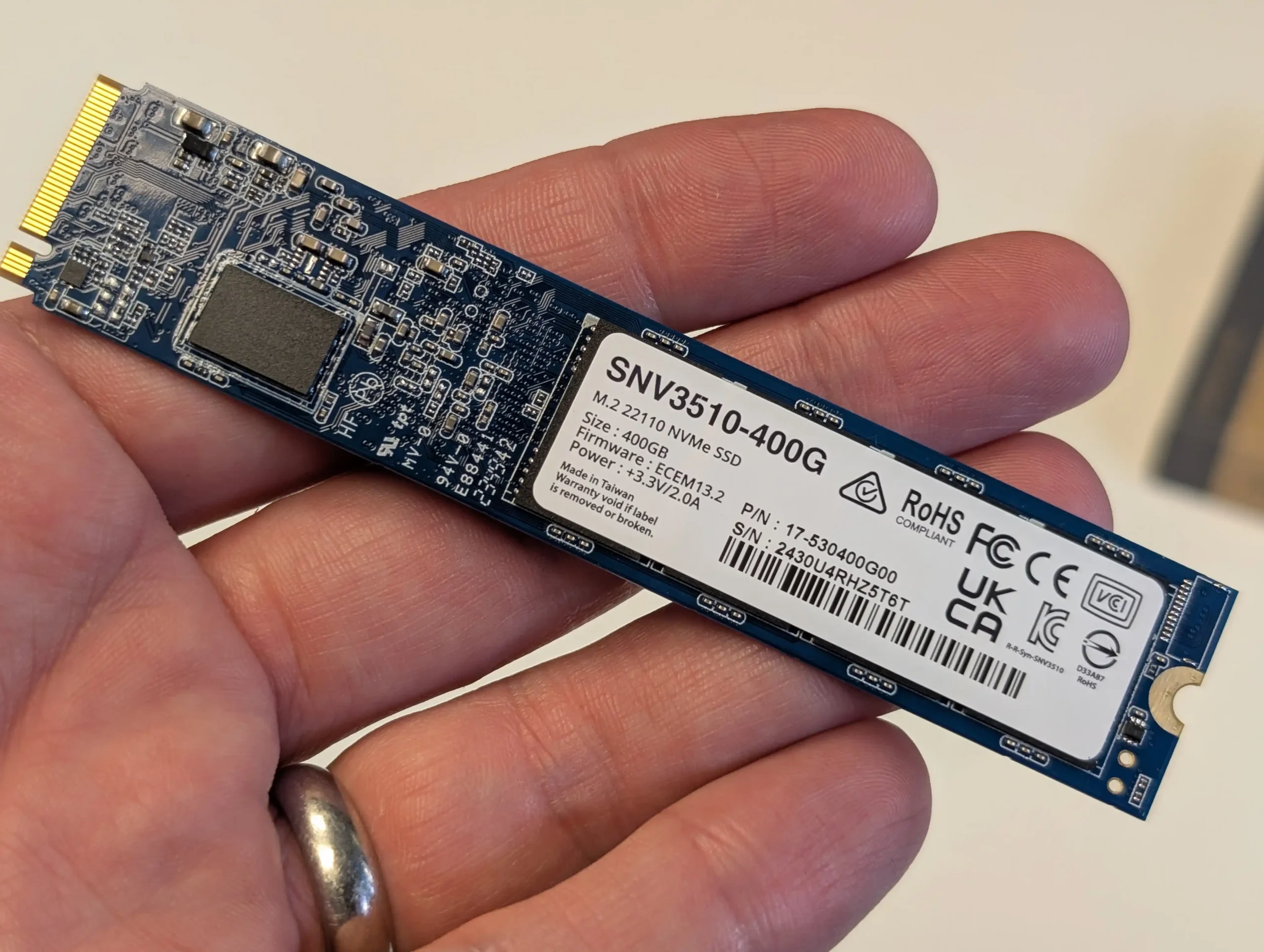 |
|||
| SNV3510 | 400GB | $174.99 | $437.48 |
| 800GB | $299.99 | $374.99 | |
While Synology’s branding suggests ecosystem cohesion, it’s essential to recognize that their drive firmware is not engineered for general-purpose systems. These drives are optimized—and in some cases restricted—for Synology NAS environments. However, performance benchmarks show that Synology drives often perform equivalently or slightly below their third-party counterparts in synthetic and real-world tests. Moreover, price comparisons reveal a 5–15% markup on average in the value tier, and significantly higher deltas—often exceeding 30–40%—in the enterprise-class and SSD segments. Combined with regional supply inconsistencies and limited SKU availability, the value proposition of Synology-branded drives remains hotly debated, especially when identical hardware from Seagate or Toshiba can be purchased for less—if only the 2025 NAS series would support them natively.
When it comes to entry-level NAS hard drives, the price differences between Synology’s HAT3300 and HAT3310 series and their third-party equivalents—such as Seagate IronWolf and WD Red Plus—are generally modest. In most cases, the cost per terabyte (TB) stays within a 0% to 15% margin, with Synology’s versions sitting slightly higher. For casual or home users who just want a drive that “just works” out of the box and benefits from firmware-level integration with DSM, that small premium might feel justifiable.
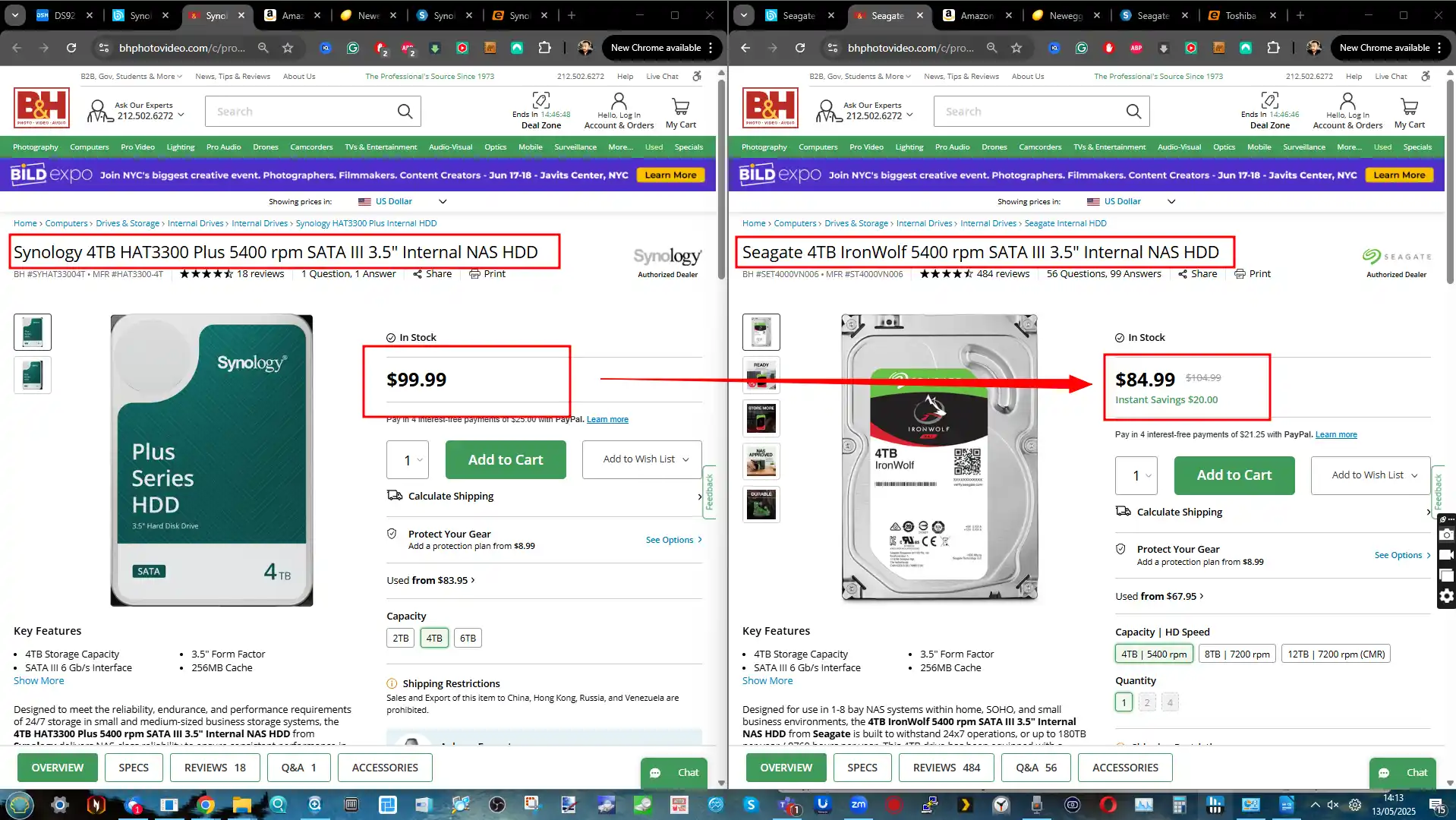
But the story changes dramatically as we move into prosumer and enterprise territory. Drives like the Synology HAT5300 and HAS5300 series can cost 40%–50% more than Seagate IronWolf Pro, WD Red Pro, or Seagate Exos alternatives—despite sharing the same mechanical internals in many cases. These aren’t just marginal differences; when you’re building a multi-drive RAID array with 12TB or 16TB drives, that pricing gap quickly snowballs into hundreds or even thousands of dollars extra. And this is particularly frustrating when, for example, Synology’s 12TB HAT5300 (built on Toshiba hardware) costs nearly double what a comparable IronWolf Pro sells for, despite similar endurance ratings and warranty terms.
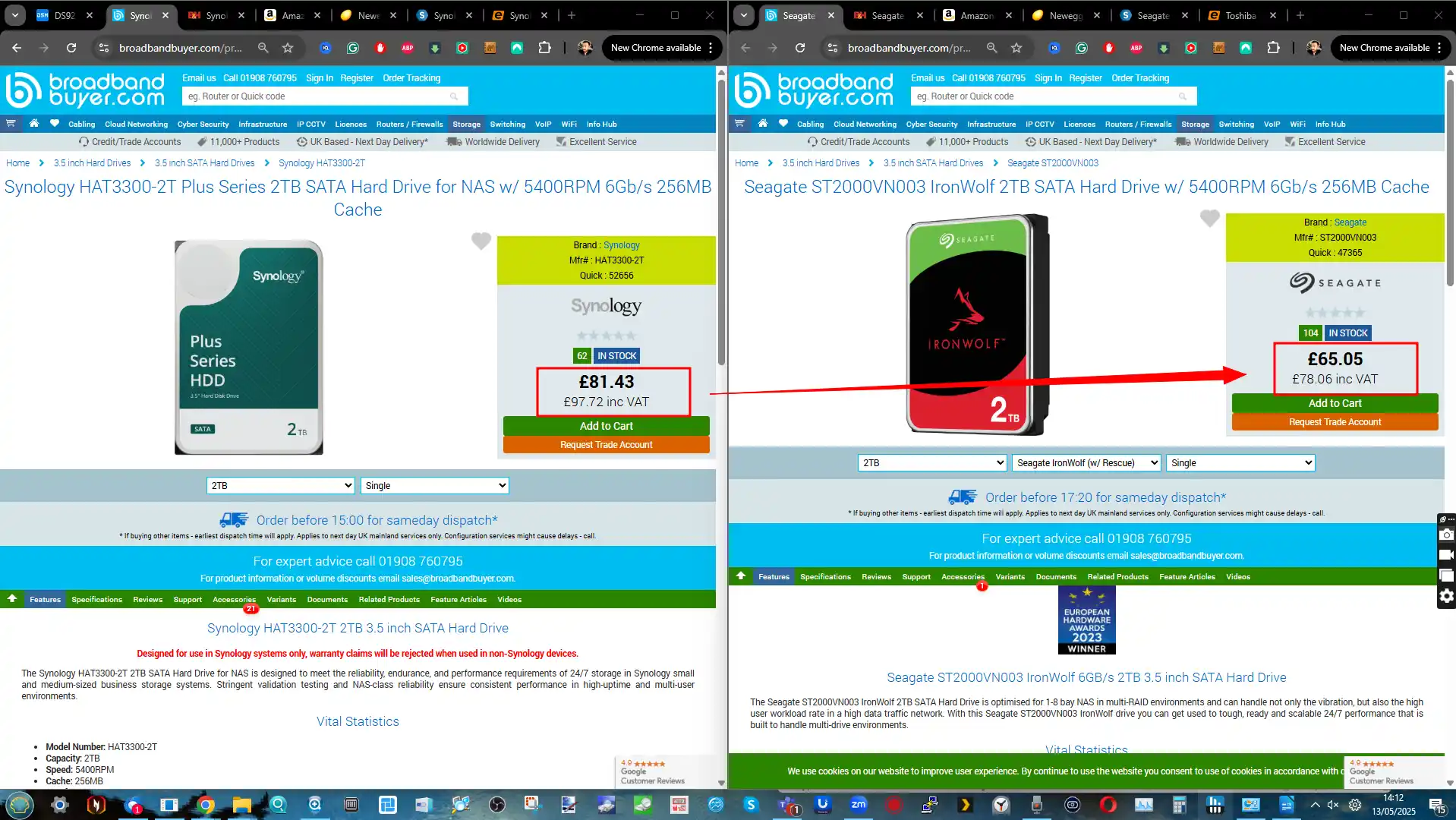
| Synology Model | Capacity | Synology Price | Synology $/TB | 3rd Party Equivalent | 3rd Party Price | $/TB | % Difference |
|---|---|---|---|---|---|---|---|
| HAT3300 | 2TB | $84.99 | $42.50 | WD Red Plus 2TB | $79.99 | $40.00 | -5.9% |
| HAT3300 | 4TB | $99.99 | $25.00 | Seagate IronWolf 4TB | $84.99 | $21.25 | -15.0% |
| HAT3300 | 4TB | $99.99 | $25.00 | WD Red Plus 4TB | $99.99 | $25.00 | 0.0% |
| HAT3300 | 6TB | $149.99 | $25.00 | Seagate IronWolf 6TB | $139.99 | $23.33 | -6.7% |
| HAT3310 | 8TB | $199.99 | $25.00 | WD Red Plus 8TB | $179.99 | $22.50 | -10.0% |
| HAT3310 | 12TB | $269.99 | $22.50 | Seagate IronWolf 12TB | $239.99 | $20.00 | -11.1% |
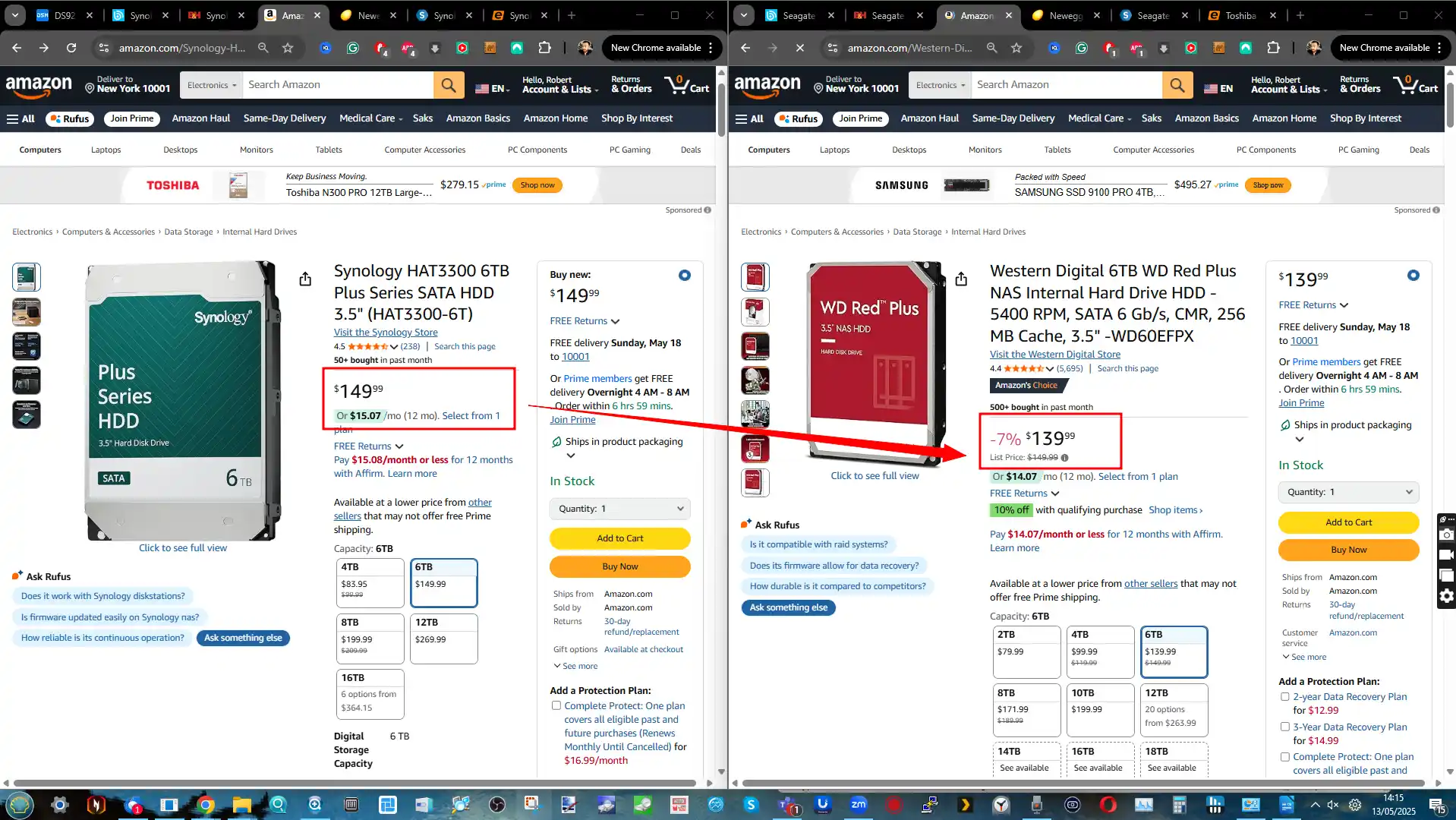
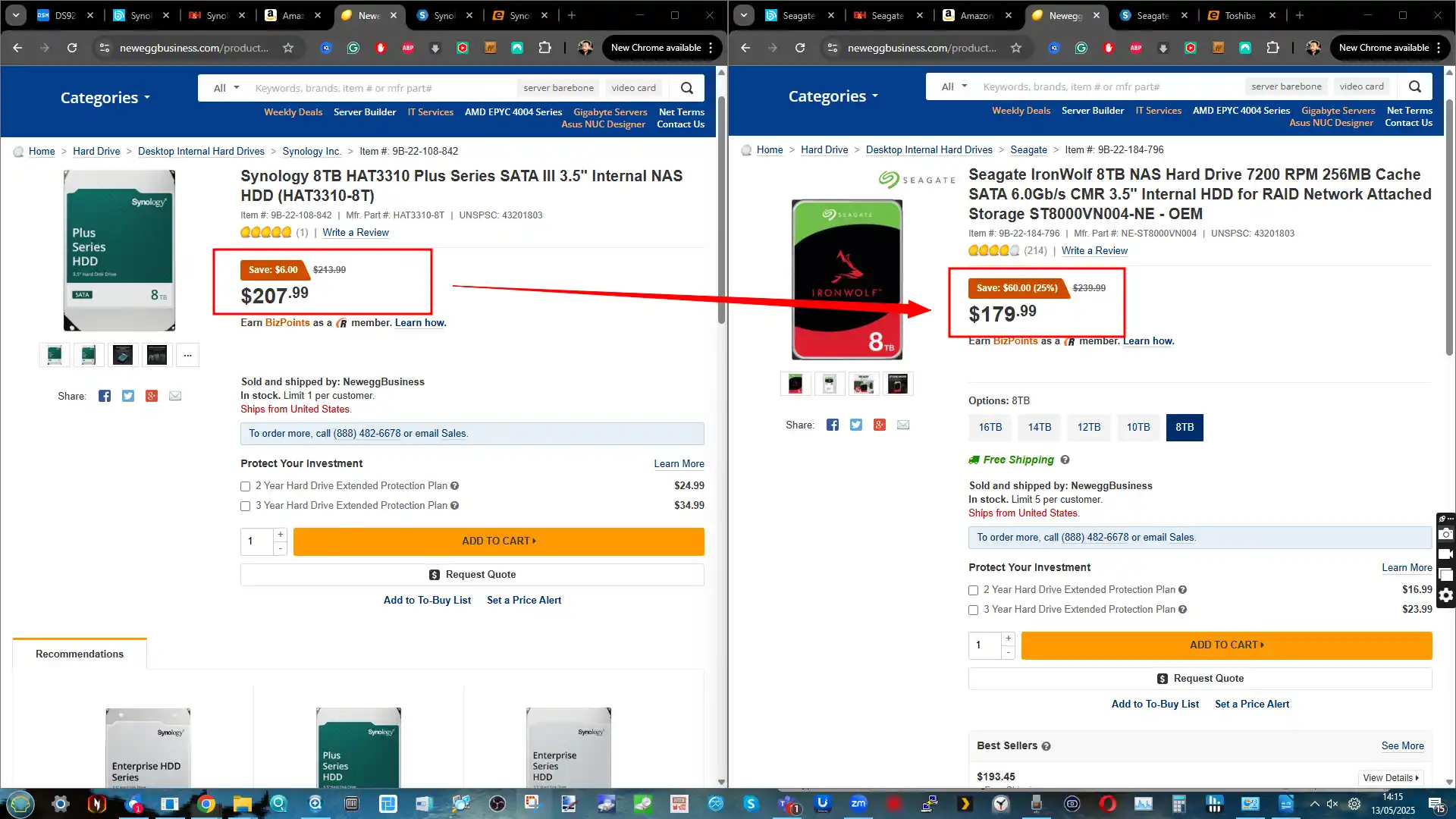
| Synology Model | Capacity | Synology Price | Synology $/TB | 3rd Party Equivalent | 3rd Party Price | $/TB | % Difference |
|---|---|---|---|---|---|---|---|
| HAT5300 | 12TB | $449.99 | $37.50 | IronWolf Pro 12TB | $249.99 | $20.83 | -44.4% |
| HAT5300 | 16TB | $579.99 | $36.25 | WD Red Pro 16TB | $349.99 | $21.87 | -39.7% |
| HAT5310 | 20TB | $719.99 | $36.00 | Seagate IronWolf Pro 20TB | $399.99 | $20.00 | -44.4% |
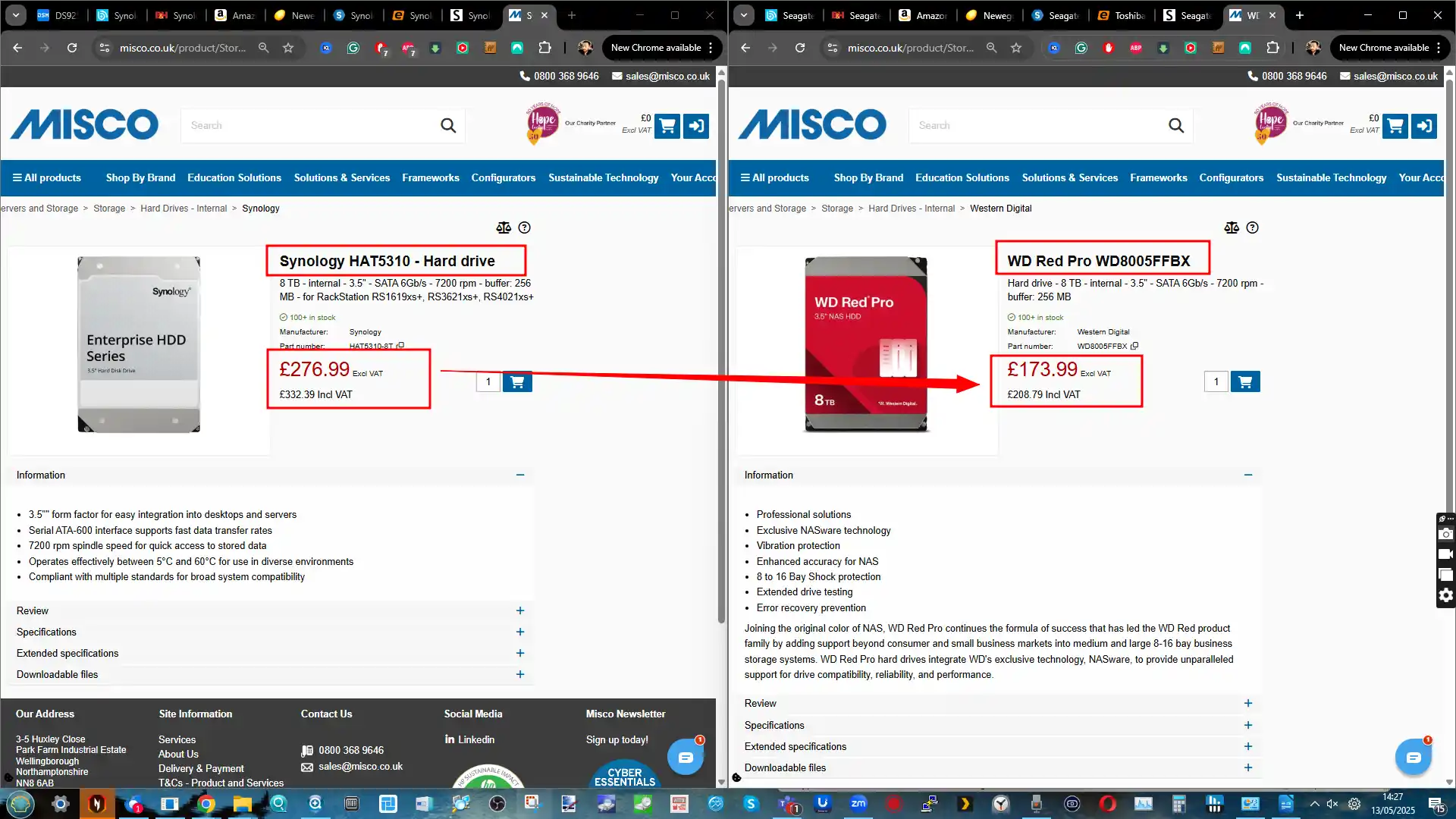
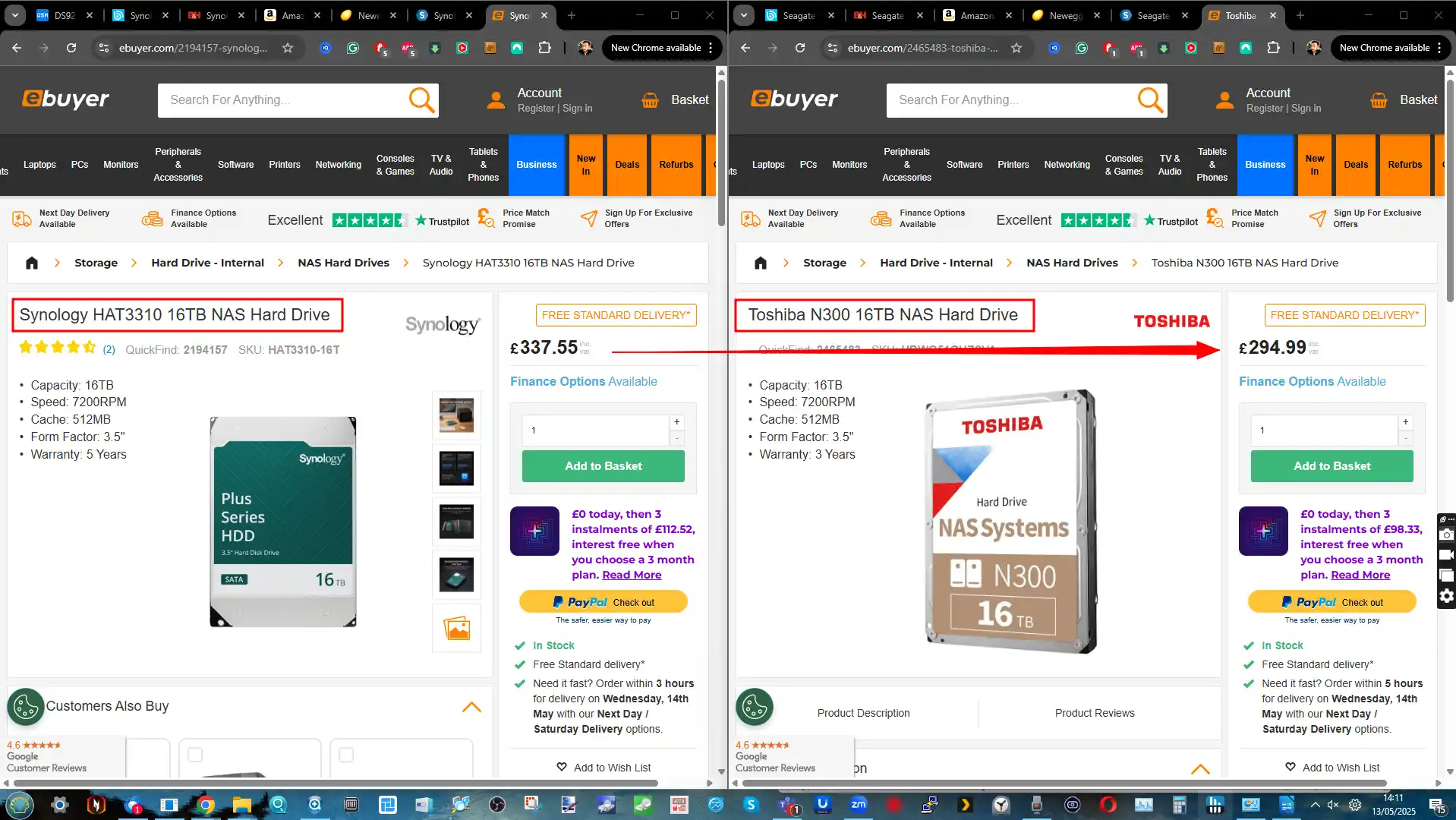
| Synology Model | Capacity | Synology Price | Synology $/TB | 3rd Party Equivalent | 3rd Party Price | $/TB | % Difference |
|---|---|---|---|---|---|---|---|
| HAS5300 | 8TB | $299.99 | $37.50 | Seagate Exos 7E10 | $259.99 | $32.50 | -13.3% |
| HAS5300 | 16TB | $699.99 | $43.75 | Seagate Exos X18 | $369.99 | $23.12 | -47.1% |
| HAS5310 | 20TB | $829.99 | $41.50 | Exos X20 | $499.99 | $25.00 | -39.8% |
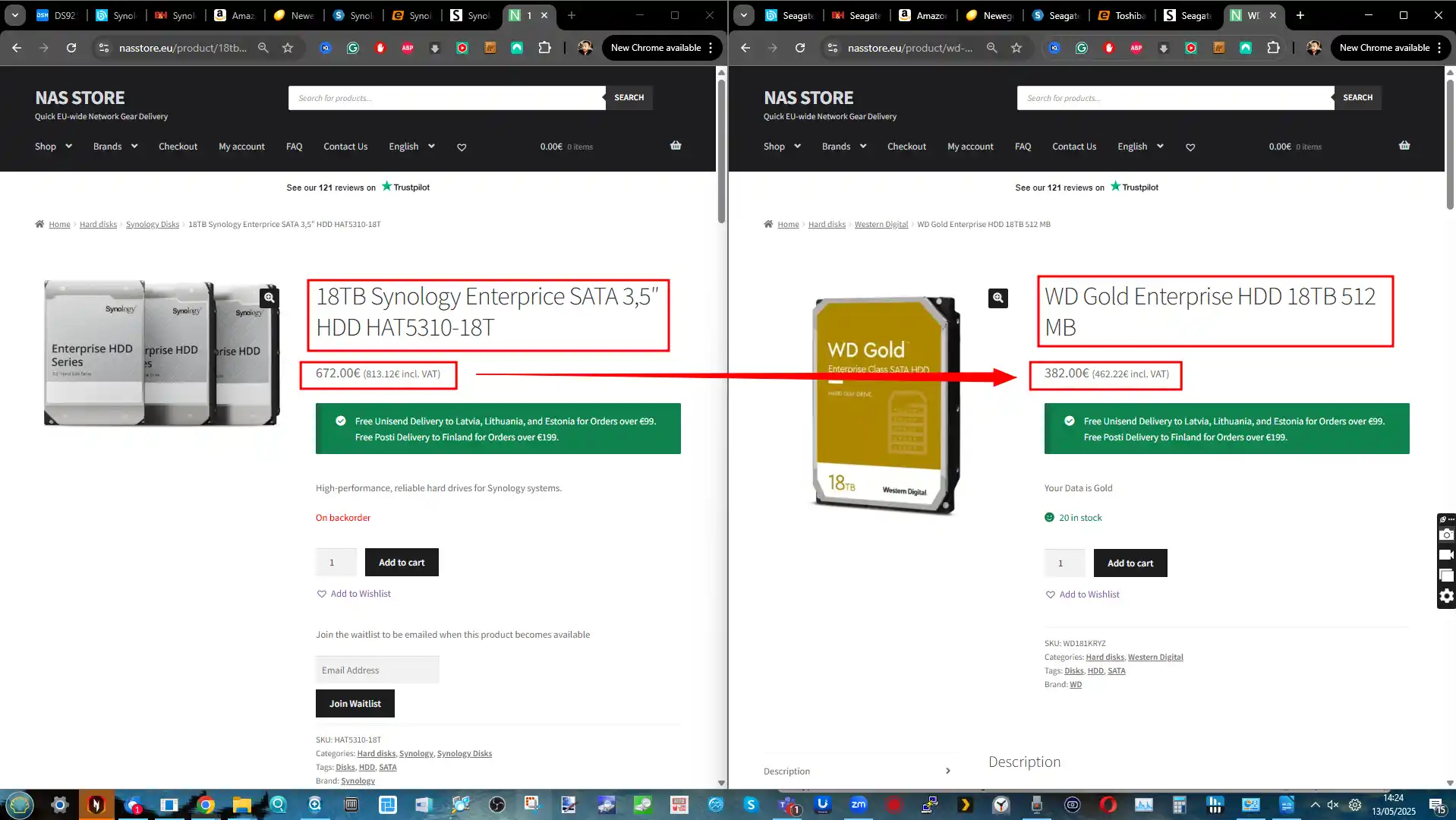
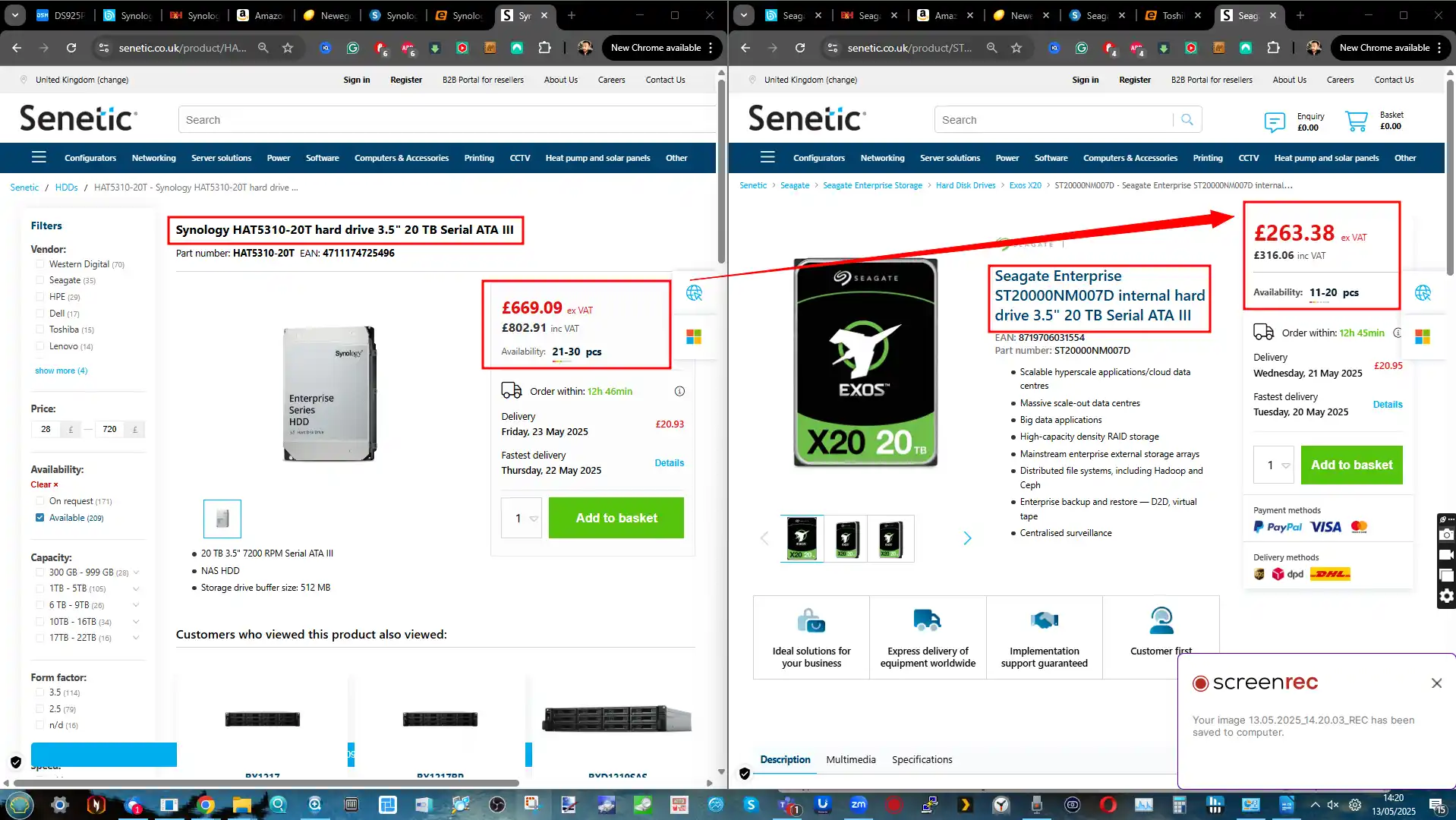
| Synology Model | Capacity | Synology Price | Synology $/TB | 3rd Party Equivalent | 3rd Party Price | $/TB | % Difference |
|---|---|---|---|---|---|---|---|
| SAT5221 | 480GB | $169.99 | $354.15 | Kingston DC600M | $102.99 | $214.56 | -39.4% |
| SAT5221 | 3.84TB | $979.99 | $255.21 | Kingston DC600M | $522.99 | $136.20 | -46.6% |
| SAT5210 | 7TB | $1859.99 | $265.71 | Kingston DC600M (7.68TB) | $955.99 | $124.48 | -48.6% |
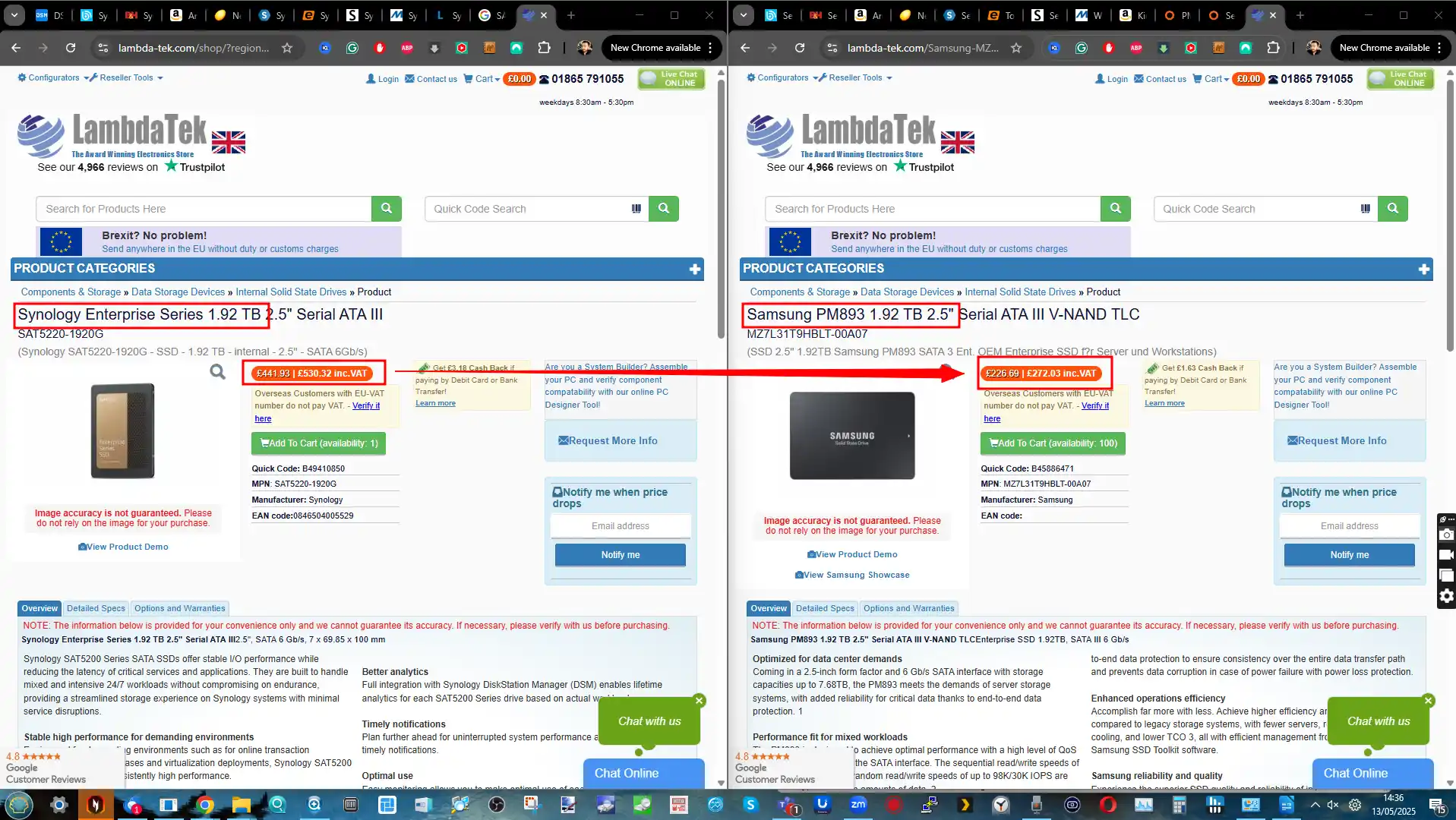
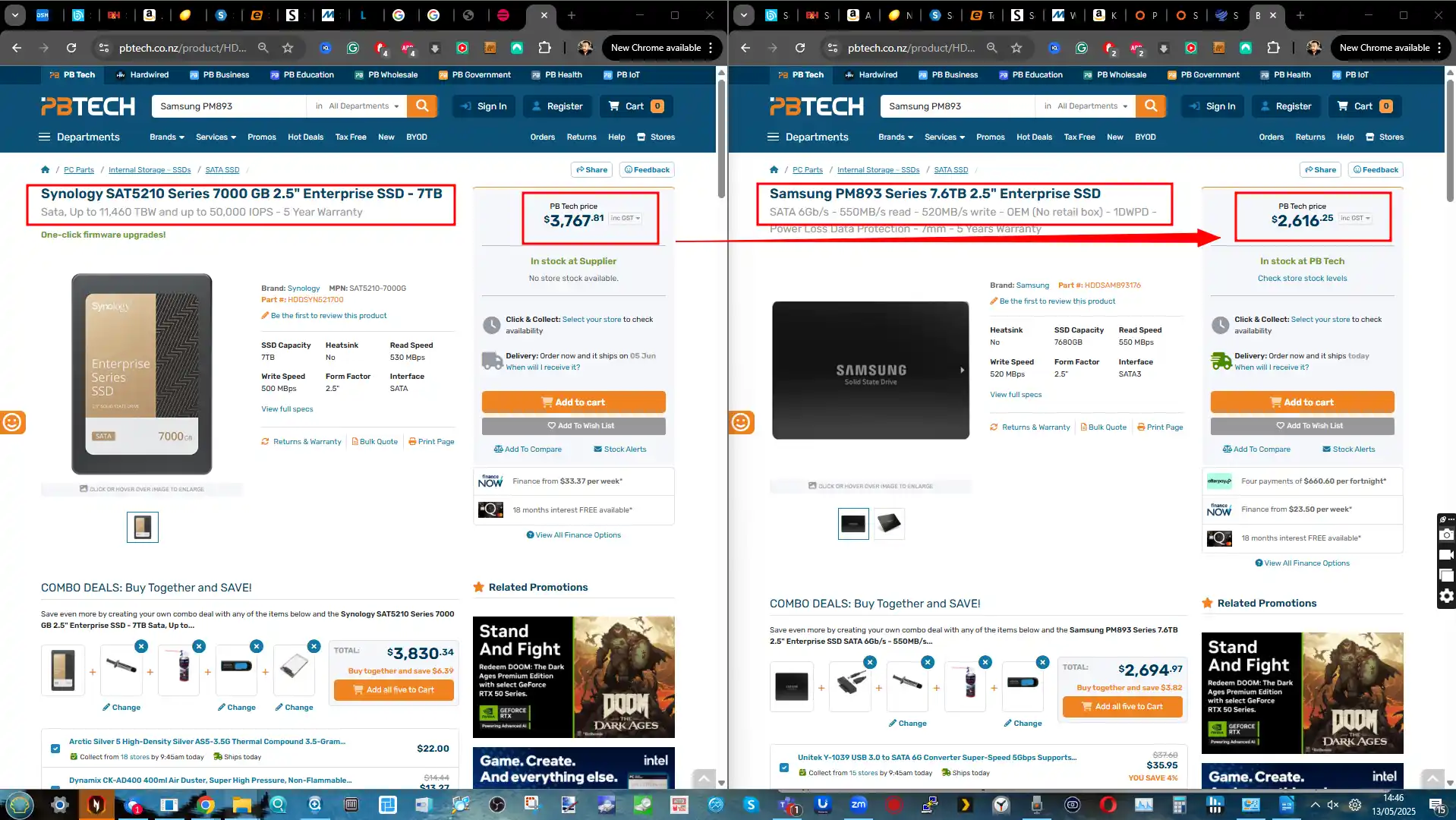
| Synology Model | Capacity | Synology Price | Synology $/TB | 3rd Party Equivalent | 3rd Party Price | $/TB | % Difference |
|---|---|---|---|---|---|---|---|
| SNV3410 | 800GB | $269.99 | $337.49 | WD Red SN700 1TB | $139.99 | $139.99 | -48.1% |
| SNV3510 | 800GB | $299.99 | $374.99 | WD Red SN700 1TB | $139.99 | $139.99 | -53.3% |
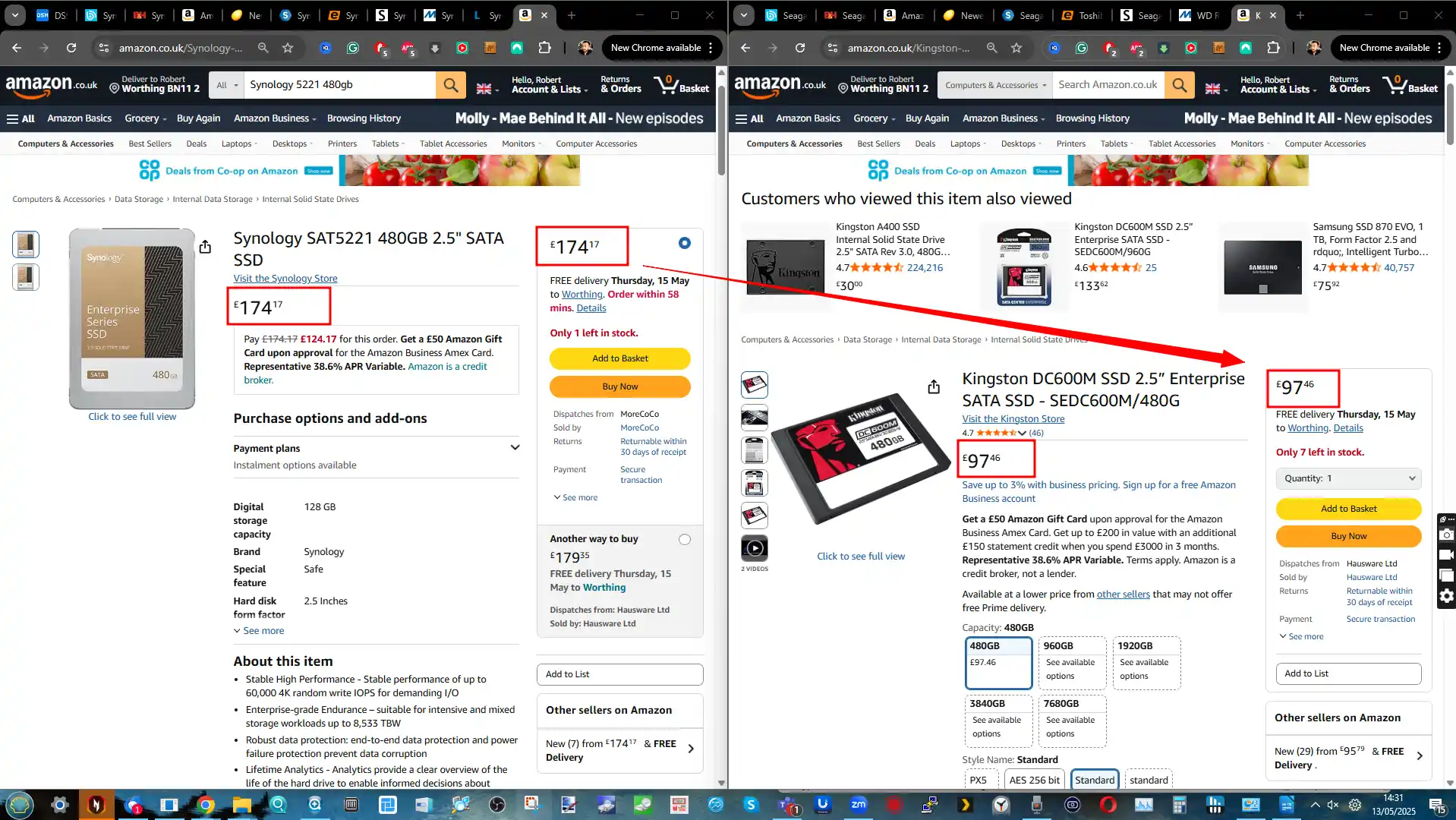
In short, while Synology’s drives are built on reputable platforms and do offer advantages like verified DSM integration and predictable firmware behavior, the value proposition becomes questionable—especially in higher capacities and enterprise deployments. For many users, especially SMBs and home power users deploying multi-drive setups, that extra 40–50% markup can be hard to justify. When the mechanical hardware is near-identical and the only major differentiator is firmware control, it’s no wonder many are pushing back against this pricing structure.)
Zoom in to see the results. IMPORTANT that you keep in mind that these SSDs and HDDs are different capacities and therefore direct comparison and correlation between their performance is not fair – I include these because I think it is important to compare the general gist of using Synology HDD media in a system and then alternatives, but measured with Synology’s in-system tools. Larger capacities mostly tend to yeald better results in any brand of drive (not a ‘do-or-die’ rule, but generally true).
| SYNOLOGY HAT3300 HDD | Seagate Ironwolf HDD |
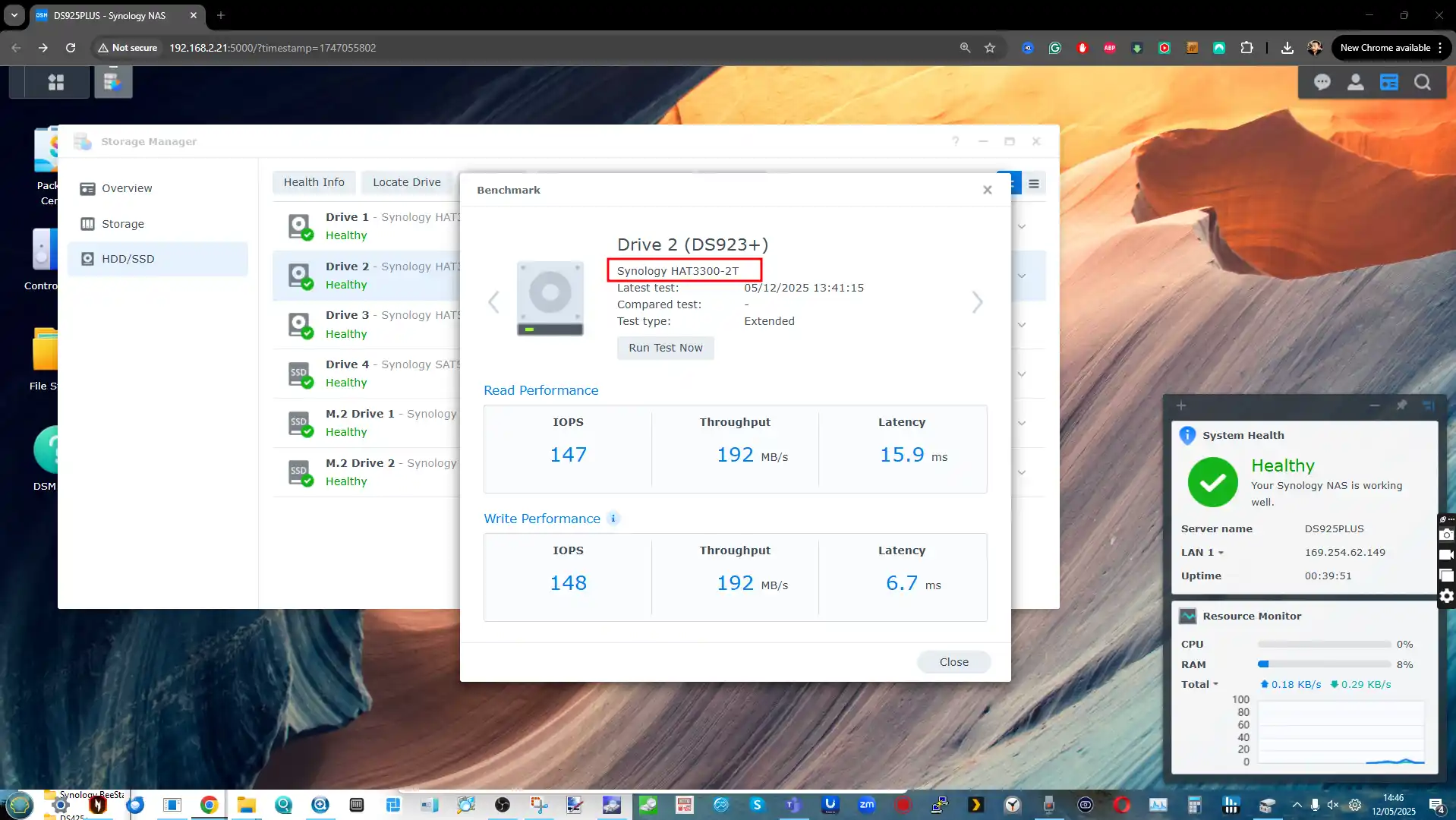 |
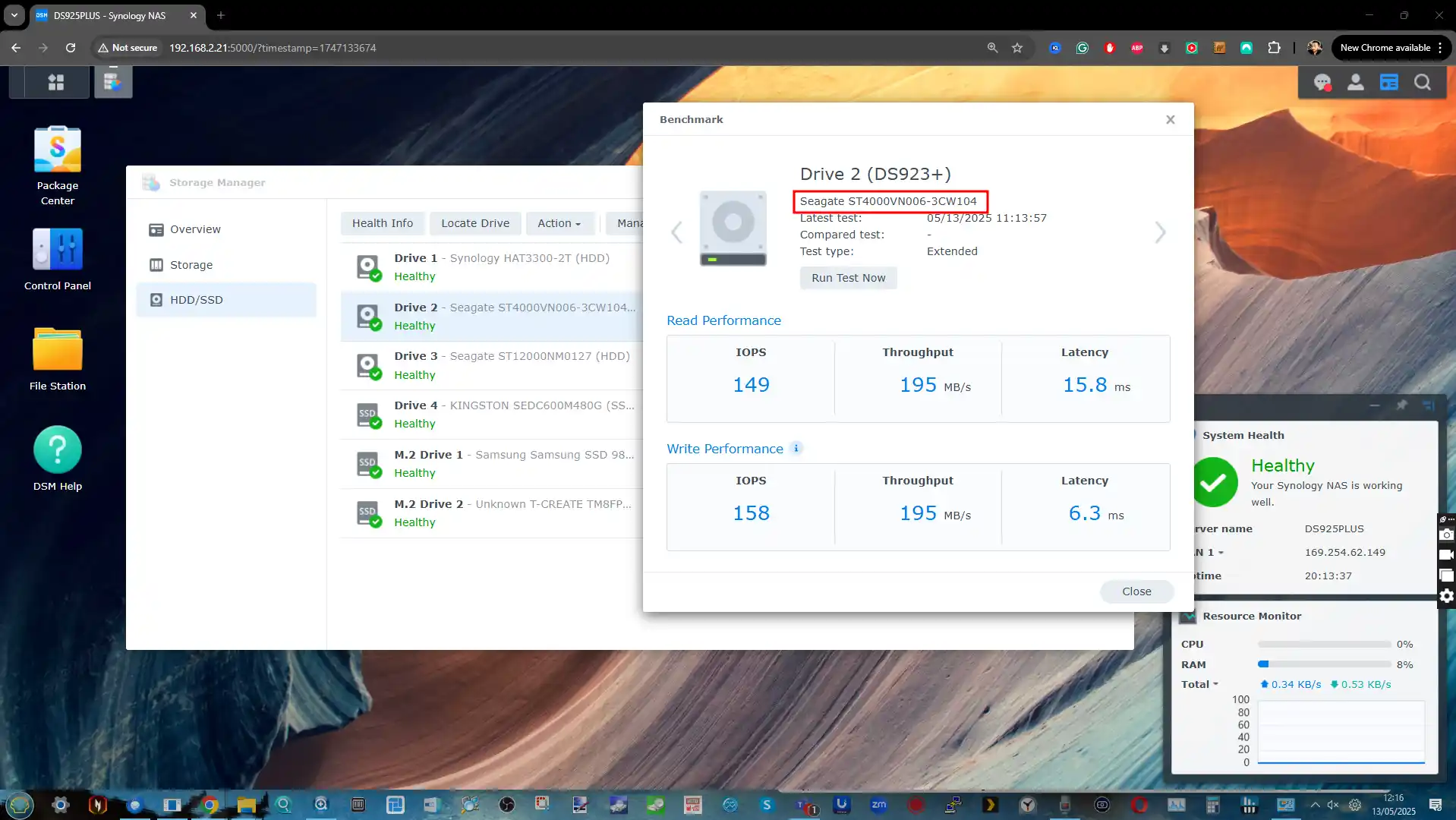 |
| SYNOLOGY HAT5300 HDD | Seagate EXOS HDD |
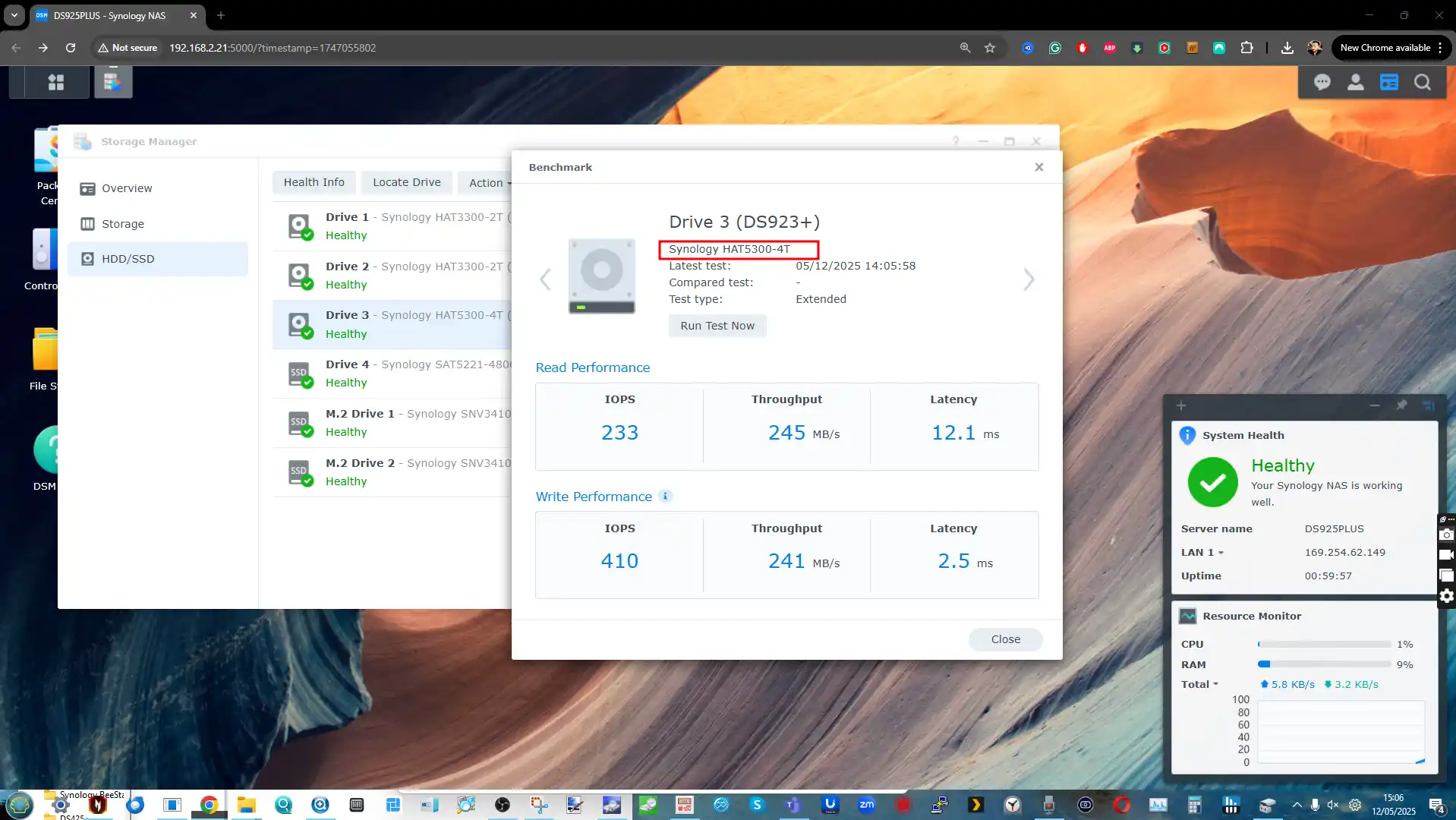 |
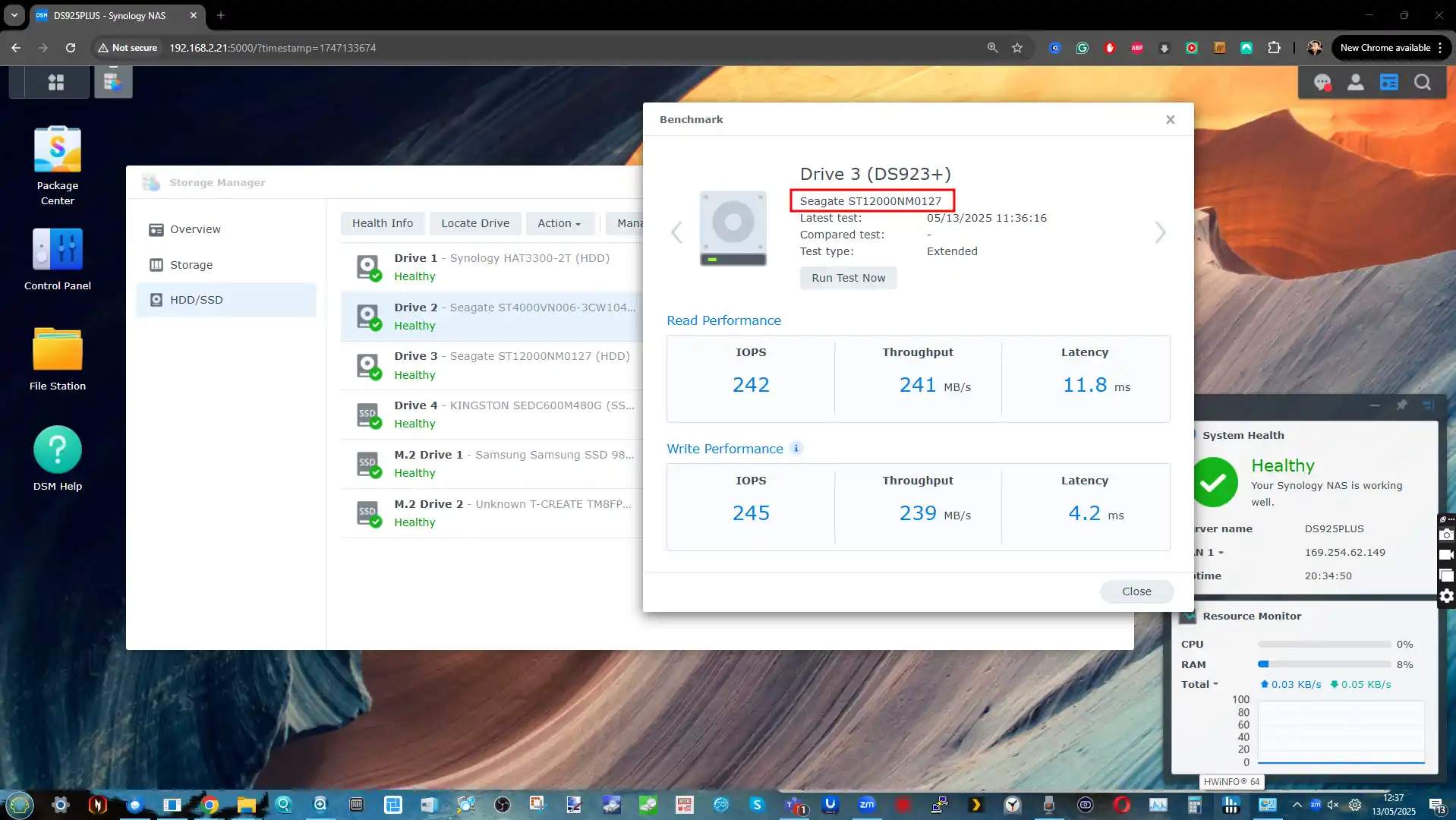 |
| SYNOLOGY SAT5200 SSD | Kingston DC600 SATA SSD |
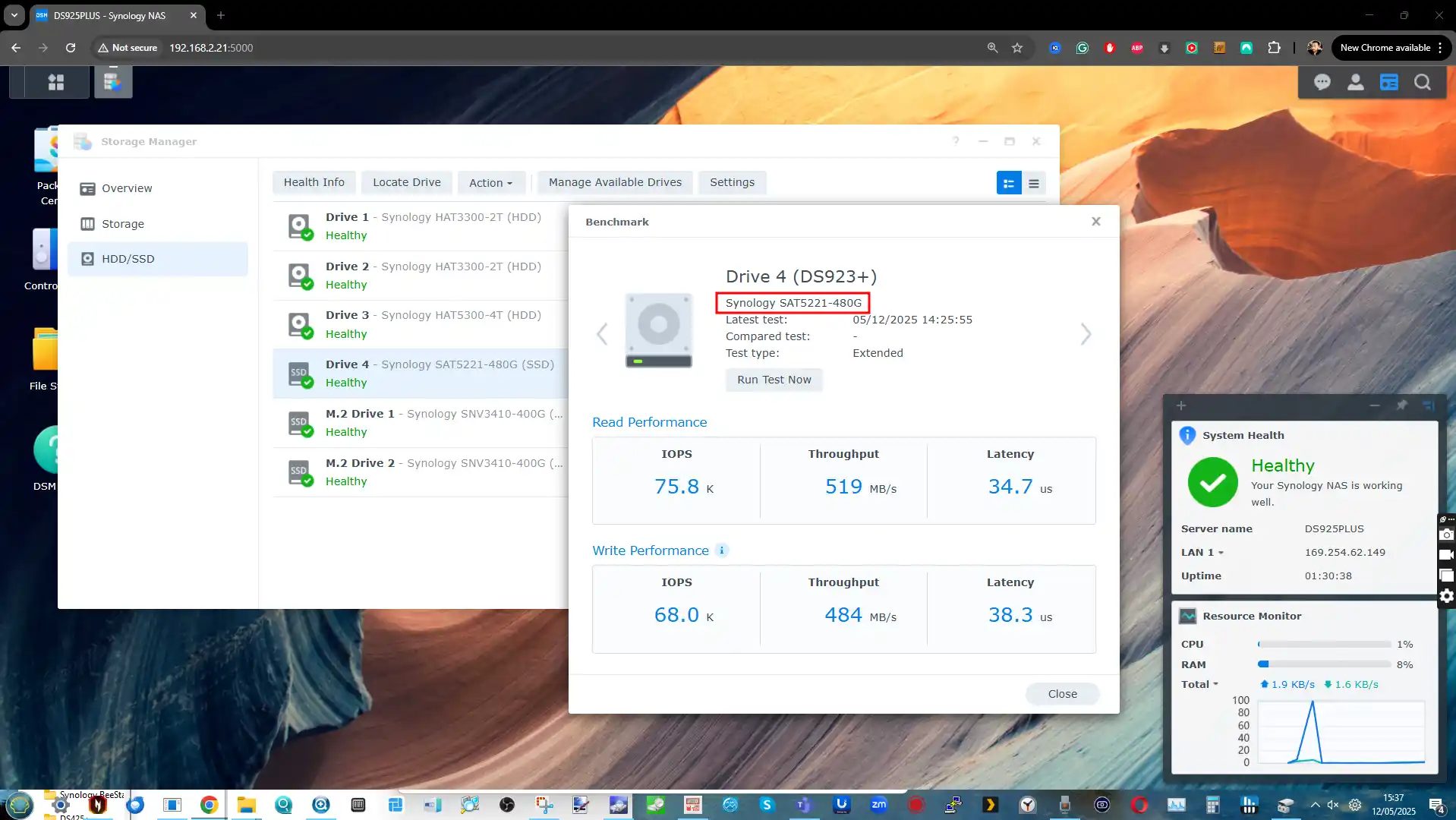 |
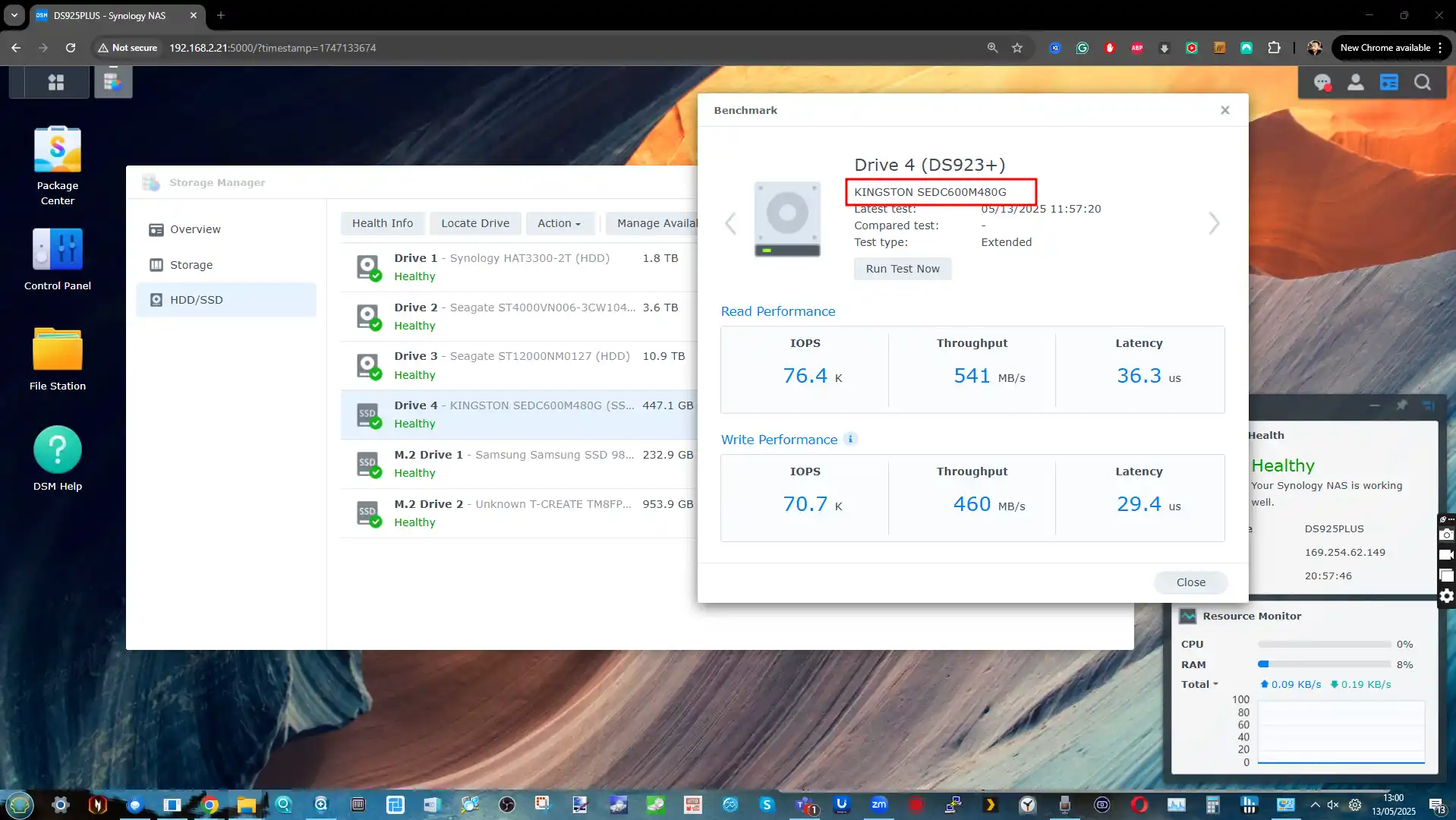 |
| SYNOLOGY M.2 NVMe SSD | TeamGroup T-Create Gen3 M.2 SSD |
 |
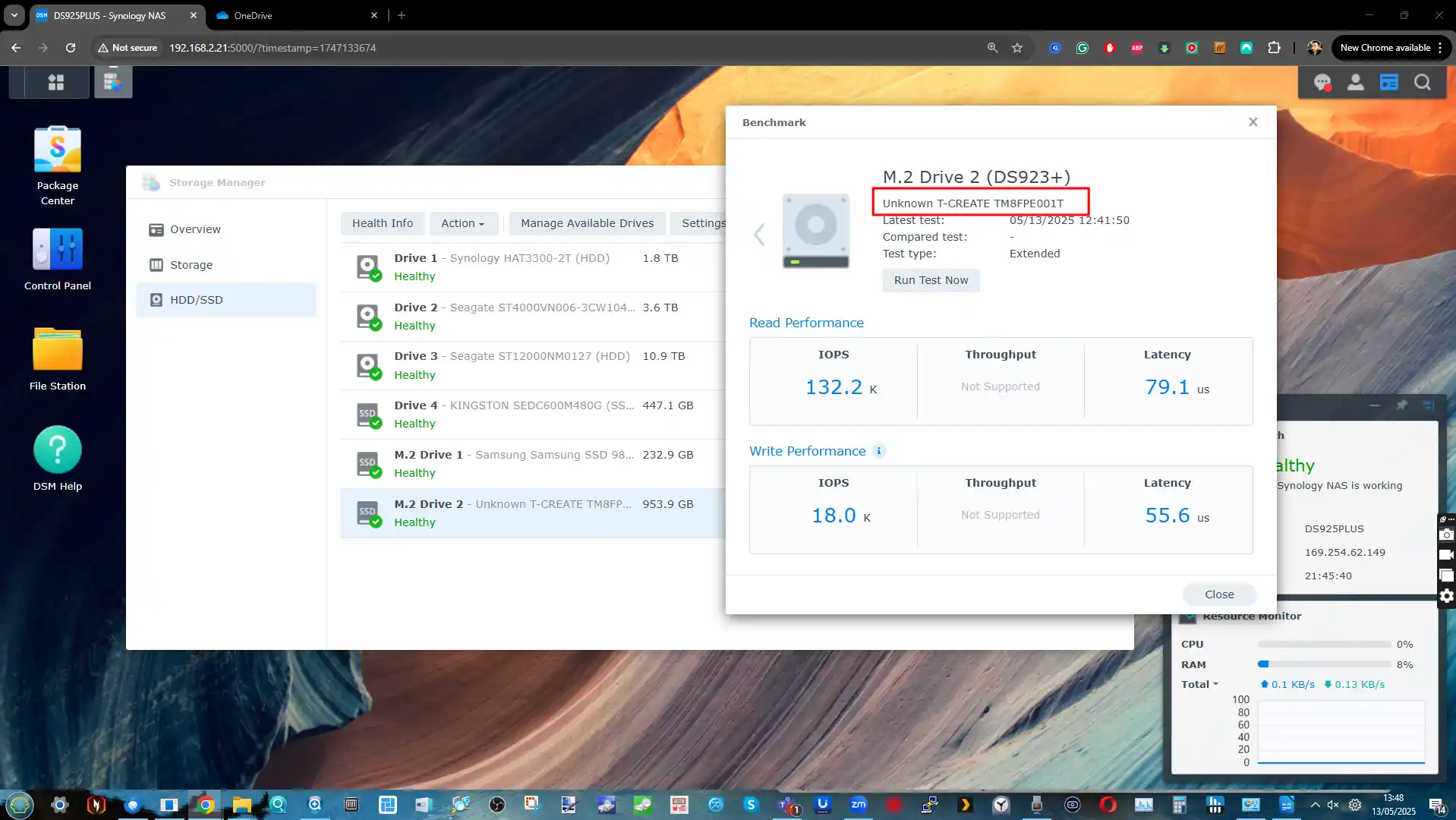 |
IMPORTANT – In the process of upscaling the test result images (as there is a lot crammed in, so I have included the slightly blurred ones here) but I and will replace these with upscaled versions as soon as possible.
When it comes to performance, Synology’s hard drives and SSDs generally stay within expected ranges for their class—but with some caveats. Most of their HDDs mirror the performance of the OEM drives they’re based on, particularly in the HAT3300 and HAT3310 lines, which perform nearly identically to WD Red Plus and Seagate IronWolf models. You’re looking at familiar specs here: 5400–7200 RPM spin speeds, ~200–280MB/s sequential transfer rates, and ~180TB/yr workload ratings. That’s no surprise, considering these are essentially Seagate or Toshiba drives with Synology firmware and branding. Where things start to scale up, like in the HAT5300 and HAS5300 series, the specs remain on par with their higher-end third-party equivalents. These drives offer 550TB/year workloads, 7200 RPM motors, and MTBF figures around 2.5 million hours—just like IronWolf Pro, WD Red Pro, or Seagate Exos. But Synology currently tops out at 20TB in both SATA and SAS drives, while the competition is already pushing 22TB, 24TB, and even 26TB models. So, if you’re planning a high-capacity build, Synology might already be limiting your options on sheer scale alone.
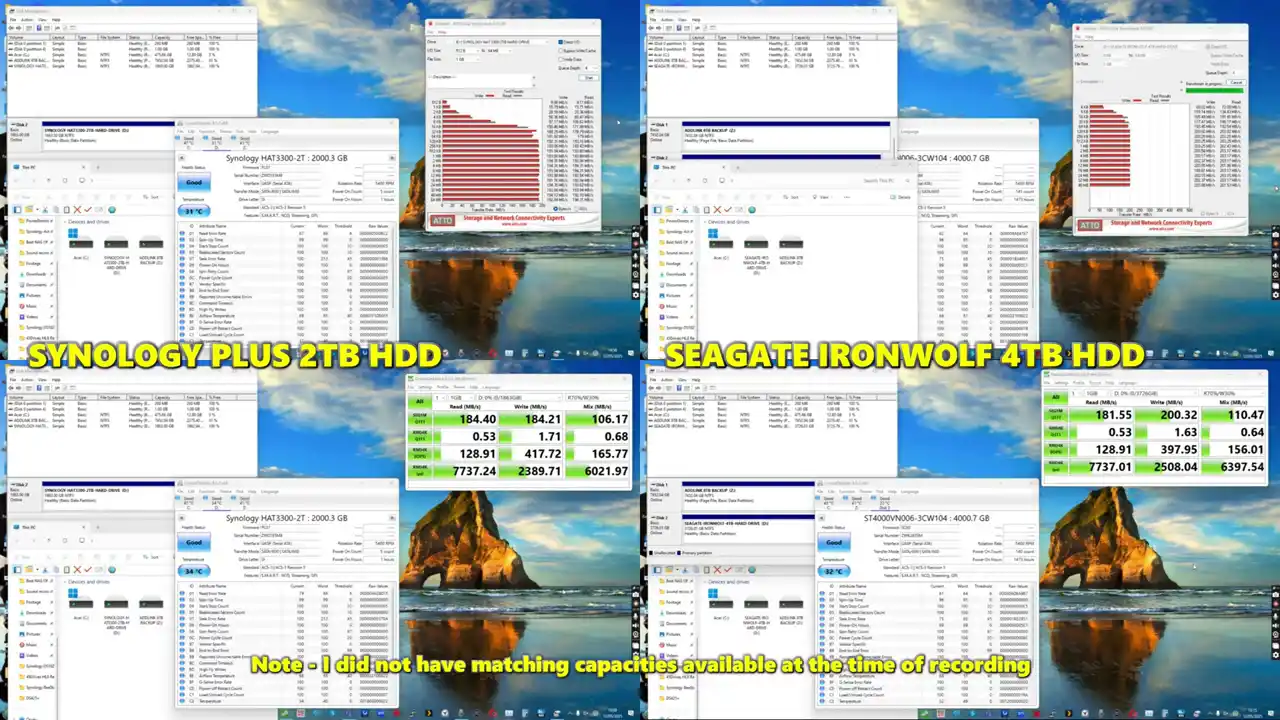
| Model | Capacity Range | Max Transfer Rate | Spindle Speed | Workload | MTBF | Class |
|---|---|---|---|---|---|---|
| Synology HAT3300 | 2–6TB | 202 MB/s | 5400/7200 RPM | 180 TB/yr | 1M hrs | Entry NAS |
| WD Red Plus | 2–14TB | 260 MB/s | 5400/7200 RPM | 180 TB/yr | 1M hrs | Entry NAS |
| Seagate IronWolf | 2–12TB | 210 MB/s | 5400/7200 RPM | 180 TB/yr | 1M hrs | Entry NAS |
| Synology HAT3310 | 8–16TB | 281 MB/s | 7200 RPM | 180 TB/yr | 1M hrs | Entry NAS |
| Synology HAT5300 | 4–20TB | 281 MB/s | 7200 RPM | 550 TB/yr | 2.5M hrs | Prosumer |
| IronWolf Pro | 2–24TB | 285 MB/s | 7200 RPM | 550 TB/yr | 2.5M hrs | Prosumer |
| WD Red Pro | 2–26TB | 287 MB/s | 7200 RPM | 550 TB/yr | 2.5M hrs | Prosumer |
| Synology HAS5300 | 8–20TB | 281 MB/s | 7200 RPM | 550 TB/yr | 2.5M hrs | Enterprise SAS |
| Seagate Exos | 12–24TB | 285 MB/s | 7200 RPM | 550 TB/yr | 2.5M hrs | Enterprise SAS |
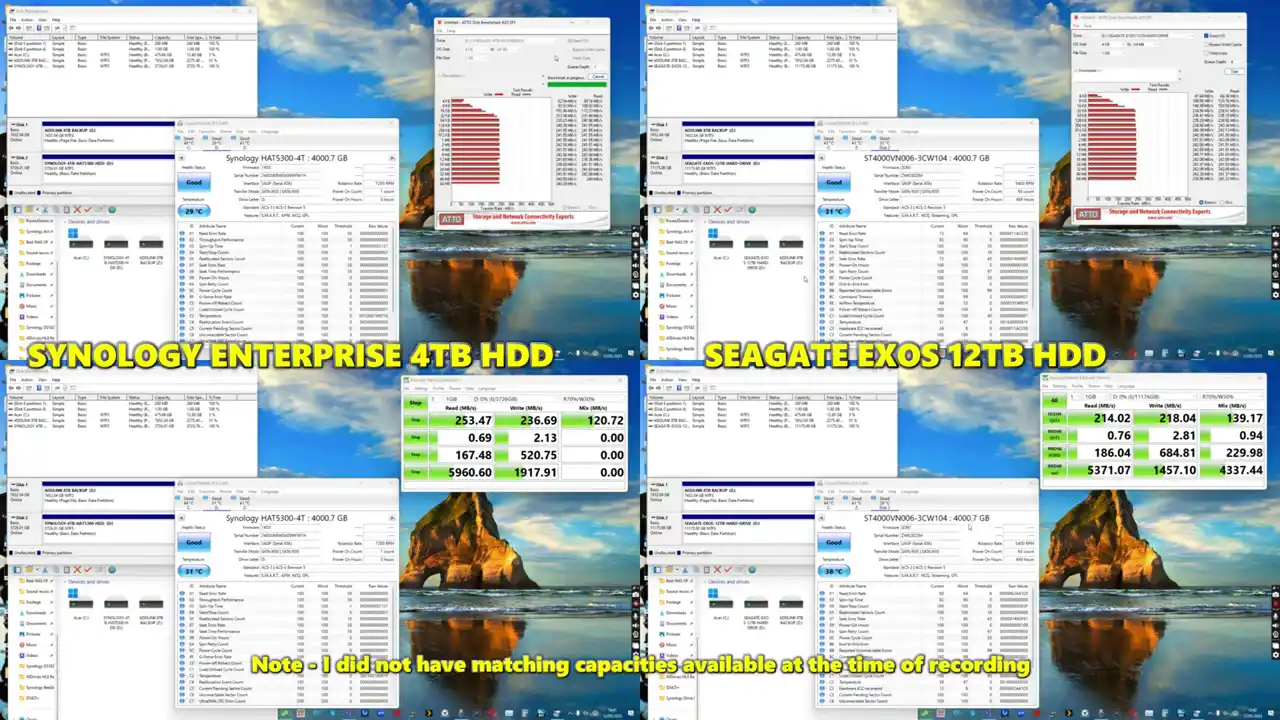
Performance parity continues with Synology’s SATA SSDs. The SAT5221 and SAT5210 series are very close in spec to Kingston’s DC600M drives, offering similar read/write speeds, IOPS performance, and endurance levels. The SAT5210 even pushes into ultra-DWPD territory, boasting up to 10,000 TBW and higher daily write thresholds, which is competitive in the enterprise space. If you need high write endurance and steady power loss protection, these drives tick the right boxes.
The gap, however, opens up in the NVMe tier. Synology’s SNV3400 and SNV3500 drives fall short compared to third-party NVMe SSDs like the WD Red SN700. While Synology focuses on endurance, PLP (power loss protection), and integration with DSM caching features, the performance ceiling on these drives is noticeably lower—both in terms of sequential throughput and IOPS. Capacities also top out at 800GB, while others offer 1TB and beyond with faster read/write performance. So if you’re after speed or larger NVMe caching pools, Synology’s current options may feel behind the curve.
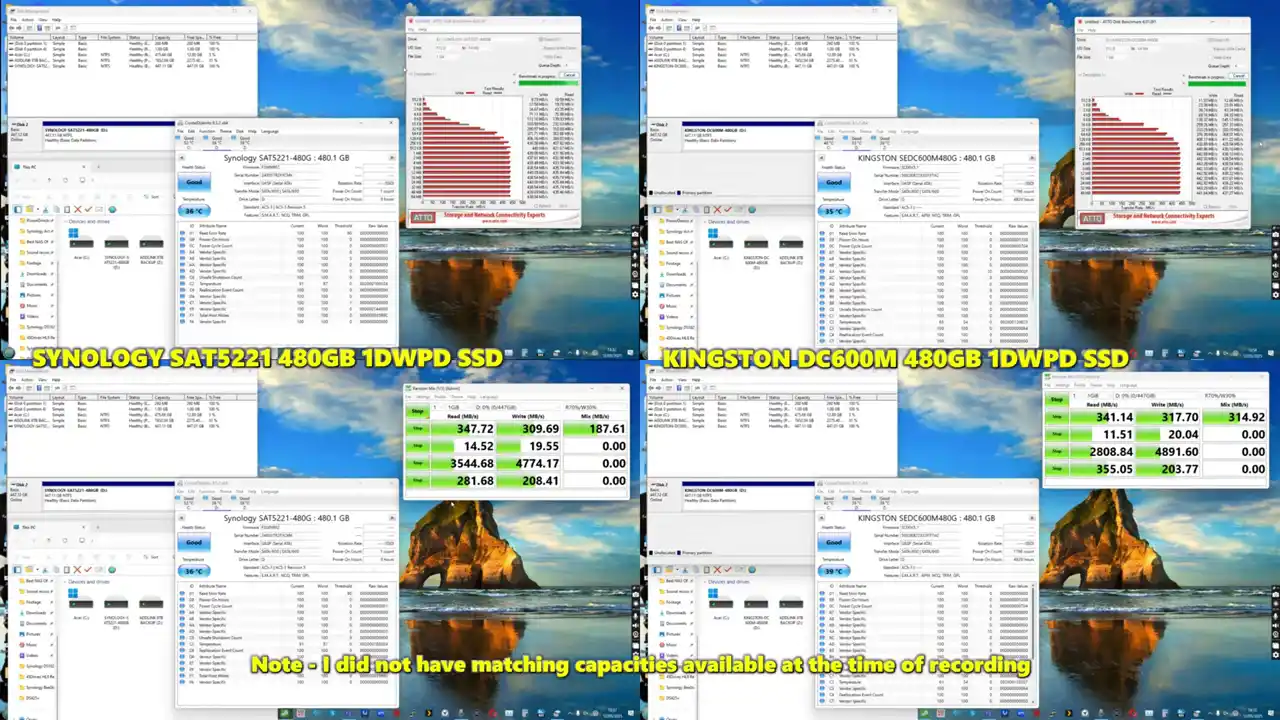
| Model | Interface | Capacity Range | Max R/W (MB/s) | IOPS (R/W) | Endurance (TBW) | Class |
|---|---|---|---|---|---|---|
| SAT5221 | SATA 6Gb/s | 480GB–3.84TB | 500 / 500 | 90K / 30K | 900–7,000 | Enterprise |
| SAT5210 | SATA 6Gb/s | 7TB | 530 / 500 | 97K / 50K | 10,000 | Enterprise (Ultra DWPD) |
| Kingston DC600M | SATA 6Gb/s | 480GB–7.68TB | 560 / 530 | 94K / 34–78K | 876–14,016 | Enterprise |
| SNV3400 | NVMe PCIe 3.0 | 400–800GB | 3,000 / 3,100 | 225K–400K / 45K–70K | 491–1,022 | Entry NVMe Cache |
| SNV3500 | NVMe PCIe 3.0 | 400–800GB | 3,000 / 3,100 | 225K–400K / 45K–70K | 491–1,022 | Entry NVMe + PLP |
In short, Synology’s drives generally deliver solid, reliable performance that matches their third-party foundations—but the benefits of full DSM compatibility come with a trade-off. While the SATA range holds its ground, the NVMe lineup is due for an update if Synology wants to stay competitive against higher-capacity, higher-speed SSDs now widely available elsewhere. If performance is your main concern, particularly for NVMe caching or flash-heavy tasks, third-party options may be a better fit unless full integration is a must-have.
 |
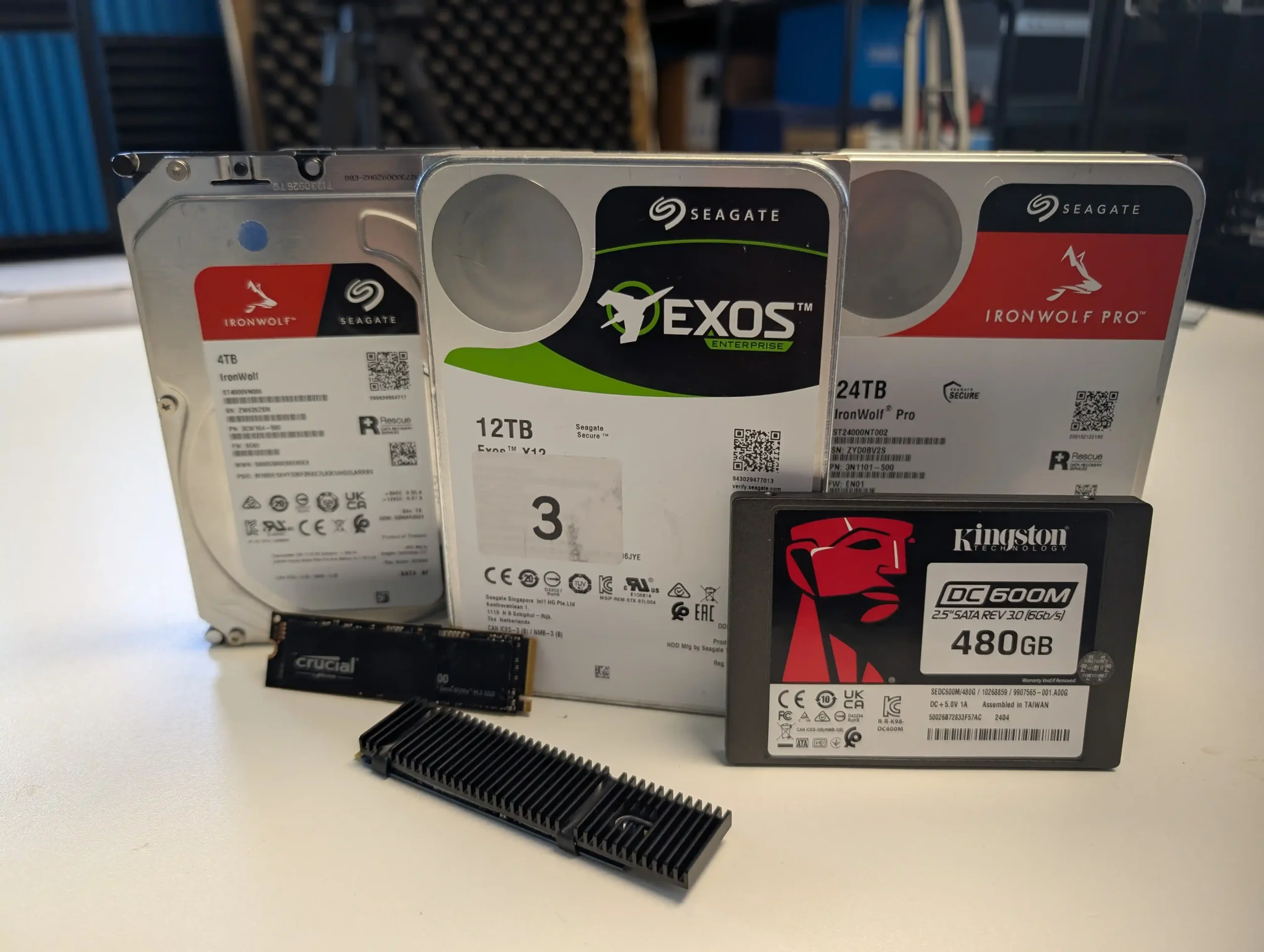 |
In reviewing Synology’s lineup of hard drives and SSDs, it’s clear that the hardware itself is solid—built on trusted OEM foundations and tuned to work seamlessly within DSM environments. From a compatibility and reliability standpoint, these drives do offer advantages, particularly for users who want an integrated, no-hassle deployment. That said, these benefits come with notable trade-offs. In many cases, Synology’s drives are mechanically identical to models from Seagate, Toshiba, or Phison, yet priced significantly higher—especially in the enterprise and NVMe tiers. While some of that premium may be justified by firmware-level integration, PLP, or simplified support paths, the cost disparity is hard to ignore for experienced users already comfortable with third-party hardware.
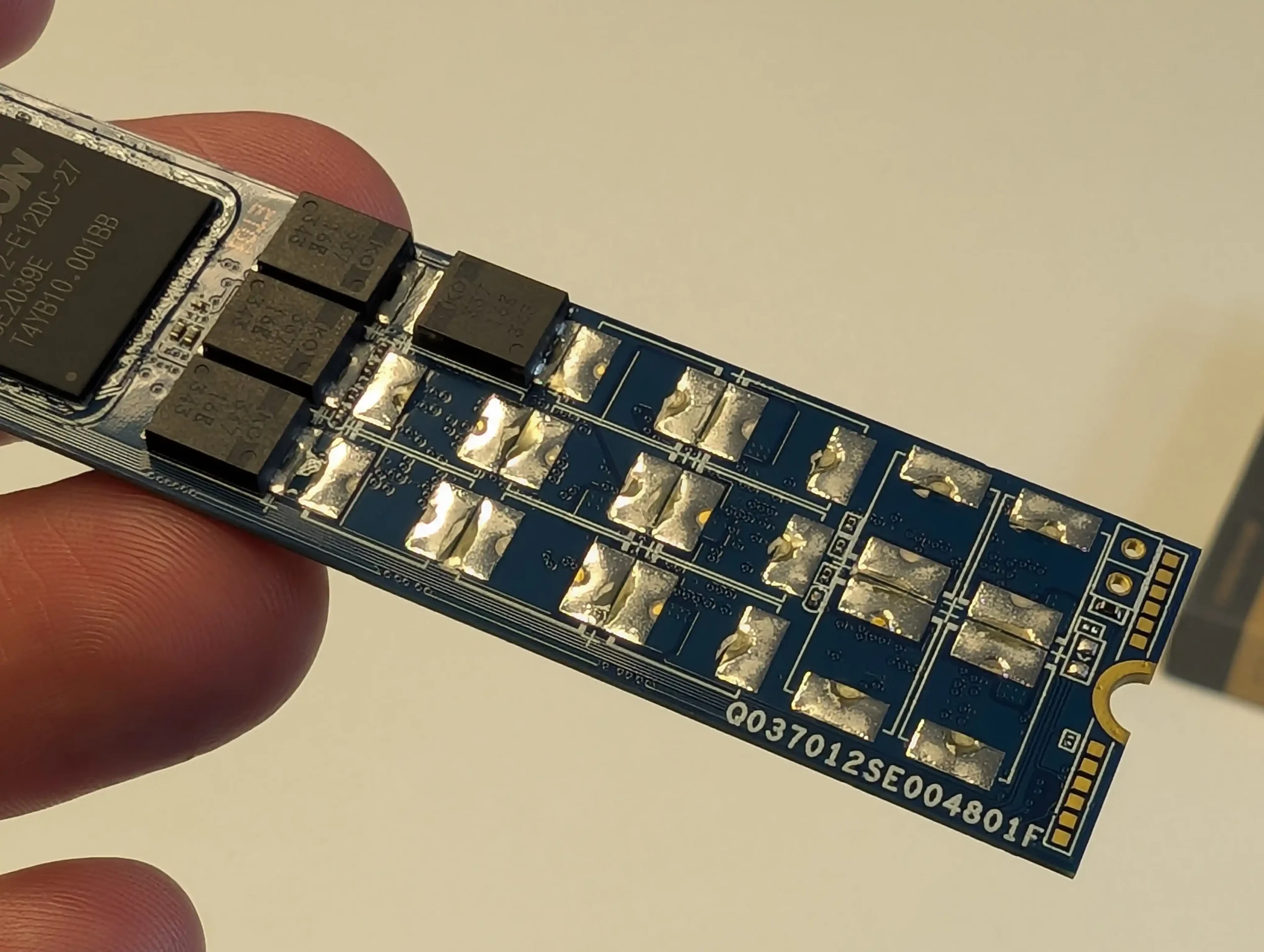
Ultimately, the decision to adopt Synology-branded drives will depend on your priorities. If you’re building a system where out-of-the-box compatibility, long-term support, and unified ecosystem control are paramount, Synology’s media may be a safe bet—albeit at a higher packaged price. But if your focus is on maximizing performance per dollar, scaling capacity, or customizing your setup beyond Synology’s verified list, third-party alternatives remain the more flexible and cost-effective choice. Until Synology expands their verified media list and adjusts regional pricing or availability, many users will continue to see these drives not as a value-add, but as an imposed requirement.
| Want to Support What We Do? Use the Links Below to Buy your NAS and/or HDD and SSD Media. Clicking these links will result in a small commission for anything you purchase, heading to me and Eddie @NASCompares and allows us to keep doing this! It’s just us two here and between this and ads, it’s the most passive way to keep us sailing! Thanks |
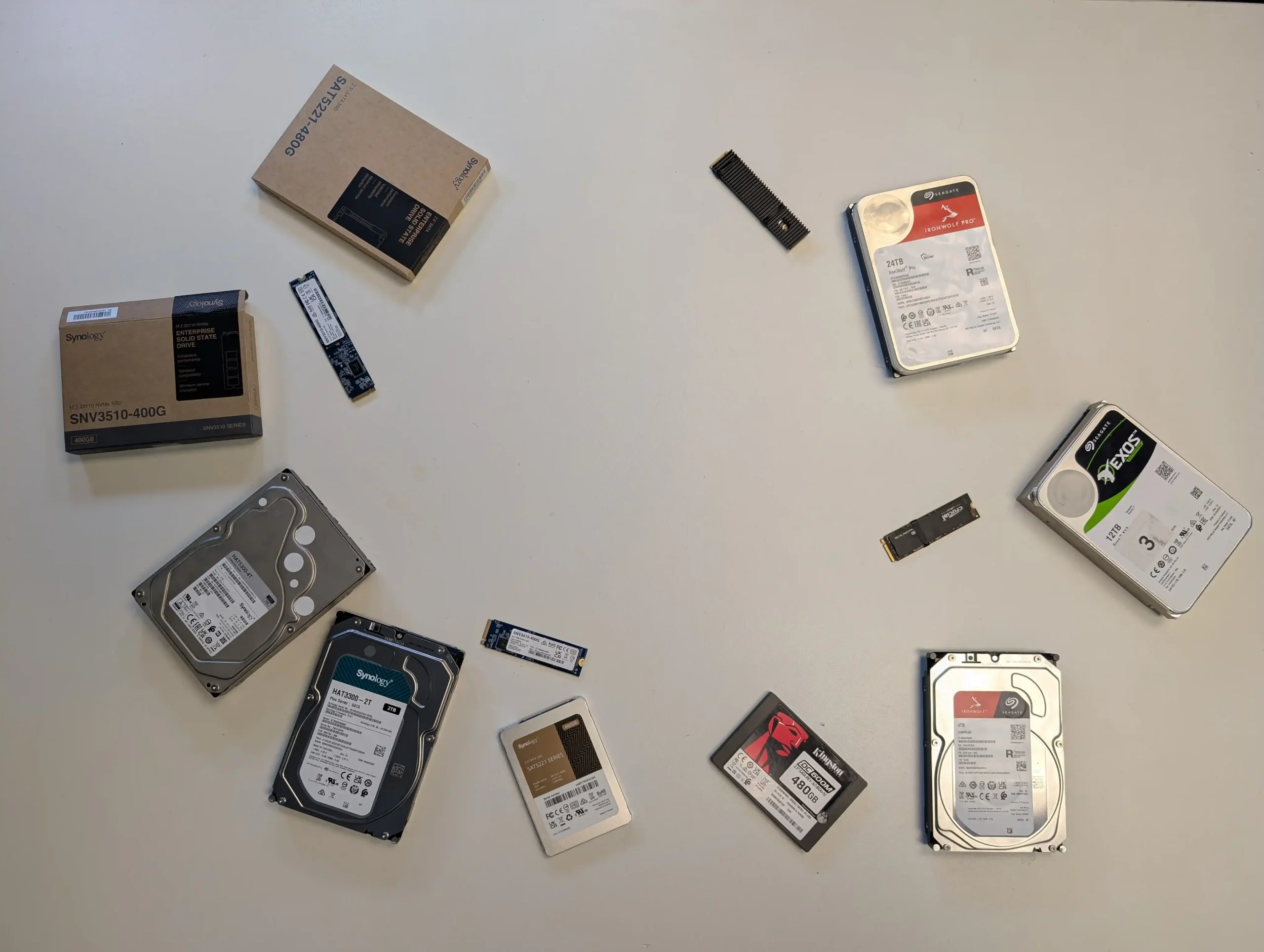
 SUBSCRIBE TO OUR NEWSLETTER
SUBSCRIBE TO OUR NEWSLETTER 
 Join Inner Circle
Join Inner Circle  Subscribe
Subscribe
This description contains links to Amazon. These links will take you to some of the products mentioned in today's content. As an Amazon Associate, I earn from qualifying purchases. Visit the NASCompares Deal Finder to find the best place to buy this device in your region, based on Service, Support and Reputation - Just Search for your NAS Drive in the Box Below
 Need Help?
Where possible (and where appropriate) please provide as much information about your requirements, as then I can arrange the best answer and solution to your needs. Do not worry about your e-mail address being required, it will NOT be used in a mailing list and will NOT be used in any way other than to respond to your enquiry.
[contact-form-7]
Need Help?
Where possible (and where appropriate) please provide as much information about your requirements, as then I can arrange the best answer and solution to your needs. Do not worry about your e-mail address being required, it will NOT be used in a mailing list and will NOT be used in any way other than to respond to your enquiry.
[contact-form-7]
 Ko-fi or old school Paypal. Thanks!To find out more about how to support this advice service check HEREIf you need to fix or configure a NAS, check Fiver
Have you thought about helping others with your knowledge? Find Instructions Here
Ko-fi or old school Paypal. Thanks!To find out more about how to support this advice service check HEREIf you need to fix or configure a NAS, check Fiver
Have you thought about helping others with your knowledge? Find Instructions Here

|
 |
 Alors que l’industrie s’apprêtait à tourner la page de la DDR4, un retournement de situation inattendu vient prolonger sa durée de fin.
Alors que l’industrie s’apprêtait à tourner la page de la DDR4, un retournement de situation inattendu vient prolonger sa durée de fin.
Cet article Fin de la DDR4, Samsung et SK Hynix font machine arrière a été publié en premier par GinjFo.
Samsung a présenté le Galaxy Z Flip 7, un smartphone pliant à 1 100 dollars doté d’une batterie plus grande, d’un design affiné, d’un écran externe élargi, de la puce Exynos 2500, et bénéficiant de sept ans de mises à jour logicielles.
L’article Galaxy Z Flip 7 : ce détail vous a échappé, c’est pourtant le plus important est apparu en premier sur Tom’s Hardware.
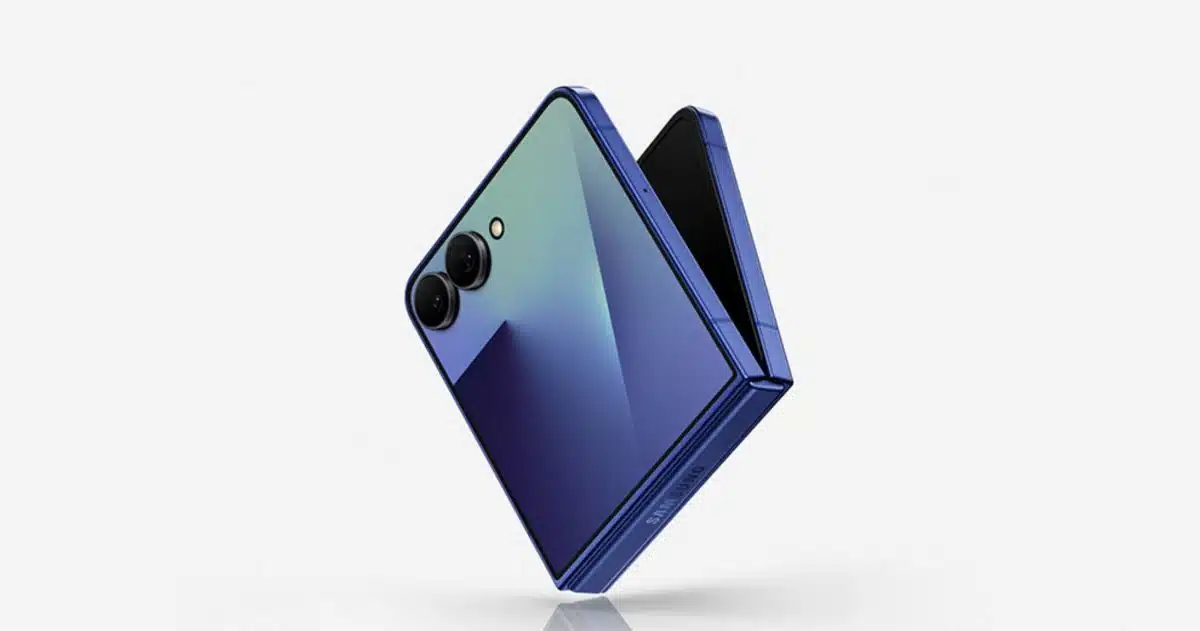

Samsung a perdu un client majeur au profit de TSMC qui grave maintenant les puces d'un géant américain du smartphone, alors que le sud-coréen a amélioré son processus de gravure en 2 nm.
L’article Samsung a perdu un client majeur et s’inquiète sérieusement est apparu en premier sur Tom’s Hardware.
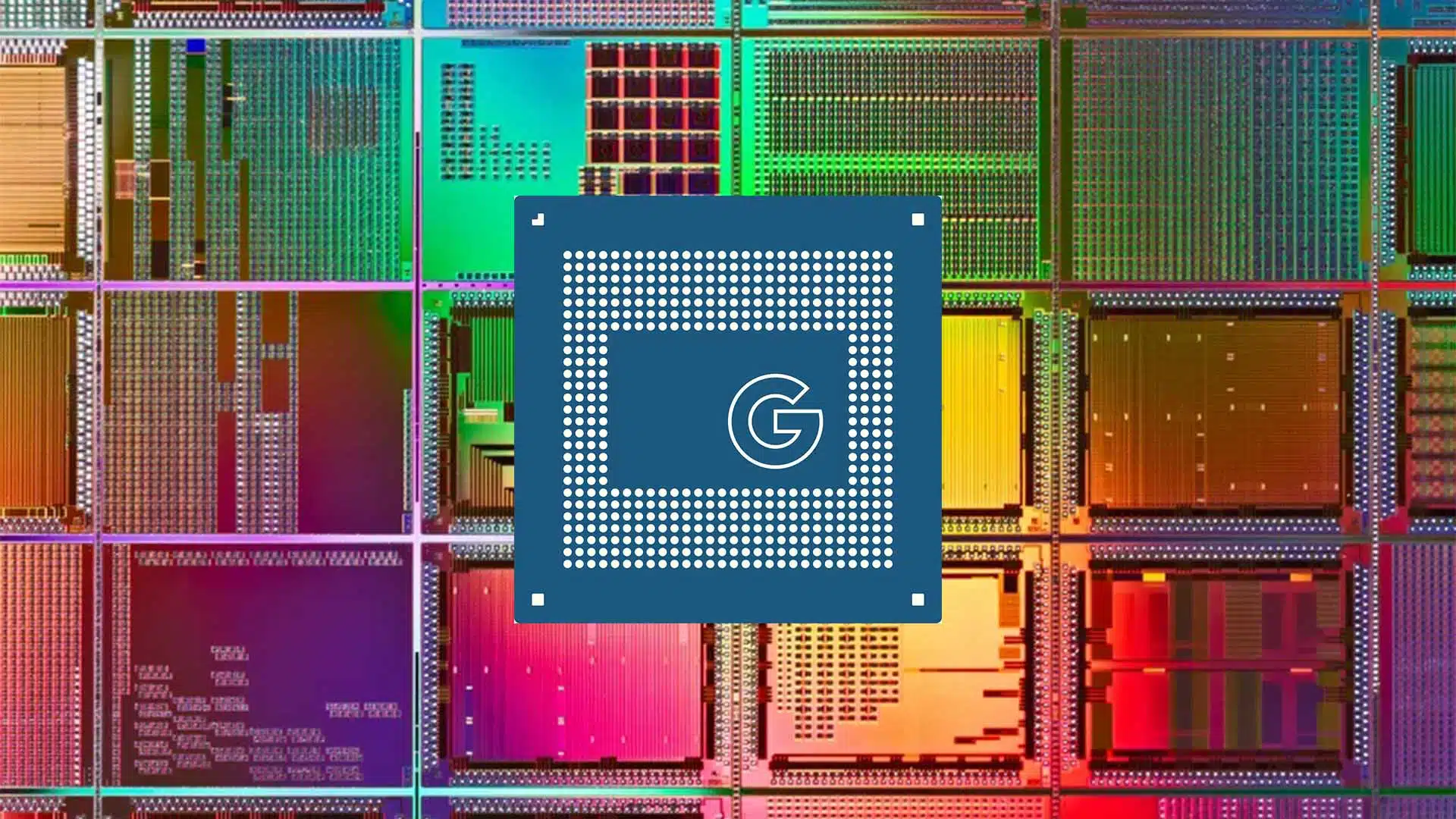
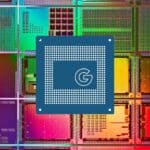
Si tout le monde propose des SoCs avec 8 cœurs sur les smartphones, Samsung pourrait débarquer avec une puce 10 cœurs, boostant ainsi drastiquement les performances des appareils.
L’article Ce constructeur serait le premier à proposer un SoC 10 cœurs pour smartphones est apparu en premier sur Tom’s Hardware.
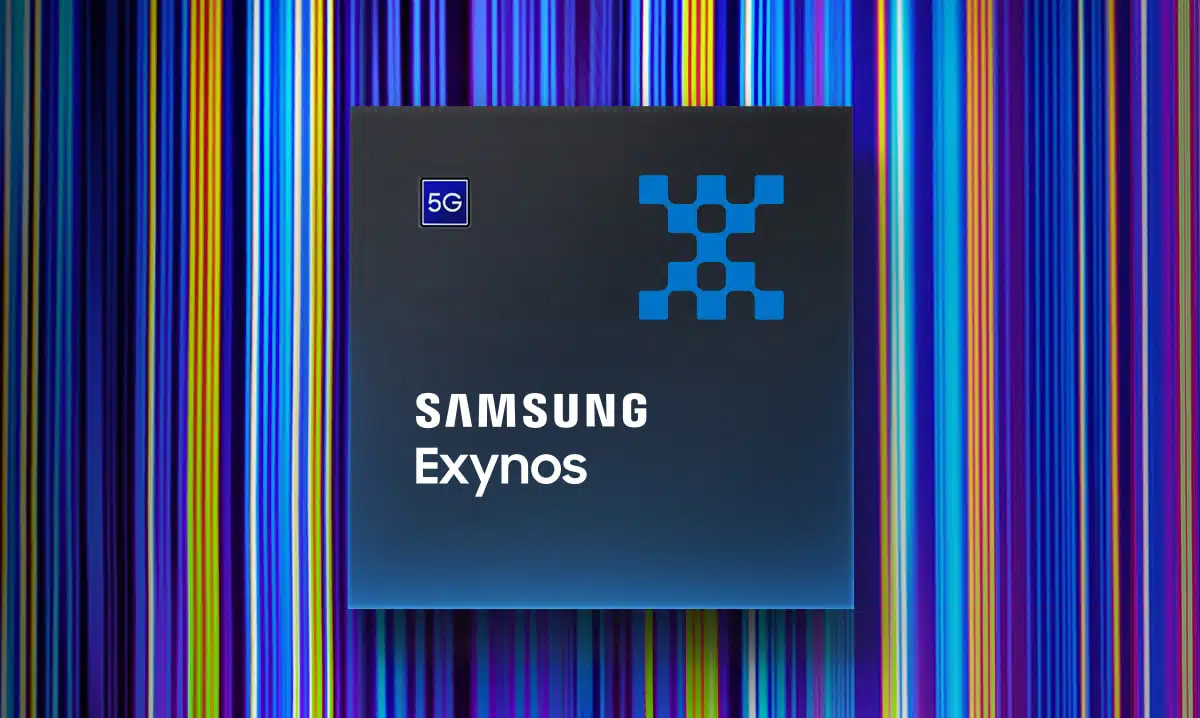
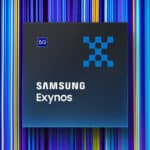
Le Galaxy S25 Edge a passé le test ultime, celui de la torsion. Plie-t-il aussi facilement que l'iPhone 6 Plus à l'époque ? La réponse n'est pas si évidente, Samsung a fait quelque chose d'assez costaud !
L’article Le Galaxy S25 Edge est-il si solide ? Un youtubeur a tenté de le tordre est apparu en premier sur Tom’s Hardware.
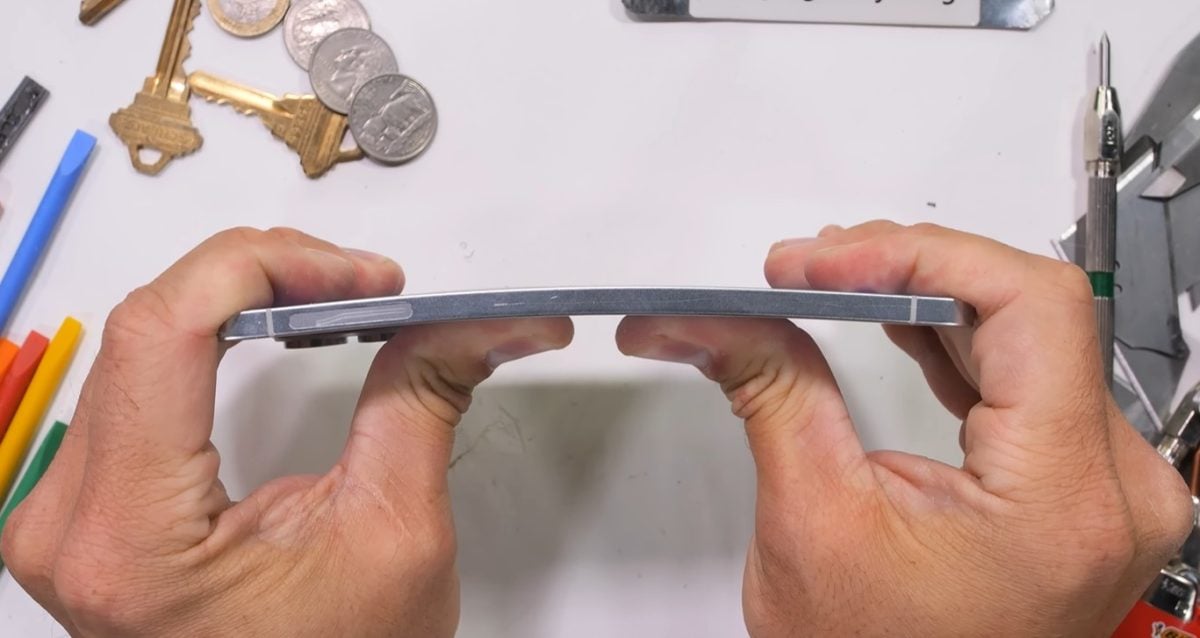
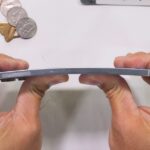
One UI 8 sera prochainement disponible, voici 10 nouvelles fonctionnalités que vous devriez apprécier pour votre smartphone Galaxy.
L’article One UI 8 en 10 nouveautés, voici ce qui vous attend sur votre smartphone Galaxy est apparu en premier sur Tom’s Hardware.


Samsung prévoit de remplacer le silicium par du verre dans certains composants à partir de 2028 pour améliorer les performances, réduire les coûts de fabrication des puces IA et renforcer sa position dans le secteur des semi-conducteurs.
L’article Samsung proposerait de nouvelles puces IA révolutionnaires en 2028 est apparu en premier sur Tom’s Hardware.
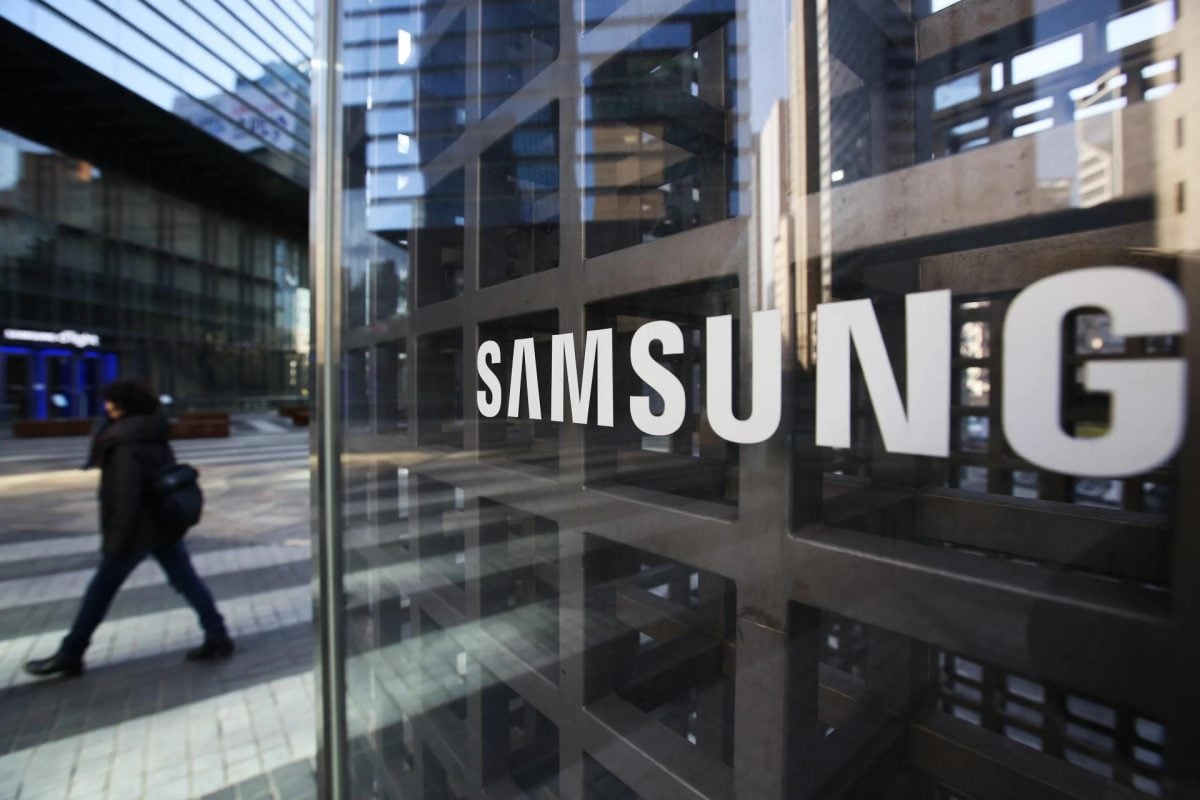
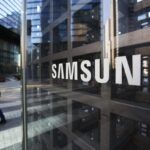
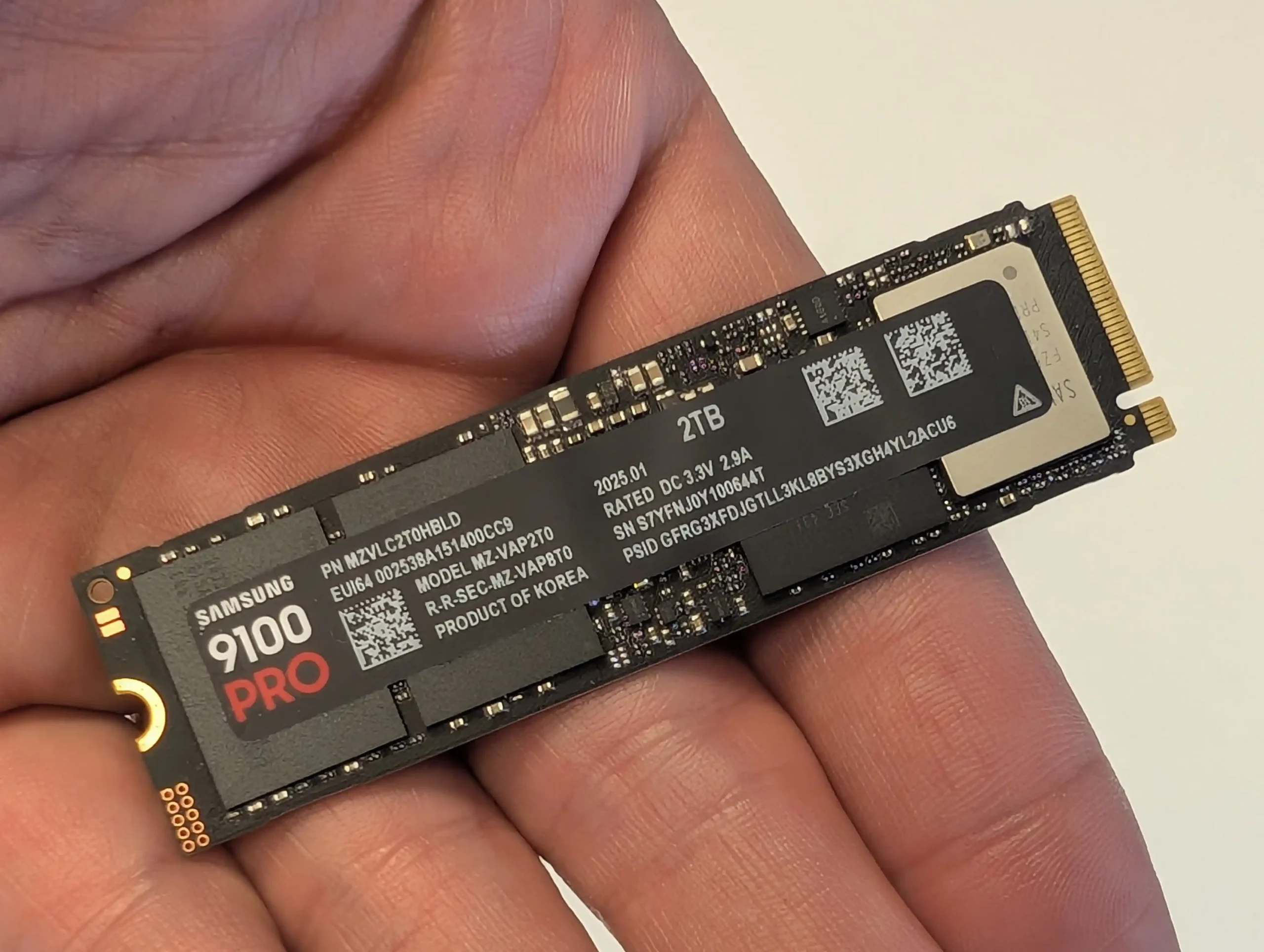
Samsung has officially entered the PCIe 5.0 market with the release of the 9100 PRO Series SSD, its first high-performance consumer Gen 5 NVMe SSD. Unlike previous Samsung SSD releases that focused on mainstream users, this drive is built for professionals, power users, and AI-driven workloads. Featuring sequential read speeds of up to 14,800 MB/s and write speeds reaching 13,400 MB/s, the 9100 PRO is aimed at content creators, data analysts, and enterprise users who require fast and reliable storage solutions. Available in 1TB, 2TB, 4TB, and an upcoming 8TB model, this SSD is one of the highest-capacity consumer NVMe drives ever released by Samsung. With Samsung’s in-house controller, V-NAND TLC (V8) flash memory, and LPDDR4X DRAM-based caching, the 9100 PRO is designed to offer both high-speed data transfer and long-term durability. Power efficiency has also been improved by up to 49% compared to its predecessor, the 990 PRO, making it a more energy-conscious choice for intensive applications. However, despite its impressive technical specifications, the 9100 PRO enters a market where PCIe 5.0 SSDs have been available for nearly two years from competitors such as Seagate and Crucial. This review will assess whether Samsung’s late entry to the Gen 5 SSD market delivers a significant performance advantage or whether its delayed release puts it at a competitive disadvantage. In this review, we will examine the hardware and design of the 9100 PRO, compare it against Samsung’s previous generation 990 EVO and EVO Plus SSDs, and analyze its performance across multiple benchmarks to determine if it truly offers a measurable advantage over existing PCIe 5.0 SSDs. Finally, we will consider its pricing and availability, and whether this drive is a worthwhile investment for users looking to upgrade their storage solutions in 2025.
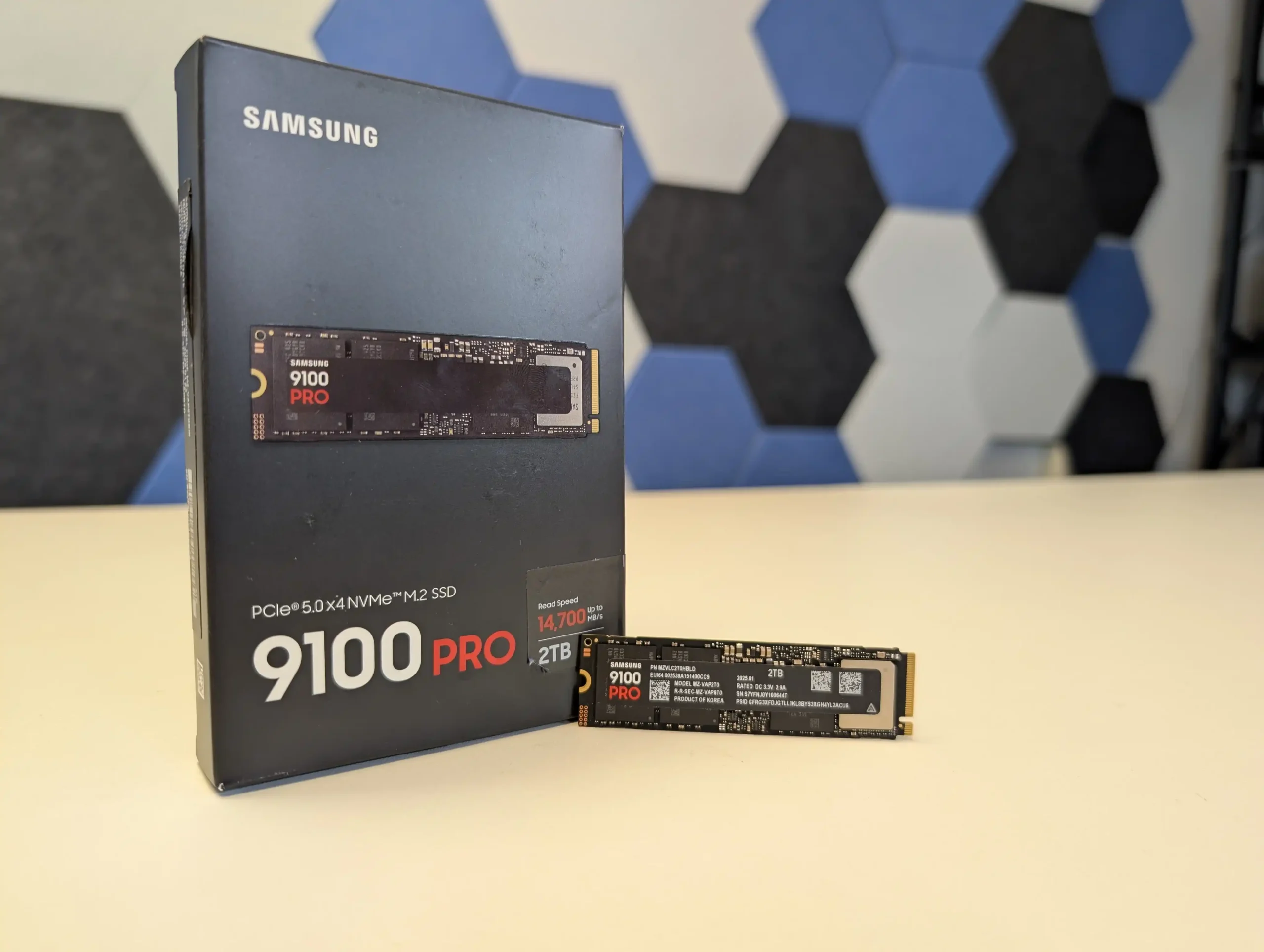
The Samsung 9100 PRO SSD is a true PCIe 5.0 Gen4x4 drive, delivering industry-leading speeds of up to 14,800 MB/s read and 13,400 MB/s write, making it one of the fastest consumer SSDs available. Unlike many competitors using third-party controllers from Phison and Micron NAND, the 9100 PRO is fully in-house, featuring Samsung’s Presto PCIe 5.0 controller and V-NAND TLC (V8) for tighter hardware-firmware integration, improved power efficiency (up to 49% better than earlier Gen5 SSDs), and high endurance (up to 4,800 TBW on the 8TB model). Random performance is excellent, reaching 2,200K IOPS read and 2,600K IOPS write, making it a strong choice for AI workloads, video production, and large-scale data processing. However, heat remains a challenge, as the drive can reach 81°C under sustained workloads, requiring active cooling or Samsung’s optional heatsink model. Pricing is premium, with some PCIe 5.0 competitors offering similar speeds at lower costs due to earlier releases. Additionally, while Samsung has a strong reputation for SSD reliability, firmware issues in past models like the 990 PRO and 980 PRO have left some users cautious. Despite these drawbacks, the 9100 PRO stands out as one of the most refined PCIe 5.0 SSDs, offering a high-endurance, fully in-house solution for demanding users.
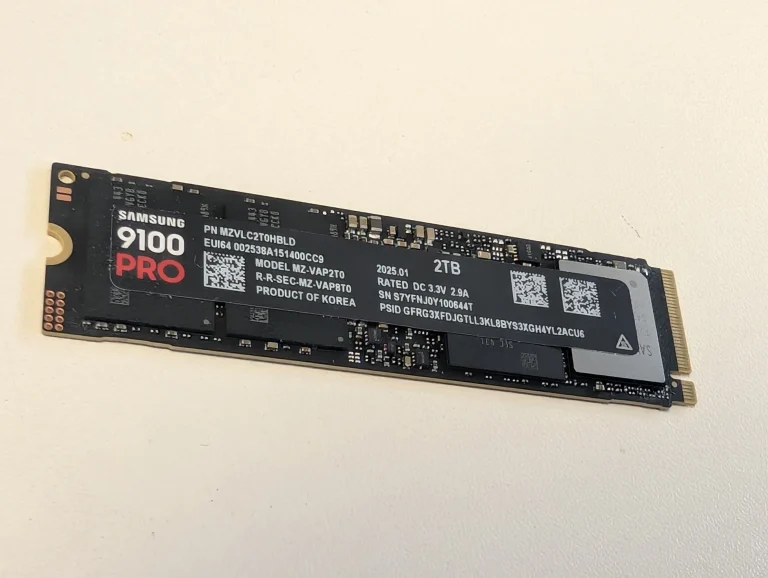

8.2
 Industry-Leading Speed – Offers sequential read speeds up to 14,800 MB/s and write speeds up to 13,400 MB/s, making it one of the fastest consumer SSDs available.
Industry-Leading Speed – Offers sequential read speeds up to 14,800 MB/s and write speeds up to 13,400 MB/s, making it one of the fastest consumer SSDs available.
 Fully In-House Design – Uses Samsung’s proprietary Presto PCIe 5.0 controller and V-NAND TLC (V8), avoiding reliance on third-party controllers like Phison and Micron NAND, ensuring better hardware-firmware integration.
Fully In-House Design – Uses Samsung’s proprietary Presto PCIe 5.0 controller and V-NAND TLC (V8), avoiding reliance on third-party controllers like Phison and Micron NAND, ensuring better hardware-firmware integration.
 High Endurance Rating – Provides up to 4,800 TBW on the 8TB model, making it ideal for high-intensity workloads like AI computing, video editing, and large-scale data transfers.
High Endurance Rating – Provides up to 4,800 TBW on the 8TB model, making it ideal for high-intensity workloads like AI computing, video editing, and large-scale data transfers.
 Improved Power Efficiency – Samsung claims 49% better power efficiency compared to previous PCIe 5.0 SSDs, reducing heat output and improving overall energy consumption.
Improved Power Efficiency – Samsung claims 49% better power efficiency compared to previous PCIe 5.0 SSDs, reducing heat output and improving overall energy consumption.
 Strong Random Performance – With up to 2,200K IOPS random read and 2,600K IOPS random write, it excels in workloads that involve frequent small file transactions, such as databases, virtual machines, and AI training models.
Strong Random Performance – With up to 2,200K IOPS random read and 2,600K IOPS random write, it excels in workloads that involve frequent small file transactions, such as databases, virtual machines, and AI training models.
 Multiple Capacity Options – Available in 1TB, 2TB, 4TB, and 8TB, making it one of the first consumer PCIe 5.0 SSDs with an 8TB variant.
Multiple Capacity Options – Available in 1TB, 2TB, 4TB, and 8TB, making it one of the first consumer PCIe 5.0 SSDs with an 8TB variant.
 Heatsink Version Available – Samsung provides an optional D8-compliant heatsink, ensuring better thermal regulation for sustained performance, especially for gaming consoles like PlayStation 5.
Heatsink Version Available – Samsung provides an optional D8-compliant heatsink, ensuring better thermal regulation for sustained performance, especially for gaming consoles like PlayStation 5.
 A True Gen 5 SSD – Unlike the safe and comparatively underwhelming Samsung 990 EVO Plus, which only utilized PCIe 5.0 x2 lanes, the 9100 PRO fully utilizes PCIe 5.0 x4, delivering real next-generation speeds.
A True Gen 5 SSD – Unlike the safe and comparatively underwhelming Samsung 990 EVO Plus, which only utilized PCIe 5.0 x2 lanes, the 9100 PRO fully utilizes PCIe 5.0 x4, delivering real next-generation speeds.
 High Thermal Output – Can reach 81°C under sustained workloads, requiring adequate cooling solutions, either through the heatsink model or third-party cooling options.
High Thermal Output – Can reach 81°C under sustained workloads, requiring adequate cooling solutions, either through the heatsink model or third-party cooling options.
 Premium Pricing – Enters a PCIe 5.0 market where some competitors offer similar speeds at lower prices due to their earlier release, making it a costly investment for budget-conscious users.
Premium Pricing – Enters a PCIe 5.0 market where some competitors offer similar speeds at lower prices due to their earlier release, making it a costly investment for budget-conscious users.
 Samsung’s Firmware History – While Samsung has a strong reputation for SSD reliability, previous firmware issues in the 990 PRO and 980 PRO raised concerns, making some users cautious about potential long-term stability.
Samsung’s Firmware History – While Samsung has a strong reputation for SSD reliability, previous firmware issues in the 990 PRO and 980 PRO raised concerns, making some users cautious about potential long-term stability.
Where to Buy a Product





![]()
![]()

VISIT RETAILER ➤






![]()
![]()

VISIT RETAILER ➤
If you are thinking of buying the Samsung 9100 Pro SSD and this article helped? If so, please use the links below as it results in us at NASCompares receiving an affiliate fee from Amazon:
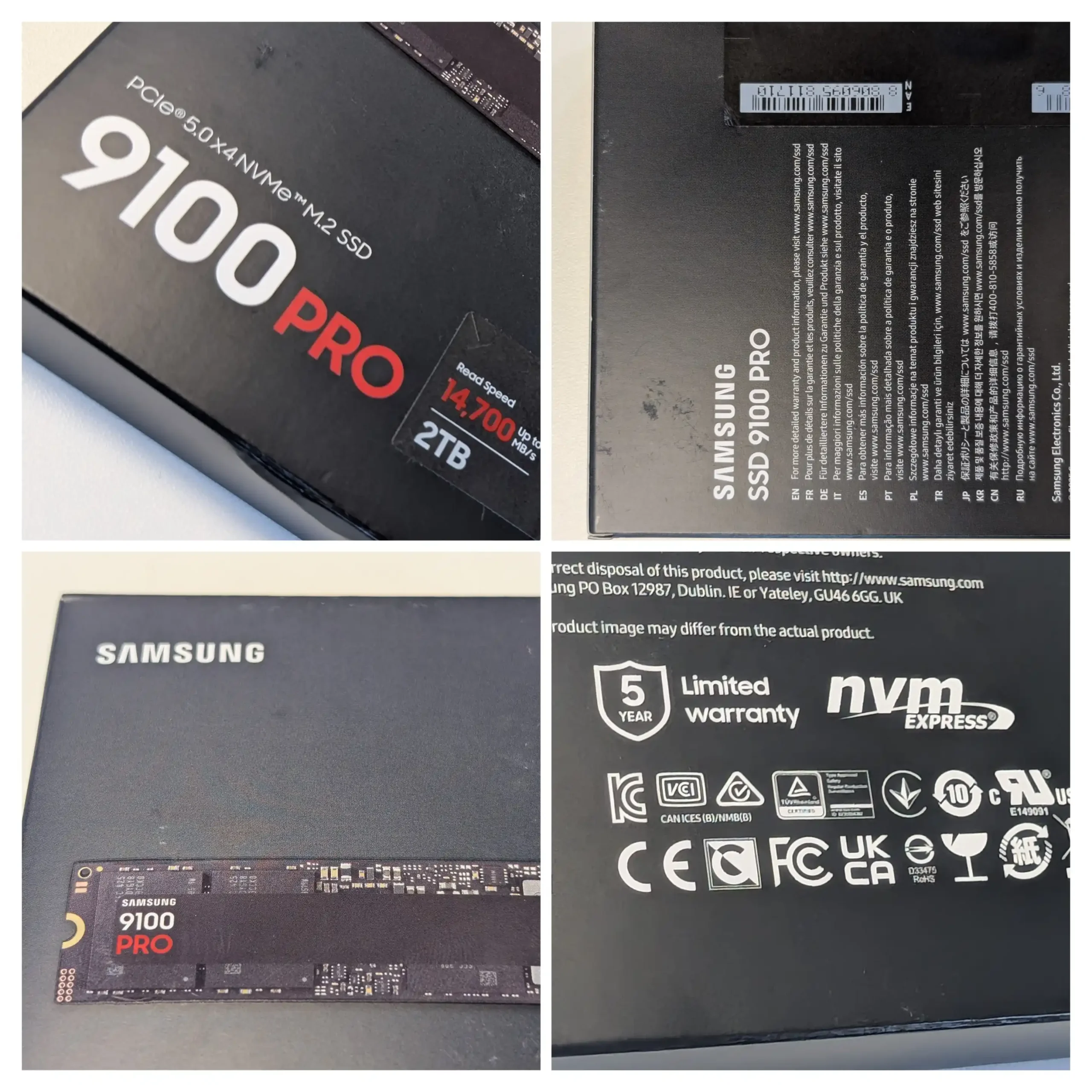
The Samsung 9100 PRO SSD follows a standard M.2 2280 form factor, making it compatible with most modern motherboards and laptops that support PCIe 5.0. The PCB layout varies by capacity, with the 1TB and 2TB models featuring NAND chips only on one side, while the 4TB and 8TB versions have NAND chips on both sides of the PCB. Unlike previous Samsung SSDs, such as the 990 EVO, which featured single-sided designs for improved compatibility in laptops, the higher-capacity 9100 PRO models require additional NAND space, making them better suited for desktops and high-performance workstations.
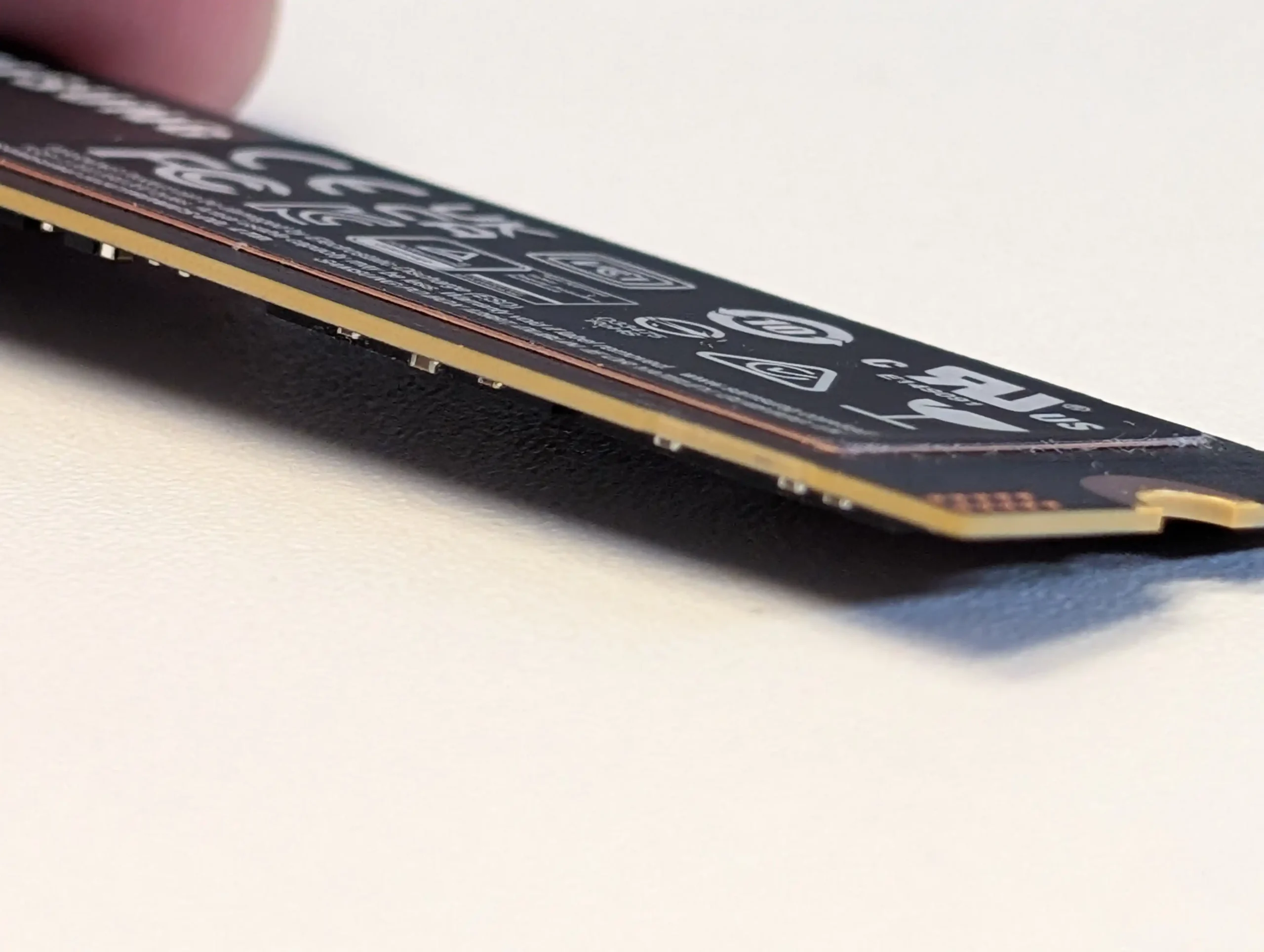
The drive also includes a thermal pad on the back, which assists in heat dissipation when used with compatible motherboard heatsinks. Samsung offers a pre-installed heatsink variant for improved temperature management, utilizing a PCI-SIG D8-compliant design for the 1TB, 2TB, and 4TB models, while the 8TB heatsink version features a thicker 11.25mm design for enhanced cooling, making it compatible with PlayStation 5 storage expansion requirements.
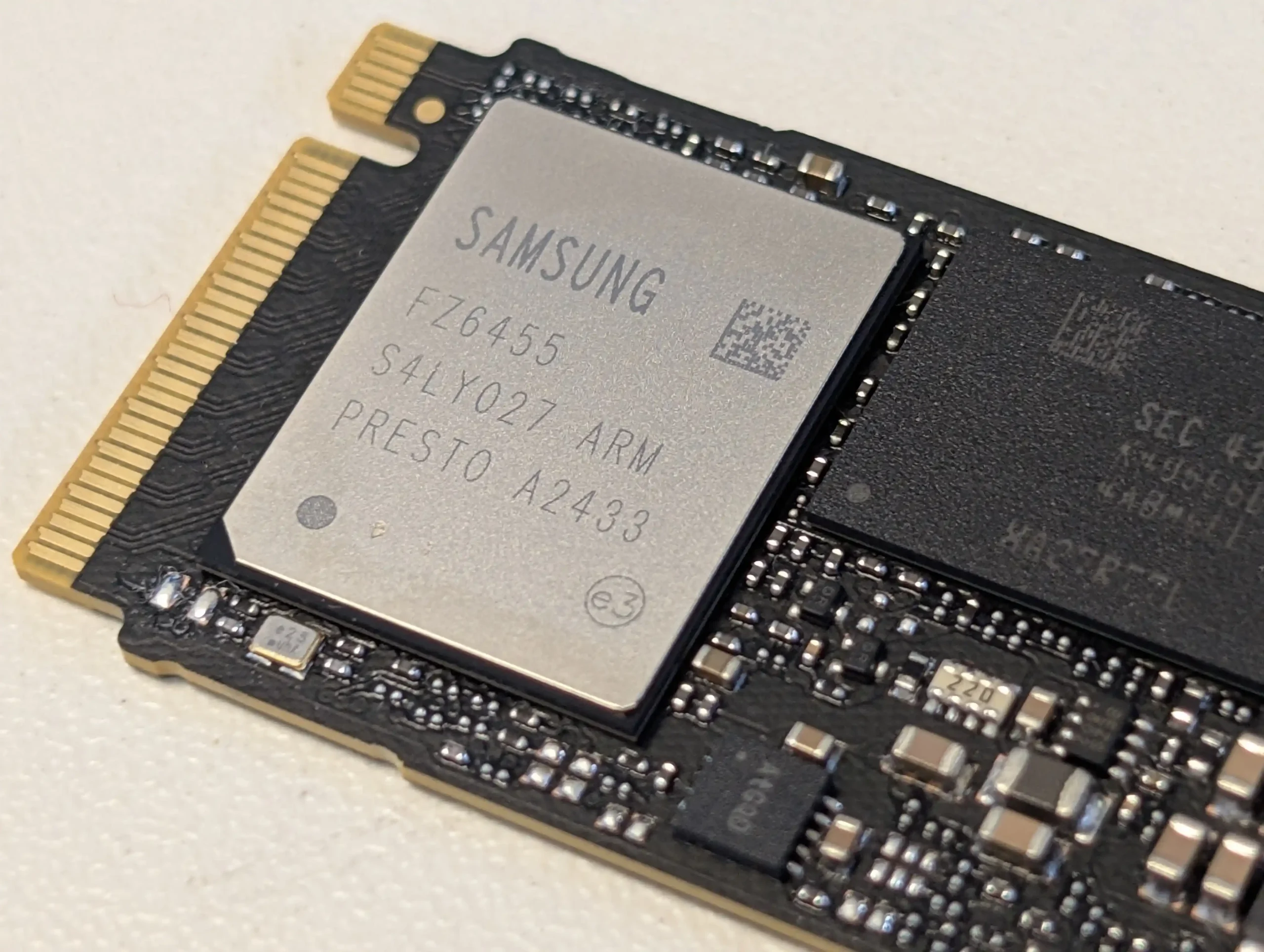
At the core of the 9100 PRO SSD is Samsung’s Presto PCIe 5.0 controller, which represents a significant advancement over previous controllers used in Samsung SSDs. This custom in-house design allows the 9100 PRO to achieve nearly full PCIe 5.0 bandwidth saturation, enabling up to 14,800 MB/s read and 13,400 MB/s write speeds. Unlike the 990 EVO, which used a more power-efficient but limited PCIe 4.0 controller, the 9100 PRO benefits from an advanced controller architecture that enhances throughput and reduces latency.
| Specification | Samsung 9100 PRO |
|---|---|
| Interface | PCIe 5.0 x4, NVMe 2.0 |
| Form Factor | M.2 (2280) / M.2 (2280 with Heatsink) |
| Controller | Samsung Presto PCIe 5.0 Controller |
| NAND Type | Samsung V-NAND TLC (V8, 3-bit MLC) |
| DRAM Cache | 1GB – 8GB LPDDR4X (Varies by Capacity) |
| Sequential Read (MB/s) | Up to 14,800 |
| Sequential Write (MB/s) | Up to 13,400 |
| Random Read (IOPS, QD32) | Up to 2,200K |
| Random Write (IOPS, QD32) | Up to 2,600K |
| Power Consumption (Active, W) | 7.6W – 9.0W |
| Idle Power Consumption (mW) | 4.0mW – 6.5mW |
| Total Bytes Written (TBW) | 600 TB (1TB) – 4,800 TB (8TB) |
| Warranty | 5-Year Limited Warranty |
| Available Capacities | 1TB, 2TB, 4TB, 8TB |
| Heatsink Option | Yes (D8-Compliant, 8TB is 11.25mm thick) |
| TurboWrite Cache Size | 114GB (1TB), 226GB (2TB), 442GB (4TB), TBD (8TB) |
Built on a 5nm process, this controller lowers power consumption compared to earlier PCIe 5.0 SSDs, improves thermal efficiency, and integrates advanced ECC and wear-leveling algorithms for better long-term reliability. Additionally, Samsung’s Presto controller features a larger DRAM buffer and optimized NAND channel management, allowing the 9100 PRO to deliver high sustained speeds under extended workloads.
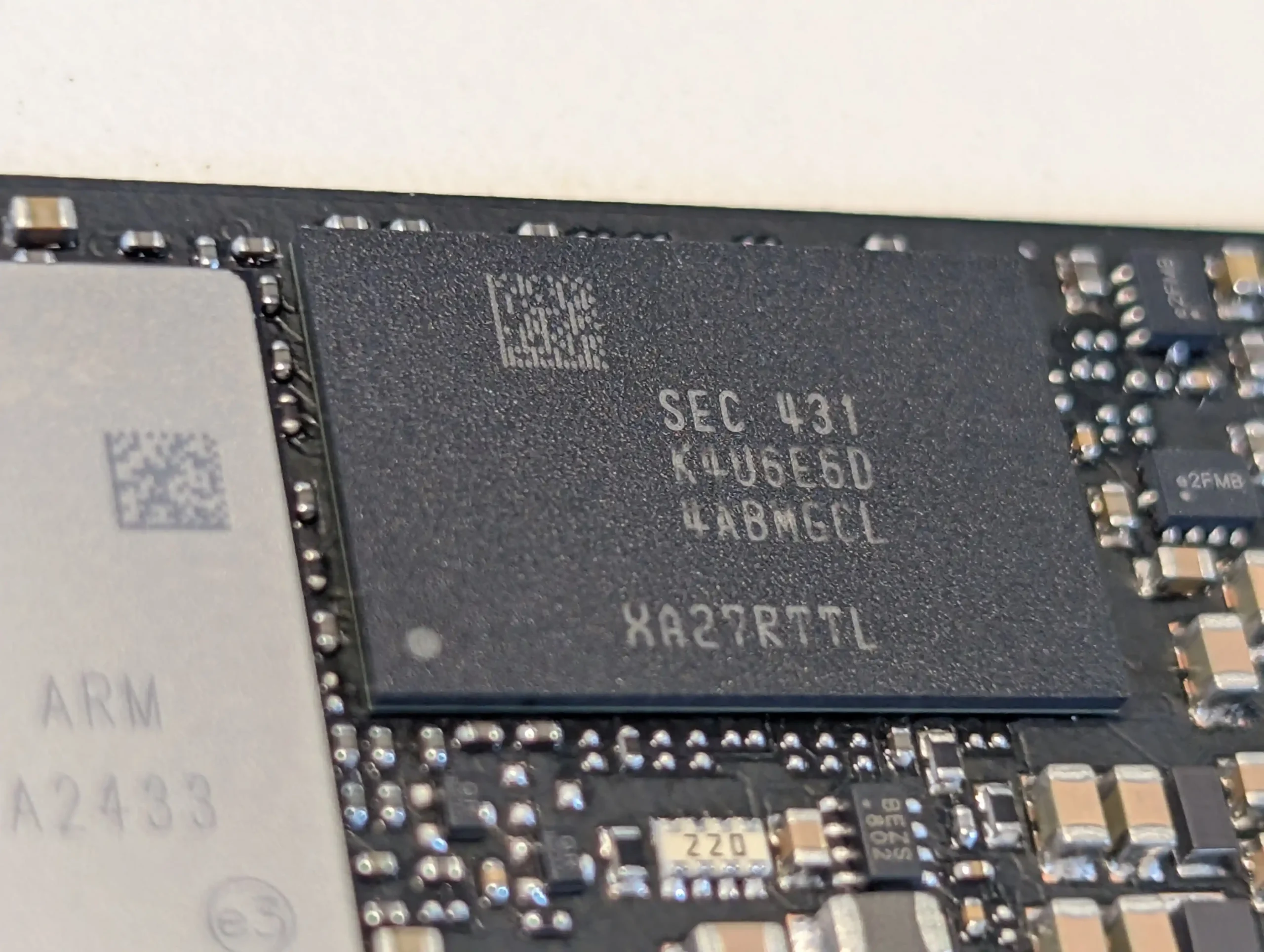
Unlike the 990 EVO and 990 EVO Plus, which were DRAM-less SSDs relying on Host Memory Buffer (HMB) technology, the Samsung 9100 PRO integrates dedicated LPDDR4X DRAM, providing better caching and improved sustained write performance. The amount of DRAM scales with the drive’s capacity, with 1GB for 1TB models, 2GB for 2TB, 4GB for 4TB, and 8GB for 8TB.
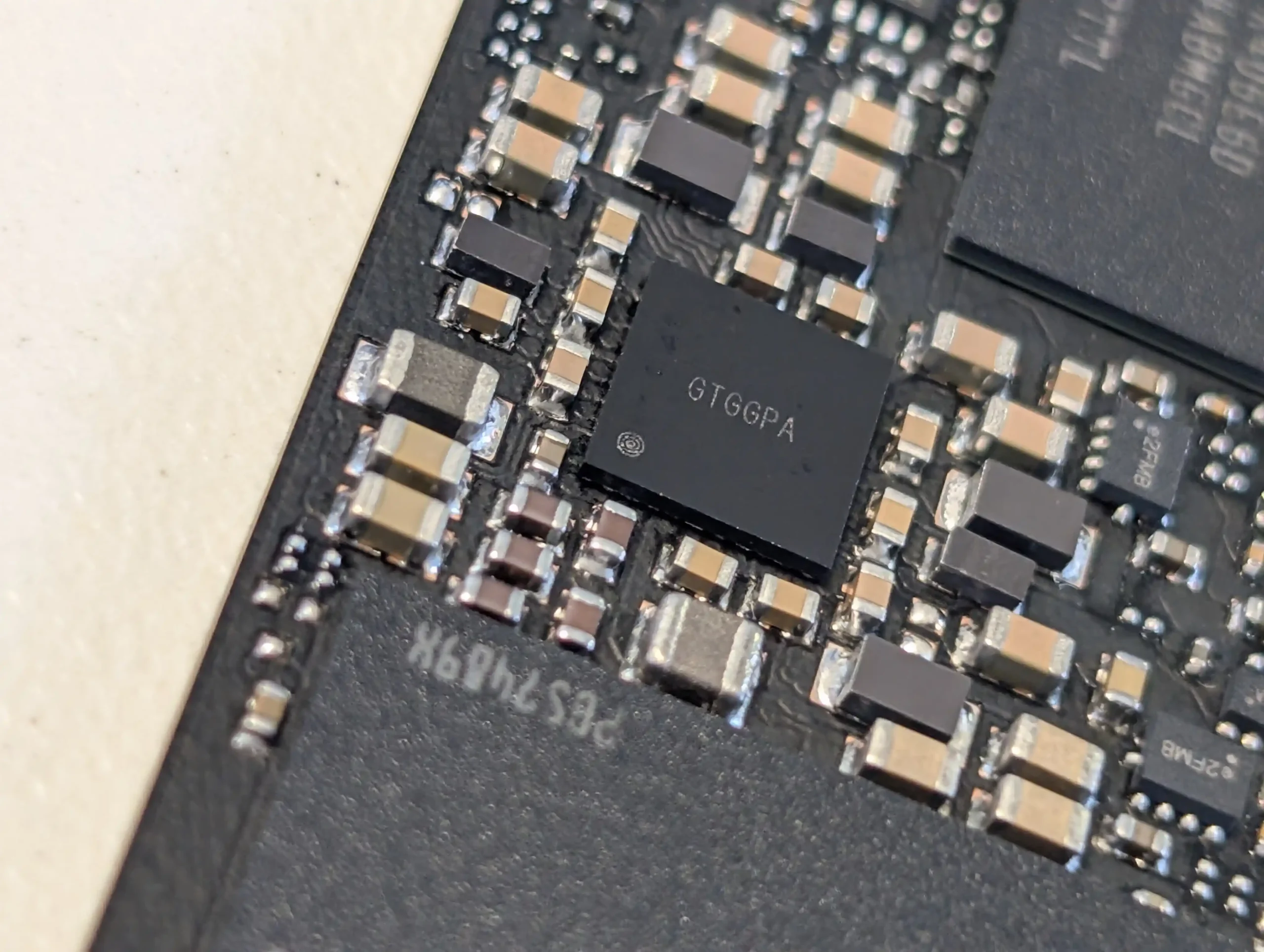
This ensures that larger models handle large file transfers, database workloads, and AI-driven tasks more efficiently. The Presto controller’s enhanced memory mapping further improves the effectiveness of DRAM caching, ensuring lower latency and higher sustained write speeds. This is a notable advantage over competing PCIe 5.0 SSDs, many of which cut costs by removing DRAM and relying on slower caching solutions.
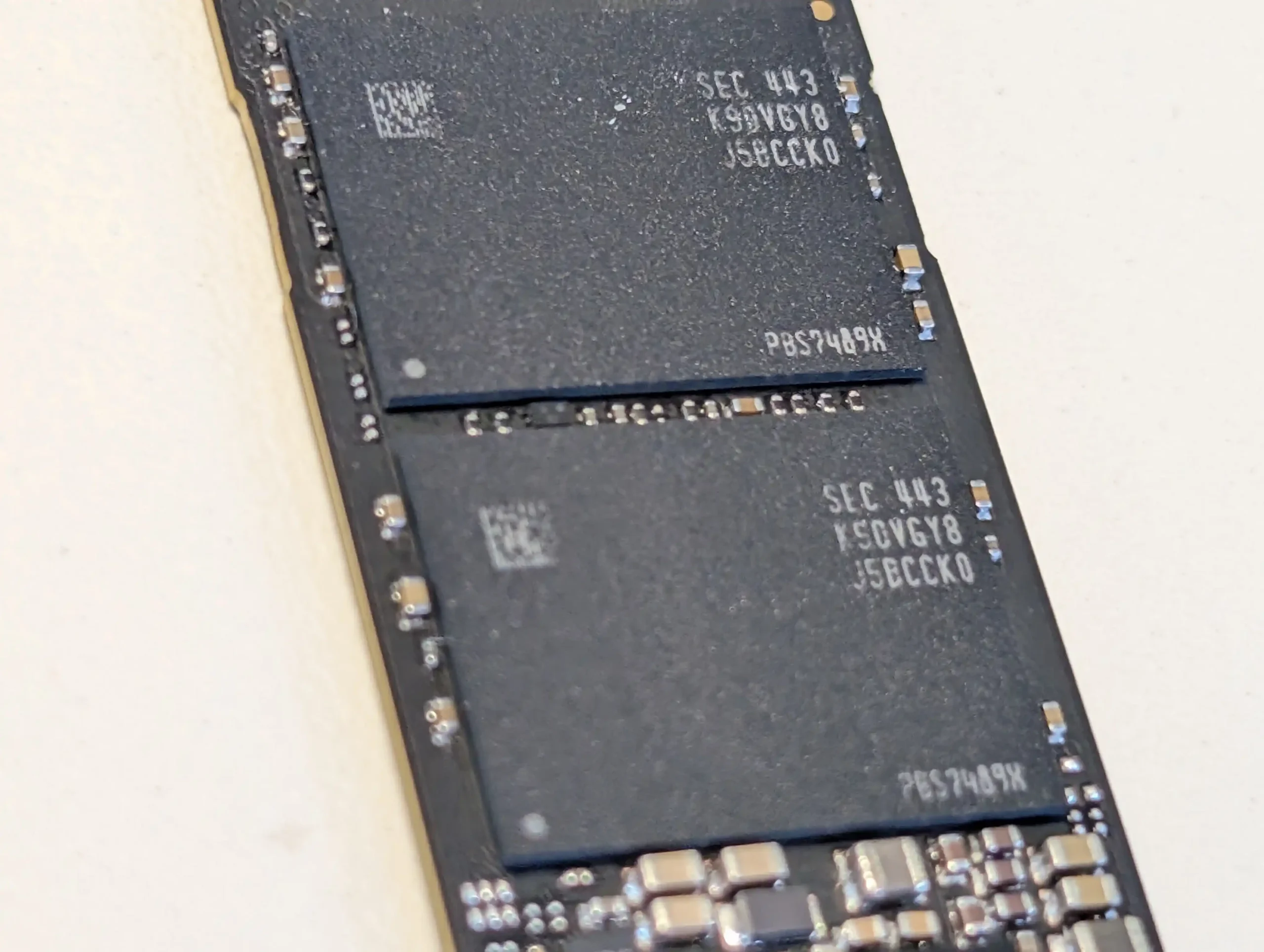
The 9100 PRO utilizes Samsung’s latest 3-bit MLC V-NAND (V8), which delivers higher density, improved durability, and greater efficiency compared to previous NAND generations. This 3-bit MLC (commonly referred to as TLC) enables faster read and write cycles, lower power consumption per operation, and improved reliability. Unlike older NAND designs used in PCIe 4.0 SSDs, the V8 NAND architecture allows for greater endurance and a more efficient distribution of read and write cycles, making it better suited for high-performance tasks such as video editing, AI computing, and professional content creation.
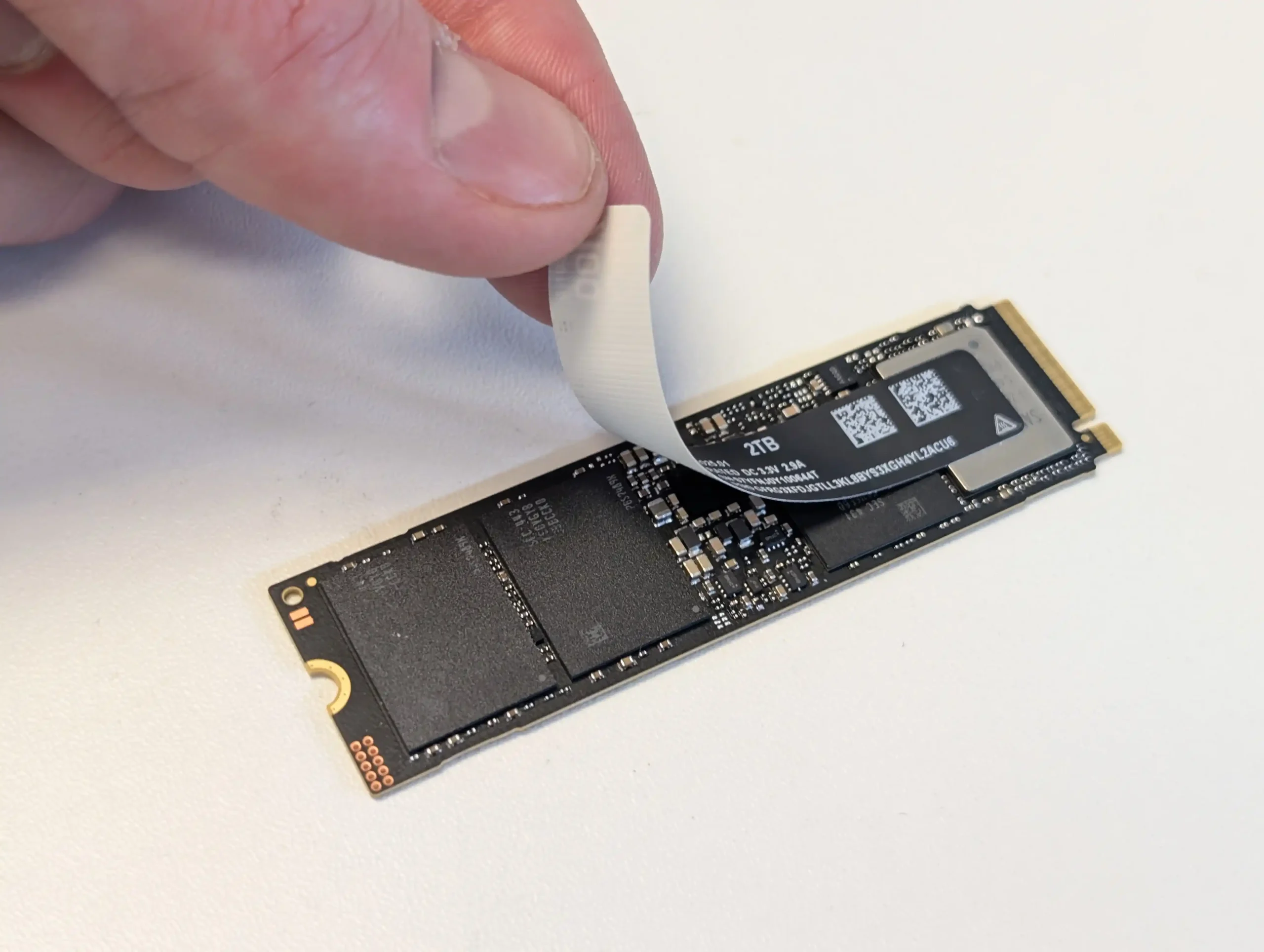
The 4TB and 8TB models benefit from additional NAND dies, increasing parallel processing capabilities and enabling higher performance under heavy workloads. Compared to Samsung’s previous consumer SSDs, the 9100 PRO’s NAND offers greater consistency in performance, reducing the risk of slowdowns due to write amplification and NAND wear over time.
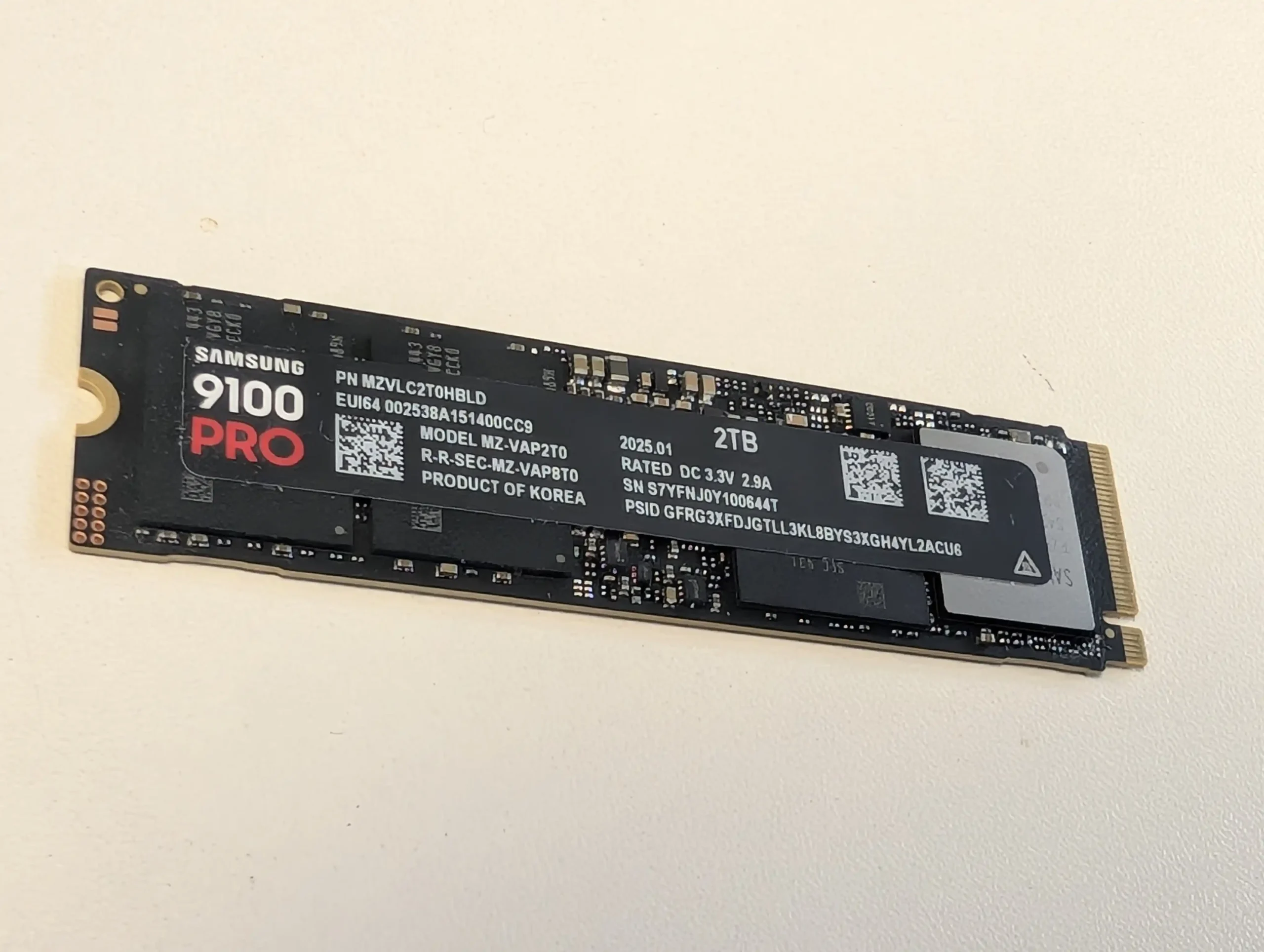
Samsung rates the 9100 PRO with a Total Bytes Written (TBW) endurance rating of up to 4,800 TB for the 8TB model, with lower capacities following a scaled endurance pattern of 600 TB (1TB), 1,200 TB (2TB), and 2,400 TB (4TB). This results in a Drive Writes Per Day (DWPD) rating of approximately 0.328, meaning users can rewrite around one-third of the drive’s full capacity daily for five years before reaching the warranty limit.
Samsung claims on the 9100 PRO peak sequential read/write speeds (though based on hugely synthetic tests on an AMD Ryzen 9 7950x 16-Core Processor [email protected] system) make it one of the fastest PCIe 5.0 SSDs available in 2025. These speeds nearly double those of the 990 EVO (more on that shortly) released around 4-5 months before. Additionally, random read and write speeds exceeding 2.2M and 2.6M IOPS, which is a major improvement for workloads requiring frequent small file transactions, such as AI modeling, LLM training, and cloud storage applications. However, real-world performance may vary depending on factors such as cooling, system architecture, and workload type, which will be explored in the performance testing section of this review.
Samsung also emphasizes the power efficiency gains of the 9100 PRO, stating that the new controller and NAND design allow for up to 49% better efficiency than the previous generation 990 PRO. Power consumption during active operation is rated at 7.6W for the 1TB model, 8.1W for the 2TB, and 9.0W for the 4TB version, ensuring lower power draw compared to other PCIe 5.0 SSDs with similar performance ratings. This efficiency improvement helps reduce heat output and extends the lifespan of the drive, making it a more suitable option for professional and high-end workstation environments.
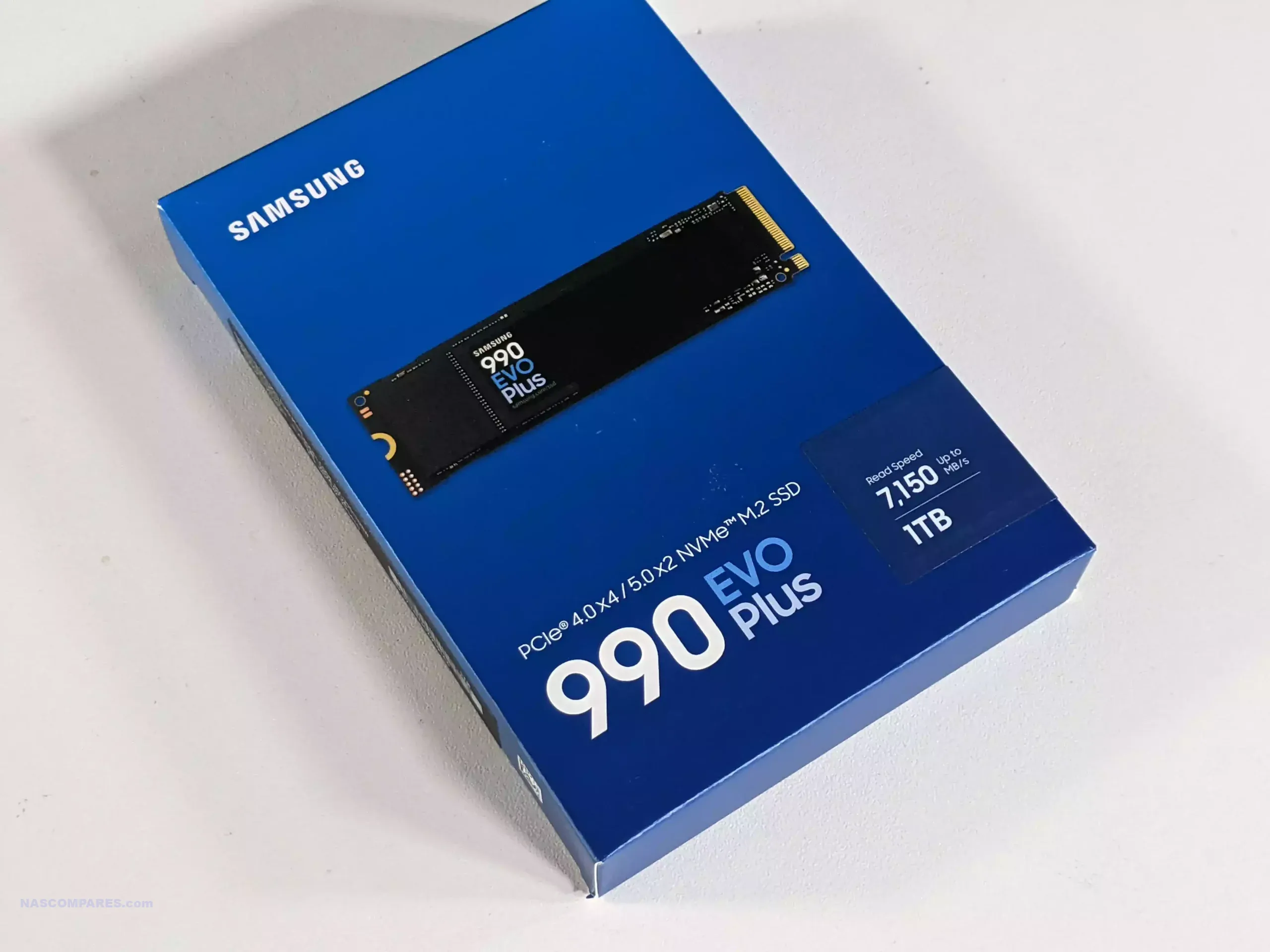 |
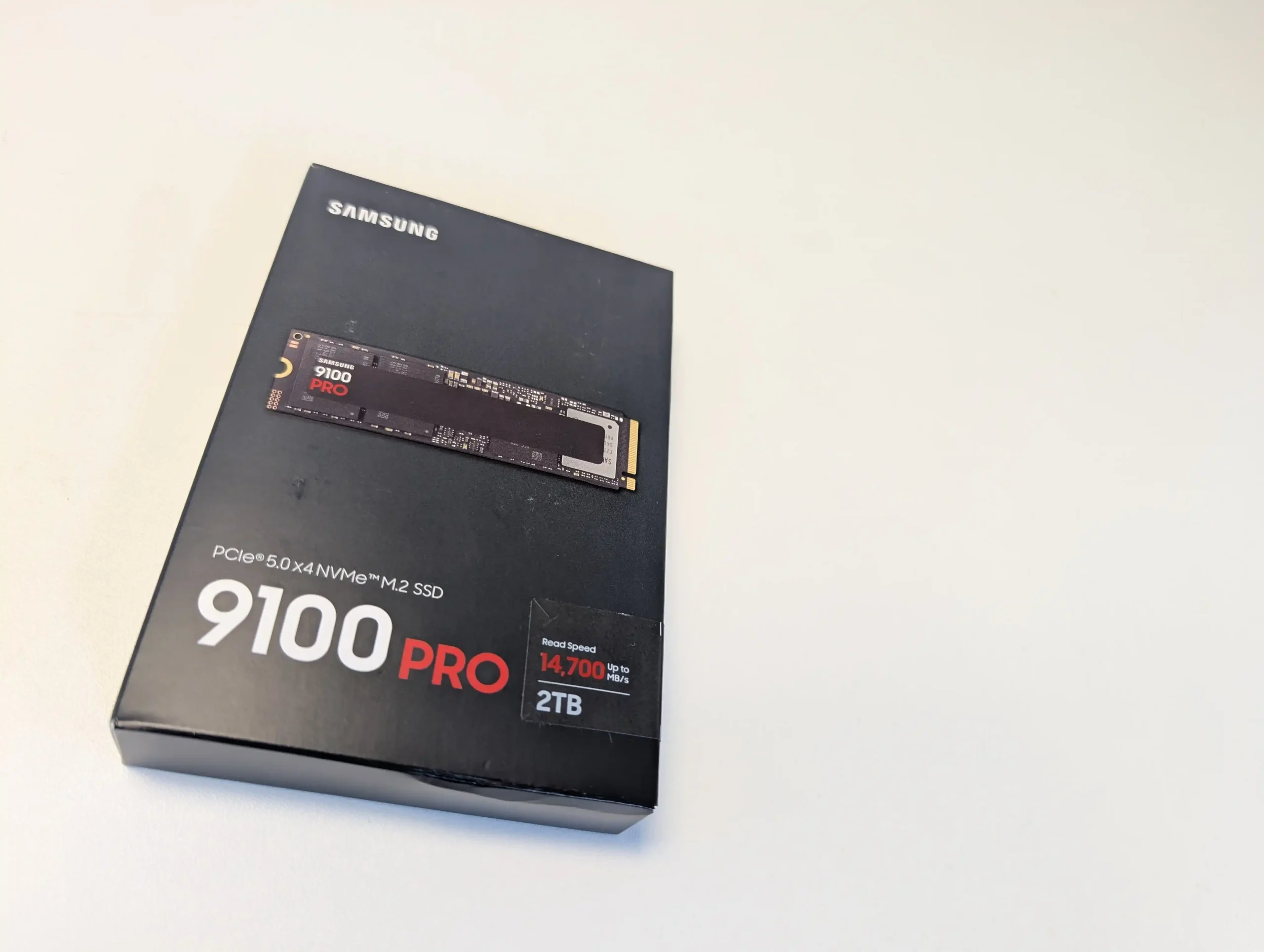 |
The Samsung 9100 PRO and Samsung 990 EVO Plus cater to different segments of the SSD market, with the 9100 PRO targeting high-performance workloads and the 990 EVO Plus designed for mainstream users seeking a balance between speed and efficiency. The most significant difference lies in interface and speed, as the 9100 PRO utilizes PCIe 5.0 x4, allowing for sequential read speeds up to 14,800 MB/s and write speeds up to 13,400 MB/s. In contrast, the 990 EVO Plus uses a PCIe 4.0 x4 / 5.0 x2 interface, capping its speeds at 7,250 MB/s read and 6,300 MB/s write.
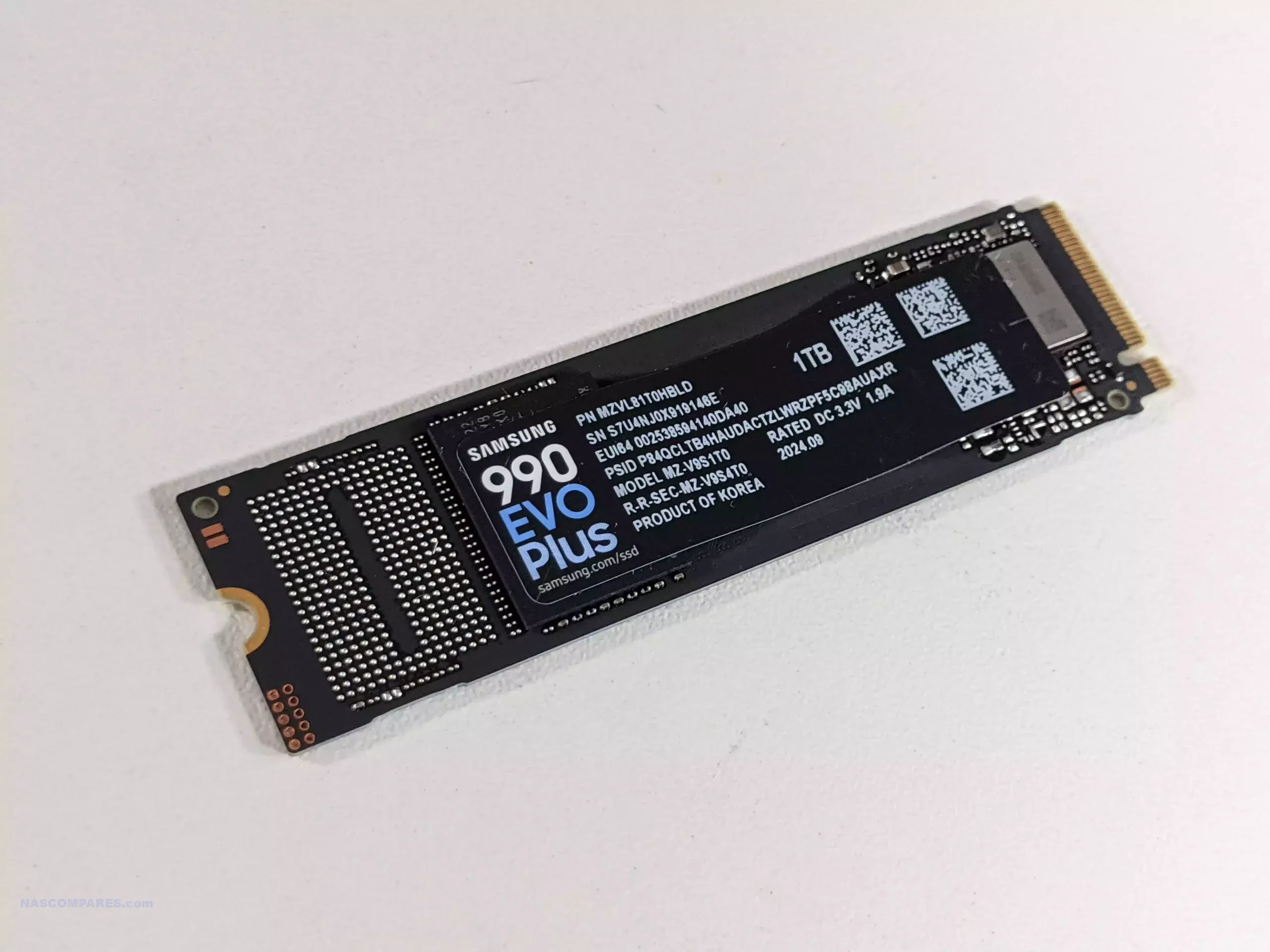 |
 |
While this makes the 990 EVO Plus one of the fastest PCIe 4.0 drives, it falls considerably behind the 9100 PRO, particularly in random performance, where the 9100 PRO achieves up to 2,200K IOPS read and 2,600K IOPS write, compared to the 990 EVO Plus’s 1,050K IOPS read and 1,400K IOPS write. The 9100 PRO also integrates LPDDR4X DRAM, ensuring smoother performance under heavy workloads, whereas the 990 EVO Plus relies on Host Memory Buffer (HMB) technology, which is dependent on system RAM and may lead to performance inconsistencies in extended write operations.
| Specification | Samsung 9100 PRO
|
Samsung 990 EVO Plus
|
|---|---|---|
| Interface | PCIe 5.0 x4, NVMe 2.0 | PCIe 4.0 x4 / 5.0 x2, NVMe 2.0 |
| Form Factor | M.2 (2280) / M.2 (2280 with Heatsink) | M.2 (2280) |
| Controller | Samsung Presto PCIe 5.0 Controller |
Samsung Piccolo (S4LY022) Controller ARM 32-bit Cortex-R8 |
| NAND Type | Samsung V-NAND TLC (V8, 3-bit MLC) |
V-NAND V8 TLC NAND 236-layer |
| DRAM Cache | 1GB – 8GB LPDDR4X (Varies by Capacity) | HMB (Host Memory Buffer) |
| Sequential Read (MB/s) | Up to 14,800 | Up to 7,250 |
| Sequential Write (MB/s) | Up to 13,400 | Up to 6,300 |
| Random Read (IOPS, QD32) | Up to 2,200K | Up to 1,050K |
| Random Write (IOPS, QD32) | Up to 2,600K | Up to 1,400K |
| Power Consumption (Read, W) | 7.6W – 9.0W | 4.3W – 5.5W |
| Power Consumption (Write, W) | 7.6W – 9.0W | 4.2W – 4.8W |
| Idle Power Consumption (mW) | 4.0mW – 6.5mW | 5mW |
| Total Bytes Written (TBW) | 600 TB (1TB) – 4,800 TB (8TB) | 600 TB (1TB) – 2,400 TB (4TB) |
| Warranty | 5-Year Limited Warranty | 5-Year Limited Warranty |
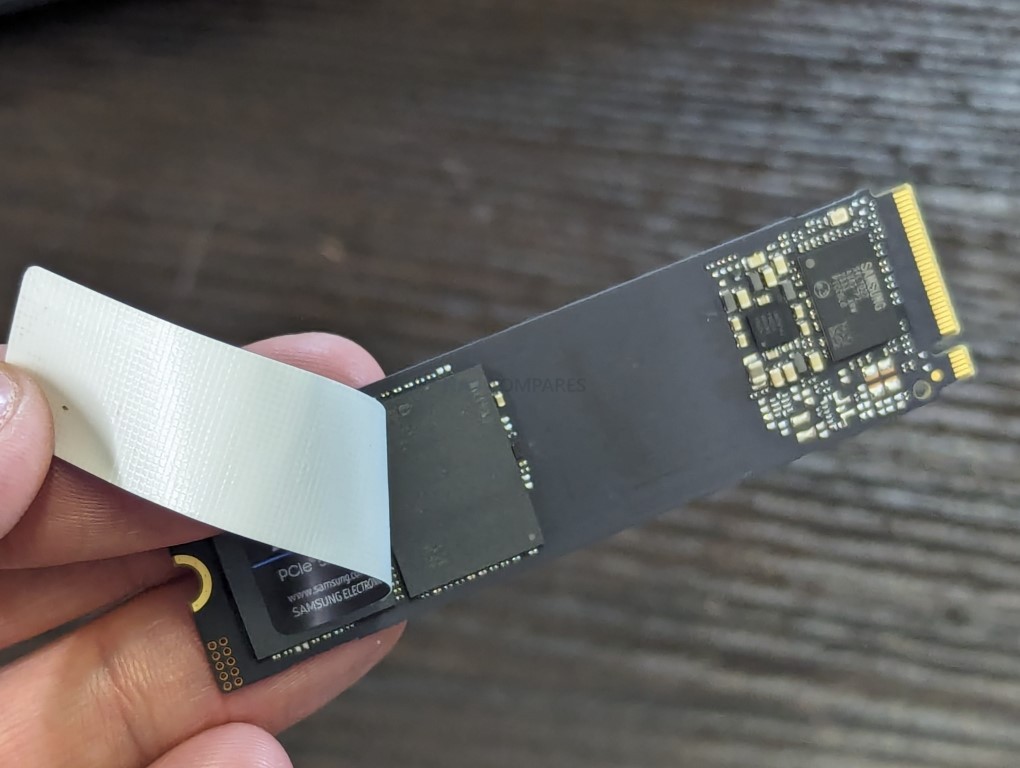 |
 |
Beyond speed, endurance and power efficiency also differ significantly between the two drives. The 9100 PRO offers a higher TBW rating, reaching 4,800 TB on the 8TB model, compared to the 990 EVO Plus’s maximum of 2,400 TBW for its 4TB version. This makes the 9100 PRO more suitable for AI computing, professional video editing, and enterprise applications where large amounts of data are written daily. Power consumption is another key factor, with the 9100 PRO consuming between 7.6W and 9.0W under active operation, while the 990 EVO Plus operates at a lower 4.3W to 5.5W during reads and 4.2W to 4.8W during writes.
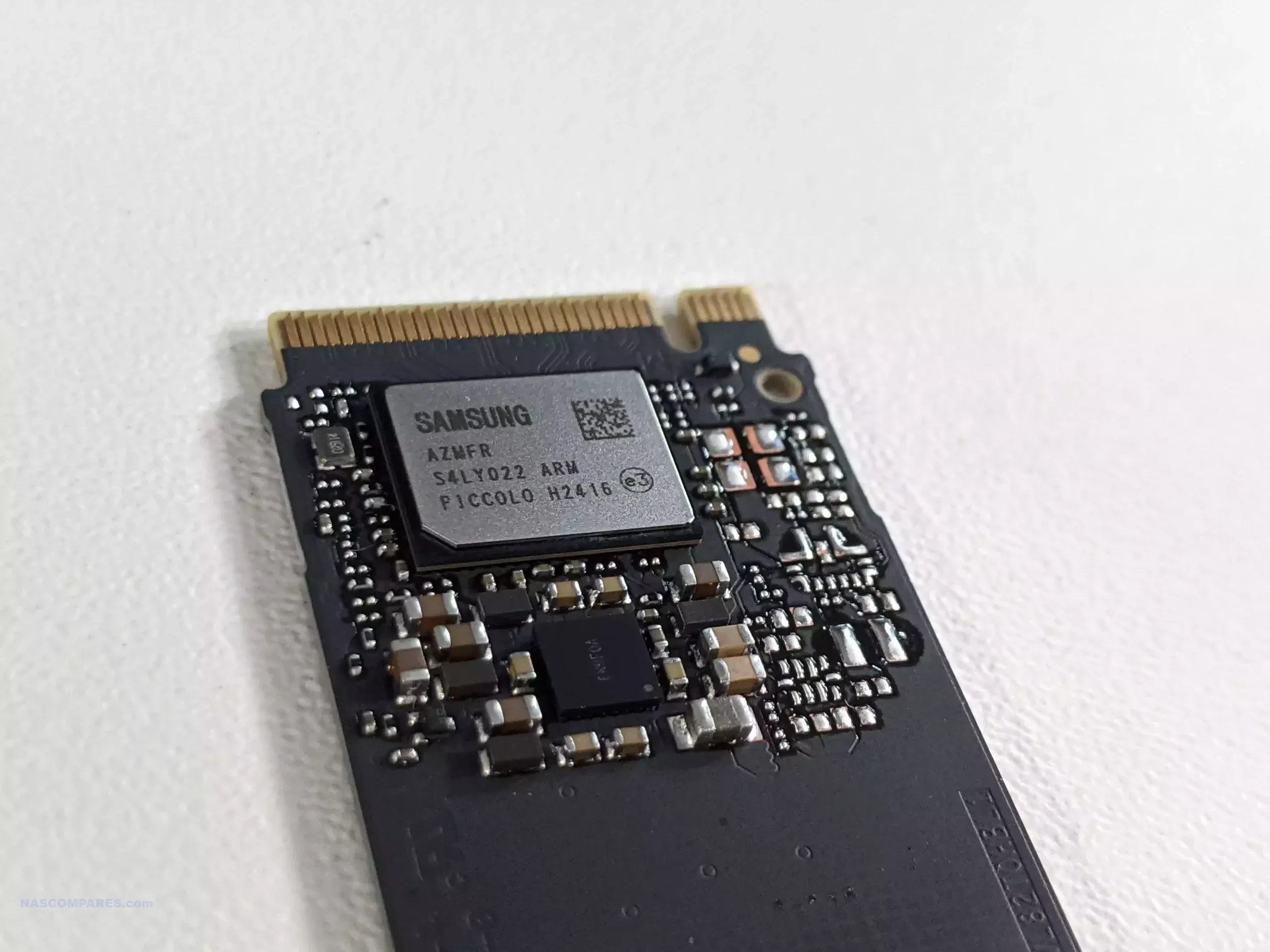 |
 |
While the 990 EVO Plus is more power-efficient, the 9100 PRO compensates with significantly higher performance and an improved energy efficiency rating, reducing power consumption by 49% compared to previous Samsung PCIe 5.0 drives. Overall, while the 990 EVO Plus is a strong option for users looking for a high-speed PCIe 4.0 SSD, the 9100 PRO is a better fit for professionals requiring the fastest speeds, highest endurance, and improved thermal performance.
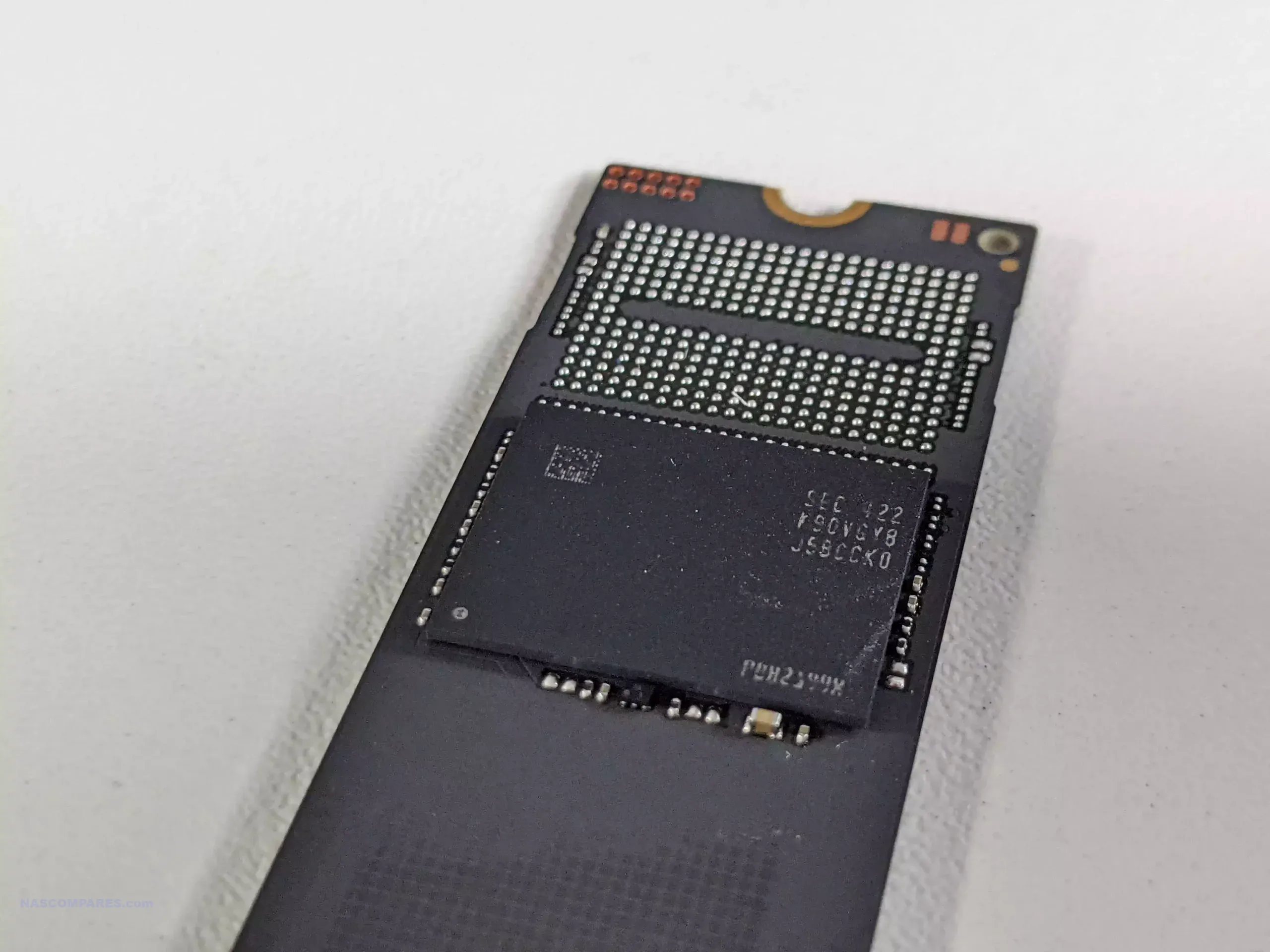 |
 |
Performance testing for the Samsung 9100 PRO was conducted on a Windows 10 system with a 12th-generation Intel Core i5 processor, 16GB DDR5 RAM, and a PCIe 5.0-enabled motherboard. The operating system was installed on a separate PCIe 4.0 SSD, while the 9100 PRO was tested in an available PCIe 5.0 slot.
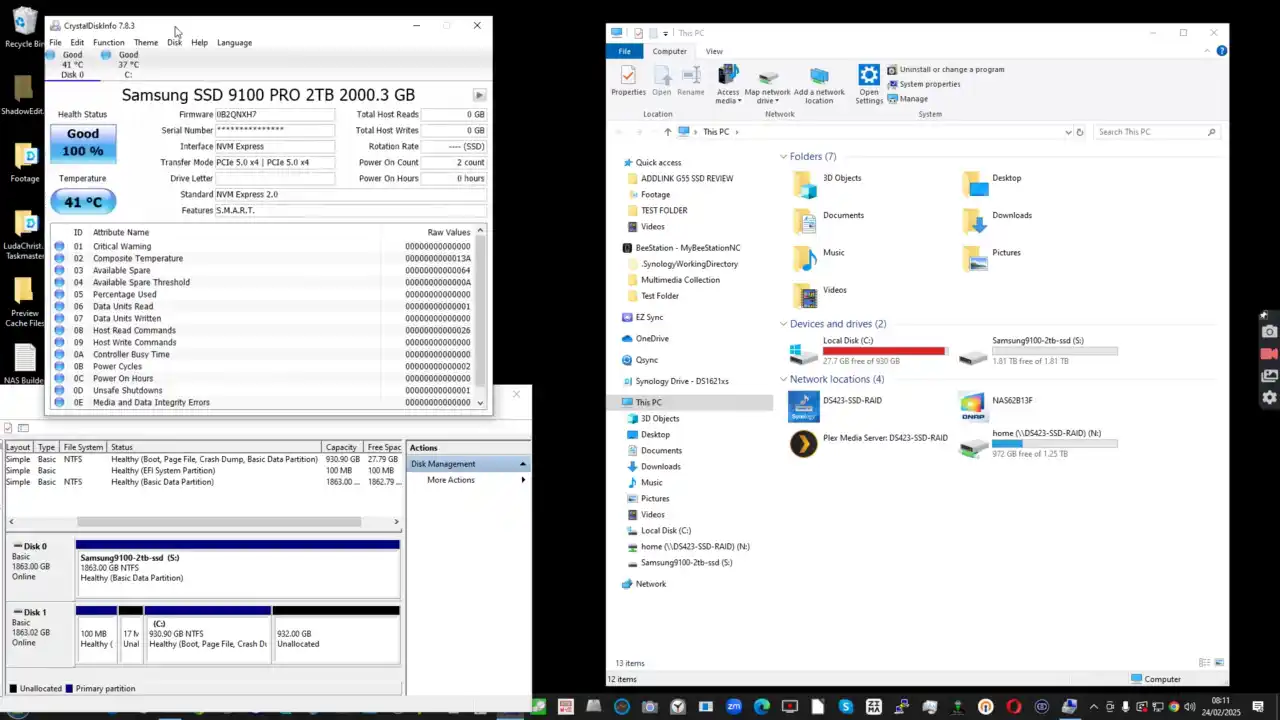
Benchmarking tools included ATTO Disk Benchmark, CrystalDiskMark, AJA System Test, and real-world file transfer tests to assess sequential and random performance under different workloads. The drive was tested in both bare PCB configuration and with a third-party heatsink, as the proprietary Samsung heatsink version was unavailable for this review.
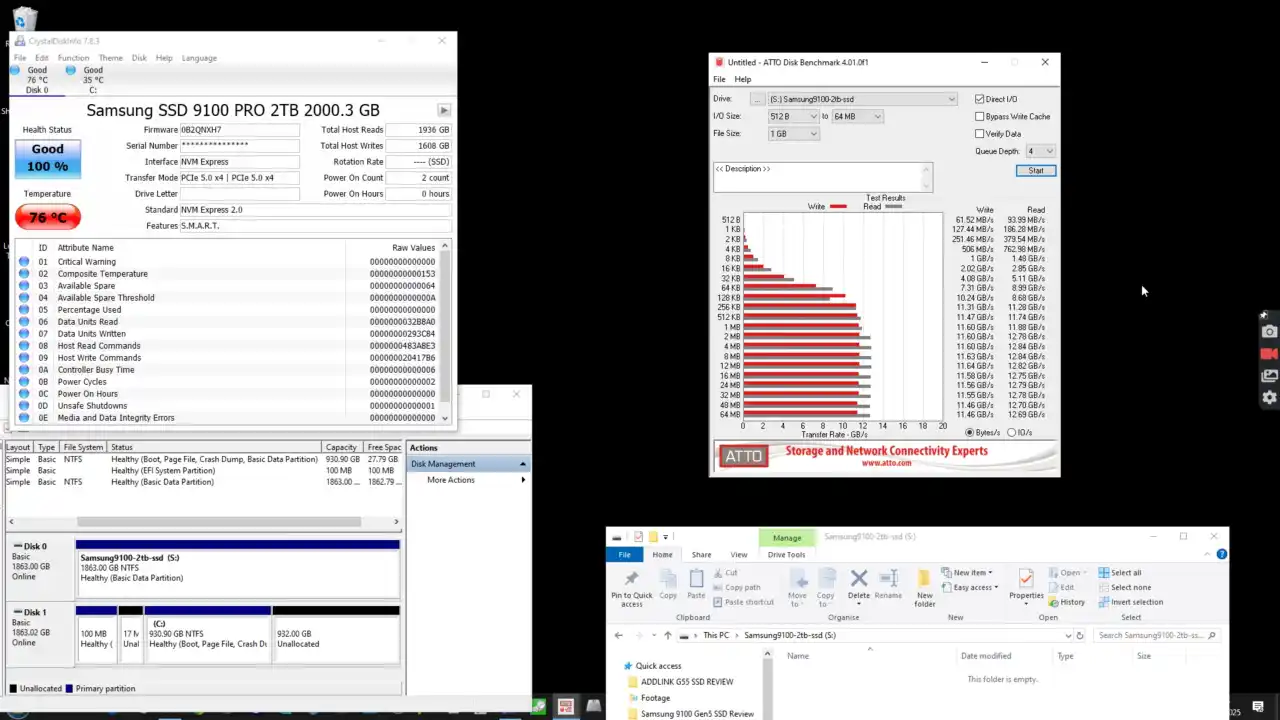
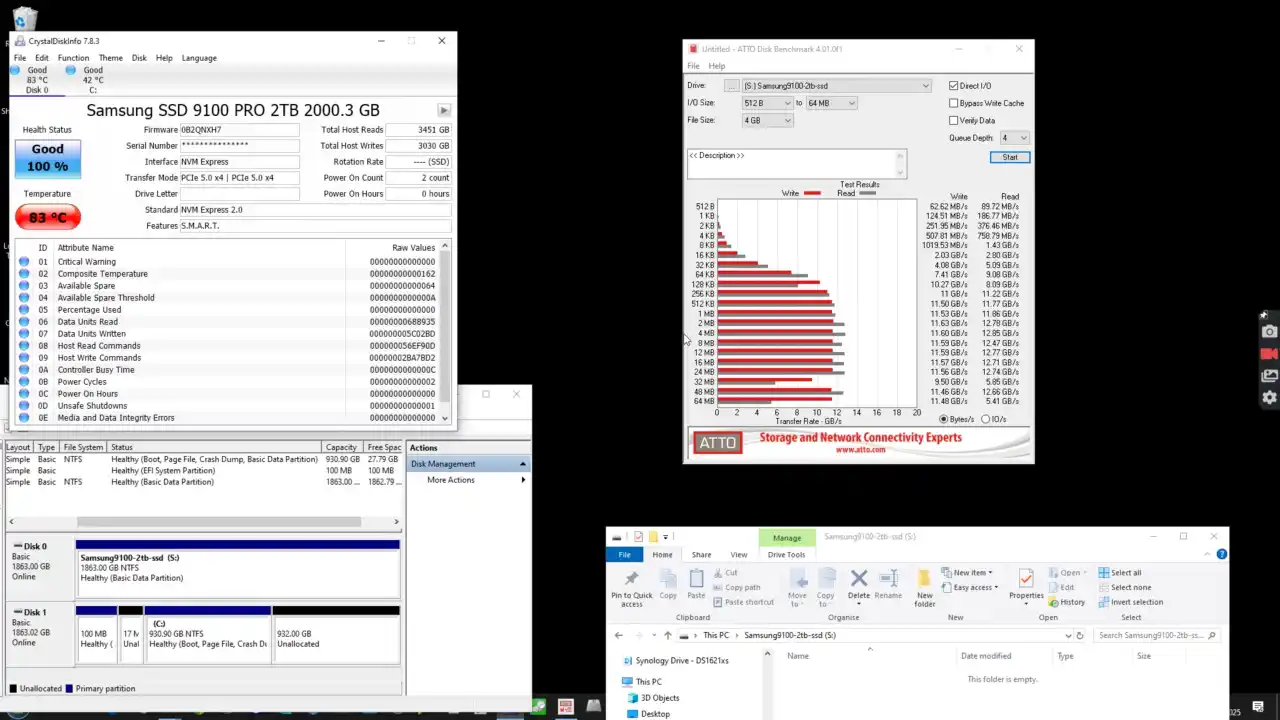
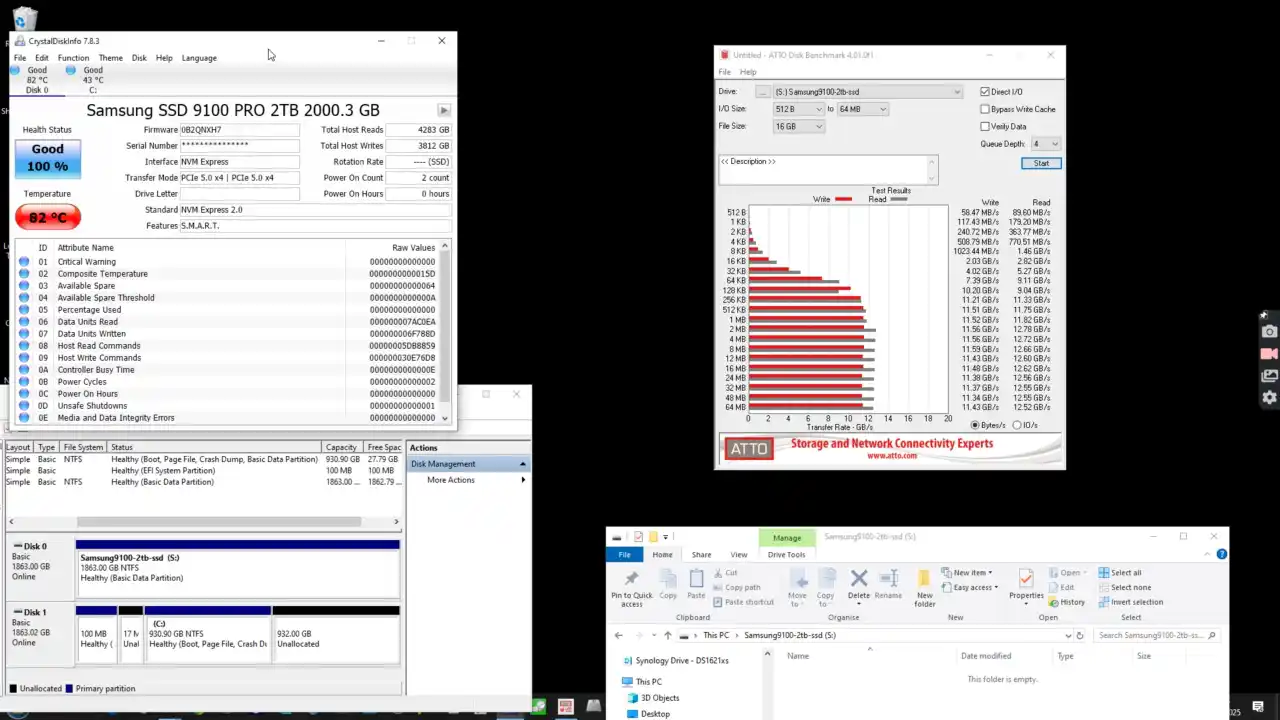
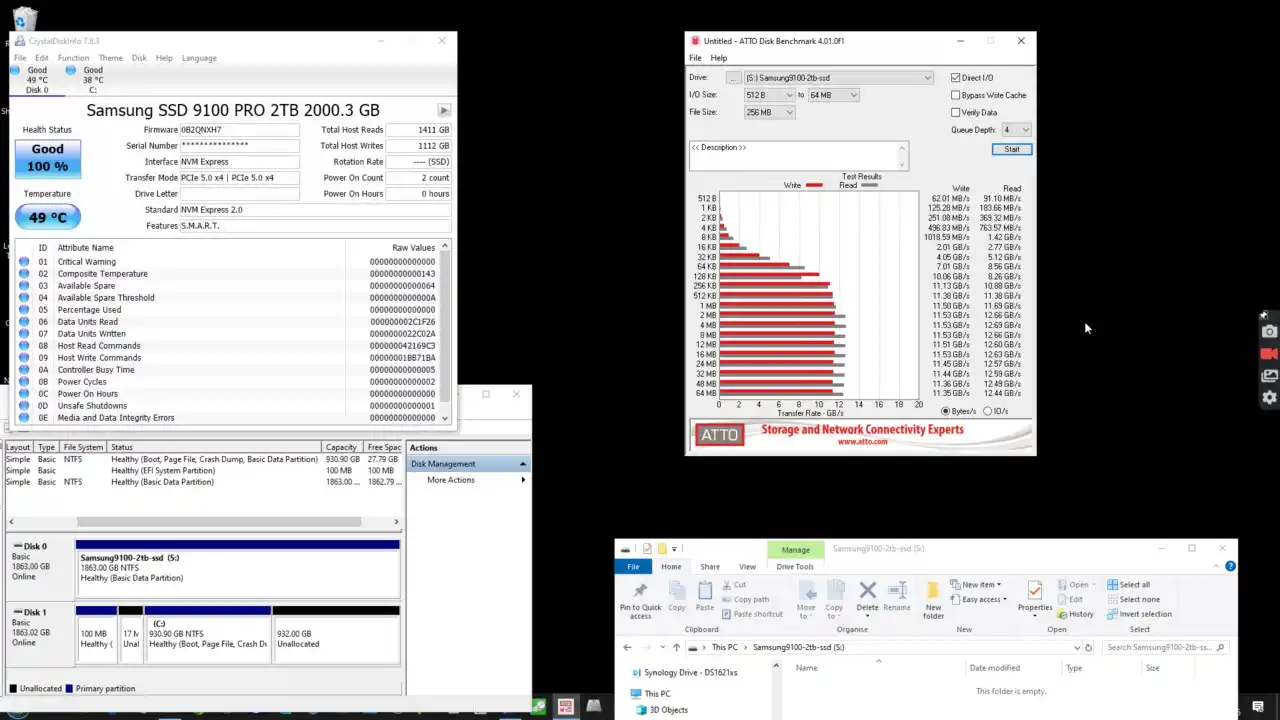
In ATTO Disk Benchmark, which measures transfer speeds across different file sizes, the 9100 PRO achieved sequential read speeds of between 11.3 GB/s and 11.5 GB/s, with occasional peaks reaching 12.5 GB/s under optimal conditions. These results, while slightly lower than Samsung’s claimed 14.8 GB/s read speed, remain among the highest reported for consumer PCIe 5.0 SSDs. Write speeds in ATTO remained stable at approximately 11.0 GB/s to 12.0 GB/s, showing consistent performance across multiple test runs.
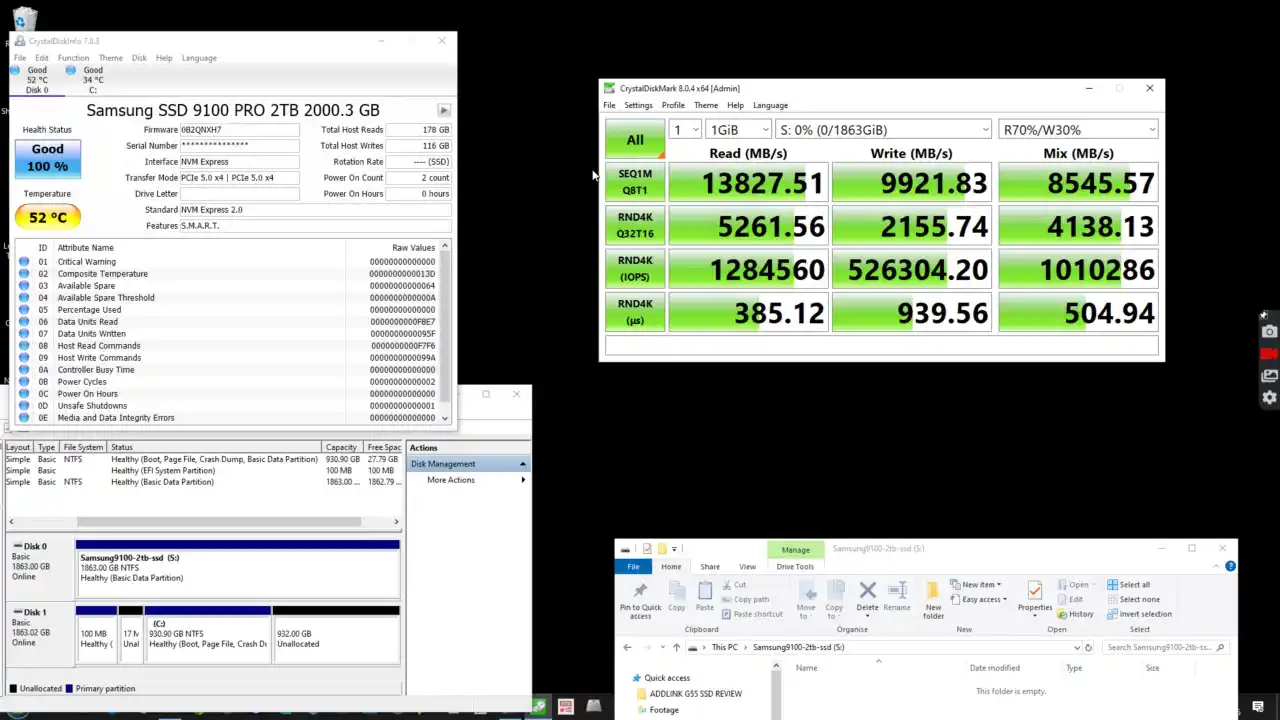
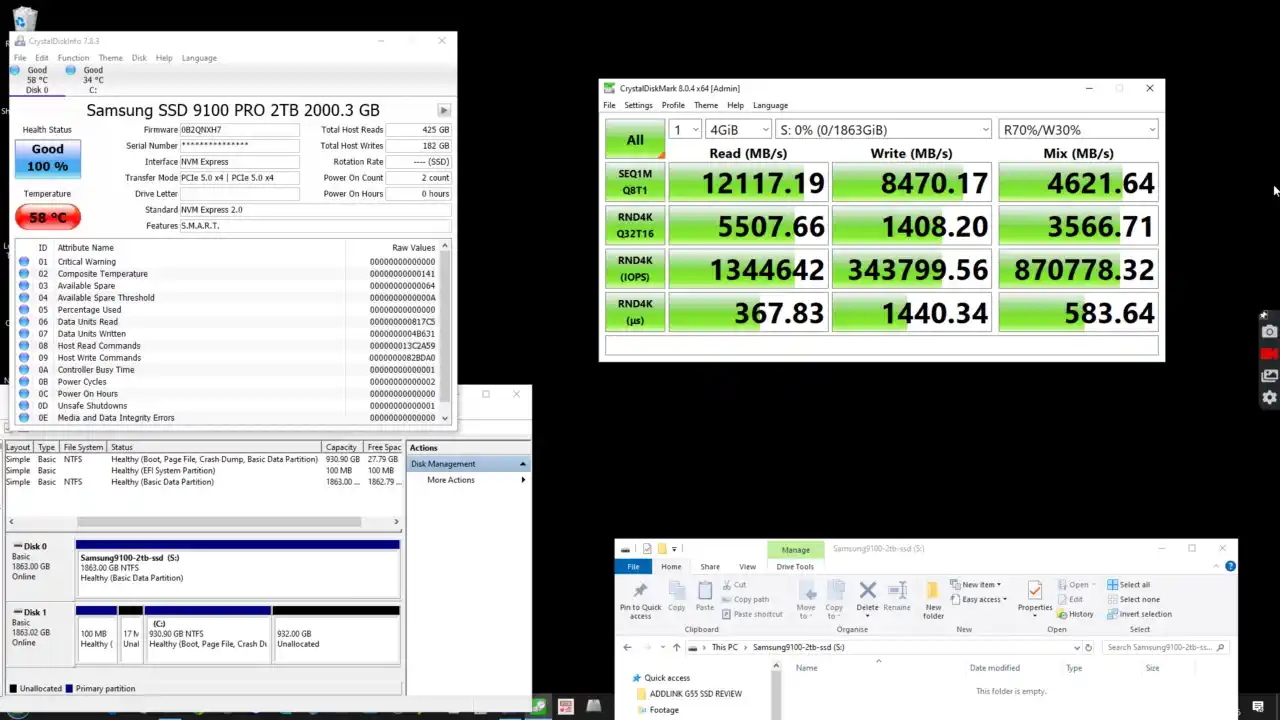
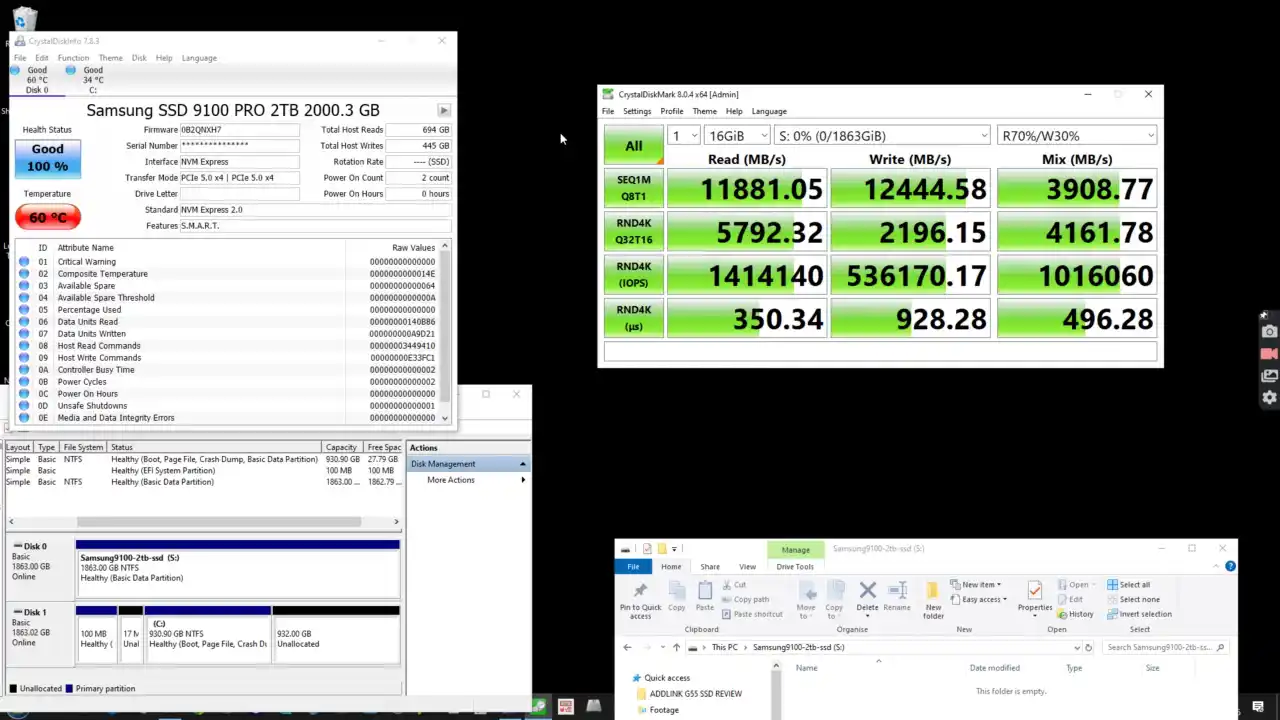
Meanwhile, CrystalDiskMark testing at a 16GB file size reported read speeds of up to 11,881 MB/s and write speeds of 12,444 MB/s, with random IOPS reaching up to 1.5 million under ideal conditions. While the drive’s performance fluctuated slightly depending on workload type, overall speeds remained close to manufacturer specifications, confirming its status as one of the fastest SSDs available in 2025.
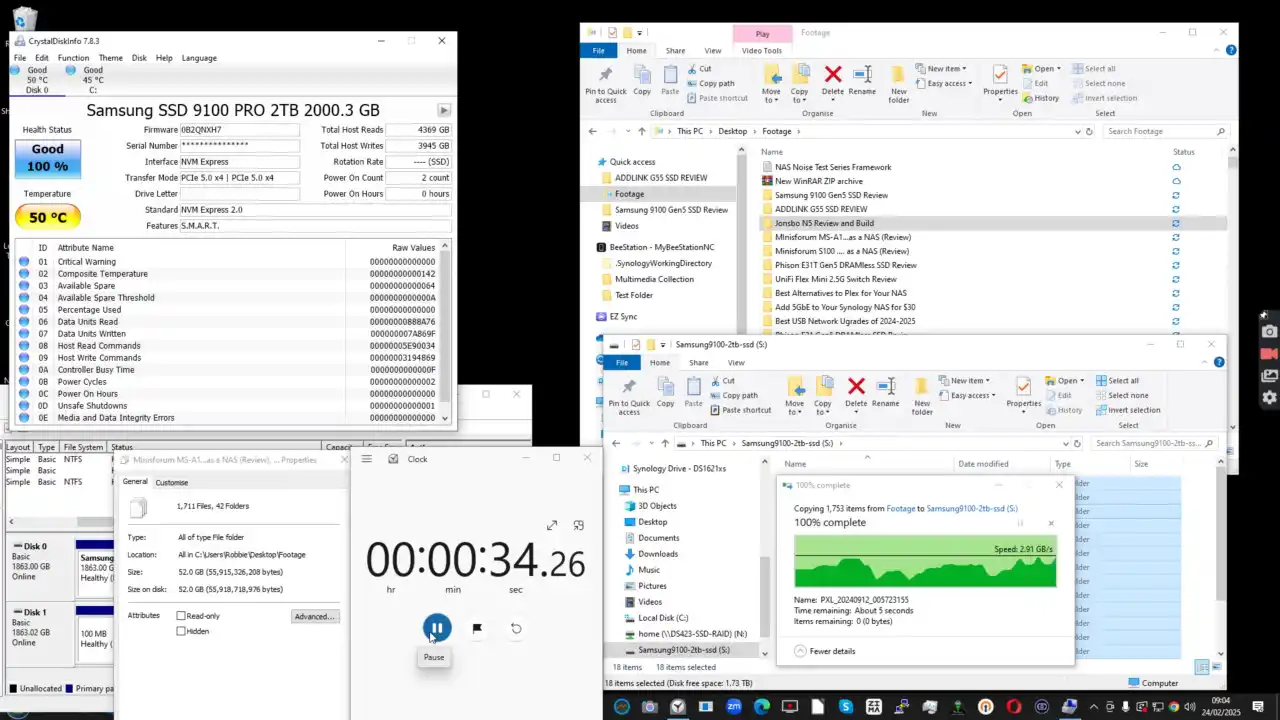
For real-world testing, a 52GB mixed dataset comprising 1,711 files across 42 folders was transferred to the 9100 PRO from another PCIe 4.0 SSD. The transfer was completed in just over 34 seconds, with speeds sustaining well above 9,000 MB/s for most of the operation. These figures align with high-end PCIe 5.0 expectations, demonstrating the drive’s ability to maintain consistent performance under heavy workloads.
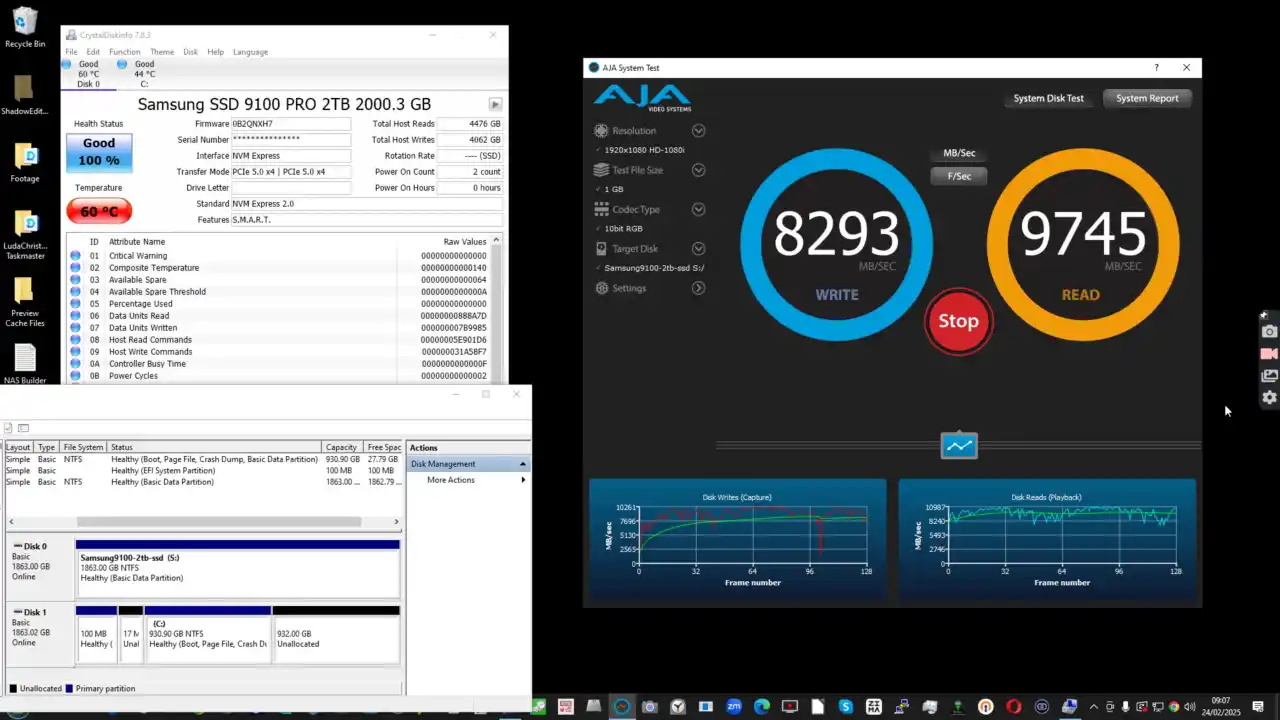
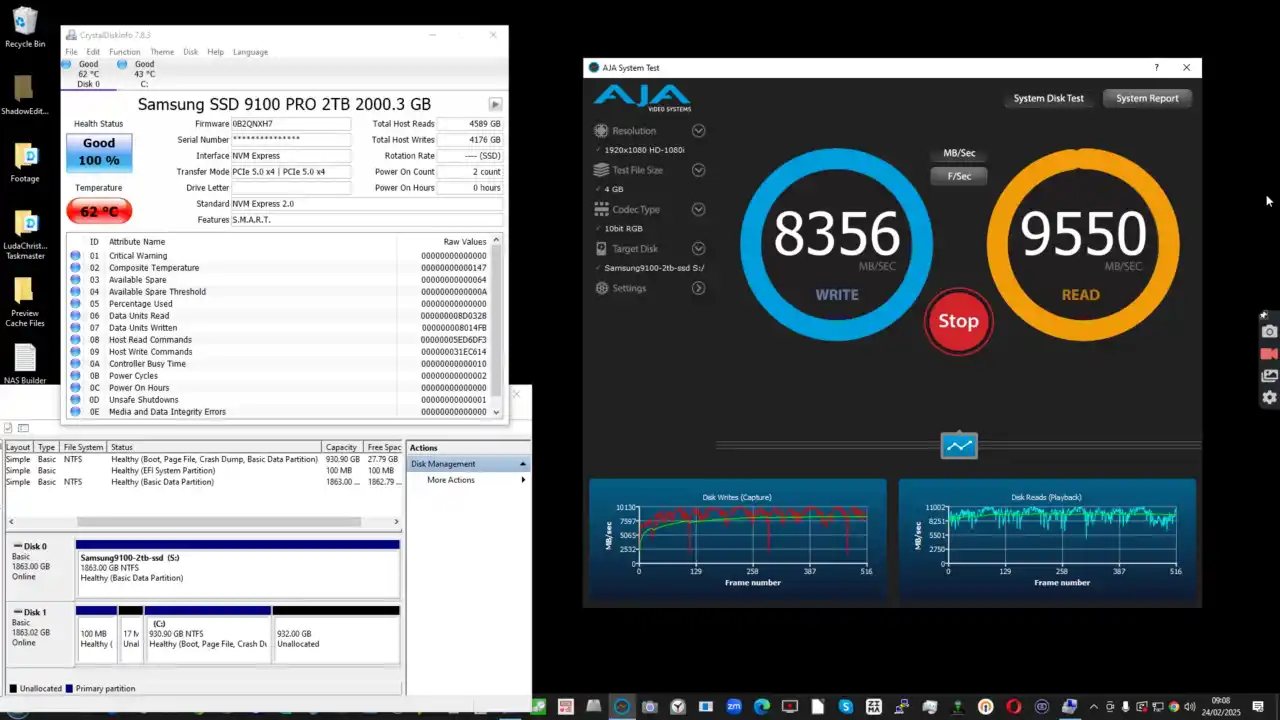
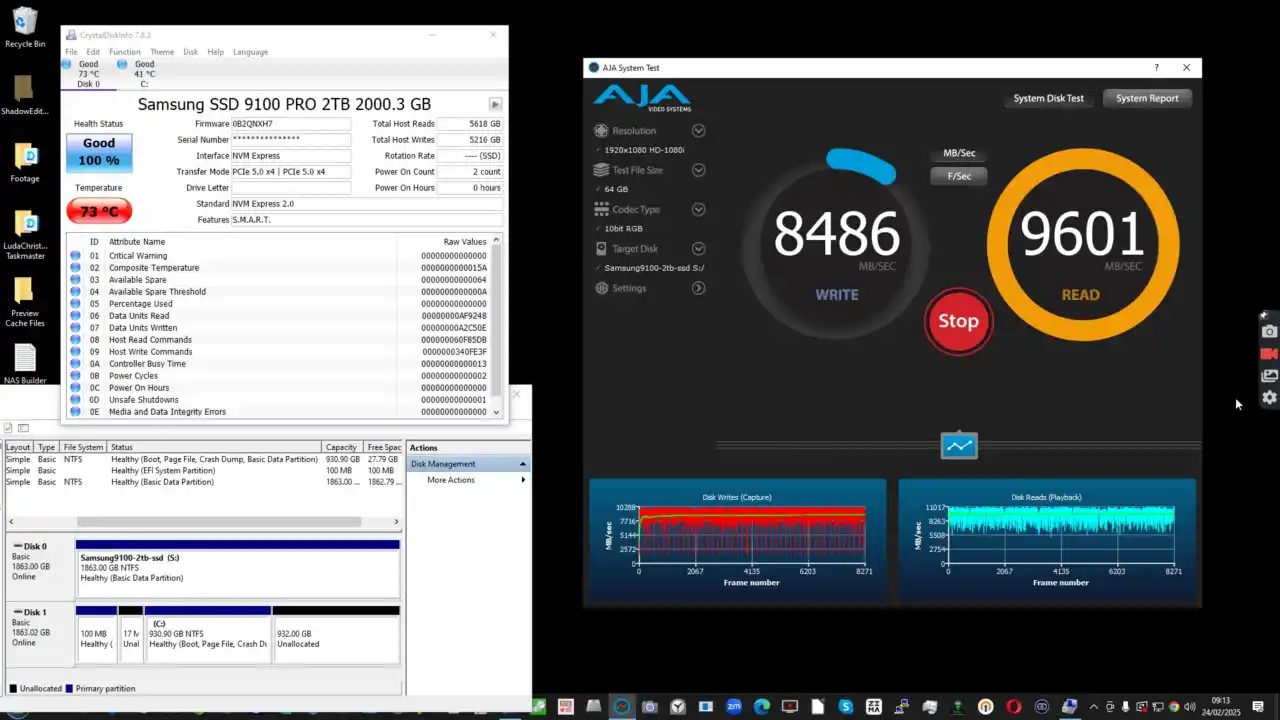
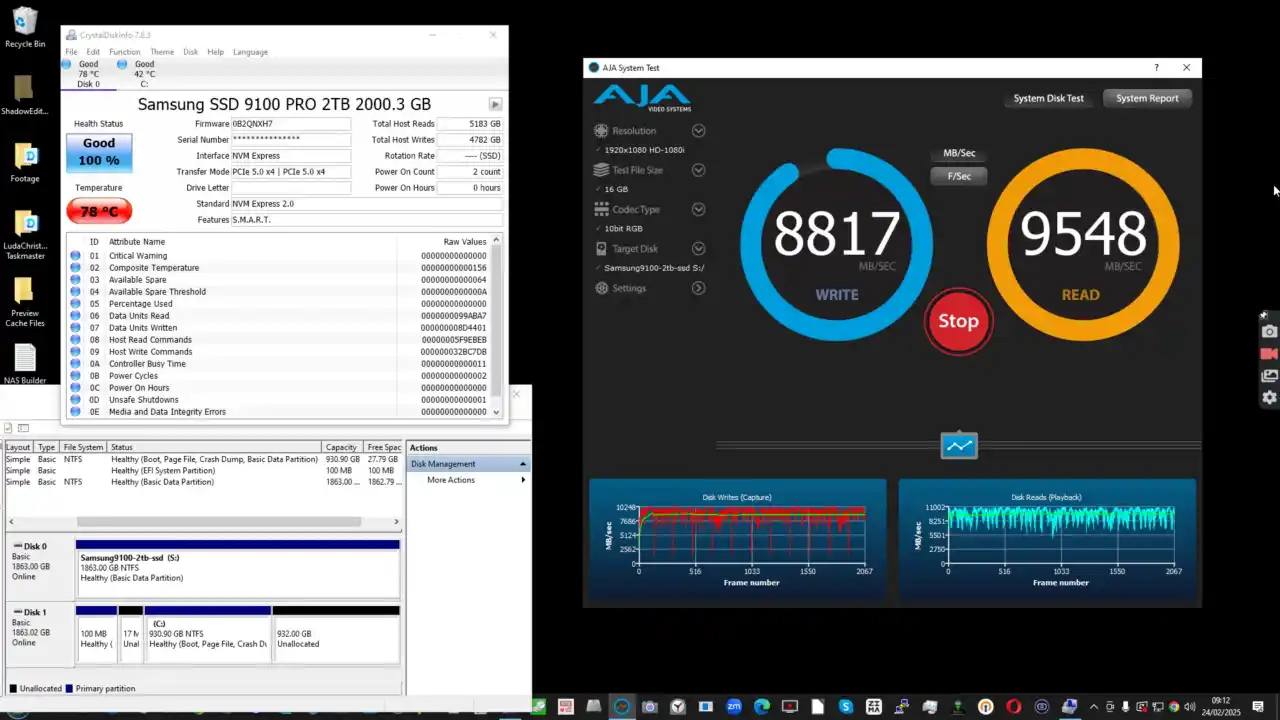
Additionally, AJA System Test, which simulates video production workloads, recorded sustained read speeds of nearly 10,000 MB/s, making the 9100 PRO a strong choice for video editing professionals working with large 8K or RAW footage files. Notably, write performance remained stable even during long transfers, likely due to Samsung’s expanded Intelligent TurboWrite 2.0 cache, which allocates up to 442GB of SLC cache on the 4TB model to handle large sequential writes without immediate slowdowns.

During testing, the 9100 PRO’s temperatures fluctuated between 45°C and 55°C at idle, while sustained workloads pushed temperatures above 81°C under extended high-speed transfers. While Samsung’s new 5nm Presto controller is more power-efficient than previous PCIe 5.0 designs, high-speed Gen 5 SSDs inherently produce significant heat, requiring adequate cooling solutions to prevent throttling. In testing with a third-party heatsink, thermal recovery was fast, and the drive quickly dropped back to safe temperature ranges within seconds after peak workloads ended. However, without a heatsink, performance throttling was observed after extended write operations, reinforcing the importance of active cooling for sustained performance in PCIe 5.0 SSDs.
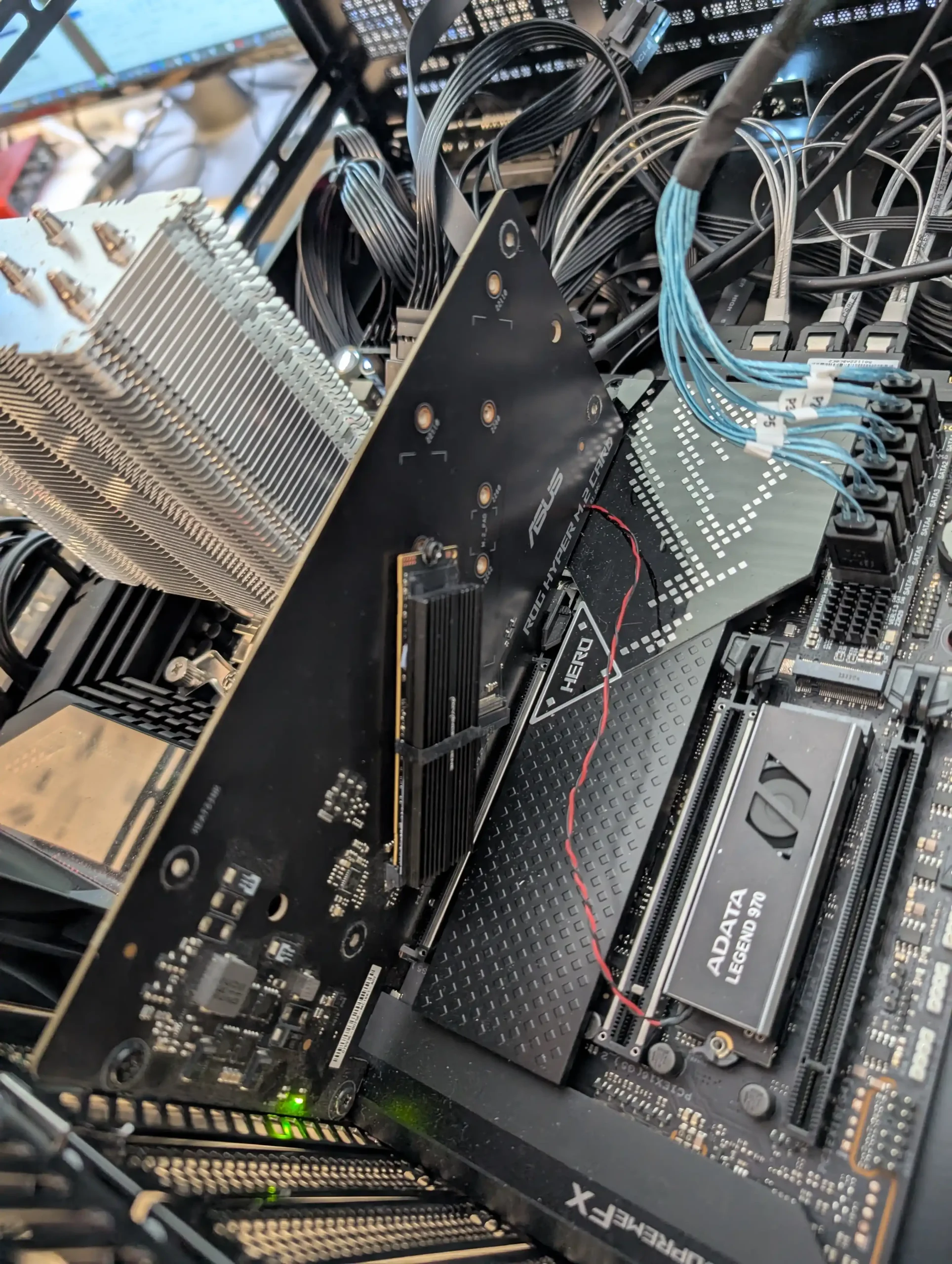
Overall, the Samsung 9100 PRO delivers competitive and consistent performance across synthetic benchmarks and real-world testing. It consistently reaches 11.5 GB/s to 12.5 GB/s in most workloads, proving it to be among the fastest PCIe 5.0 SSDs available. Real-world file transfers confirm the drive’s ability to sustain high write speeds, while Samsung’s Intelligent TurboWrite 2.0 technology minimizes performance drops even under heavy loads. However, thermal management remains a key consideration, as sustained high-speed operations push temperatures close to throttling limits without a heatsink. Despite this, power efficiency is improved over previous PCIe 5.0 SSDs, making it a strong option for professionals requiring high-performance storage for AI, video production, and data-heavy workloads.
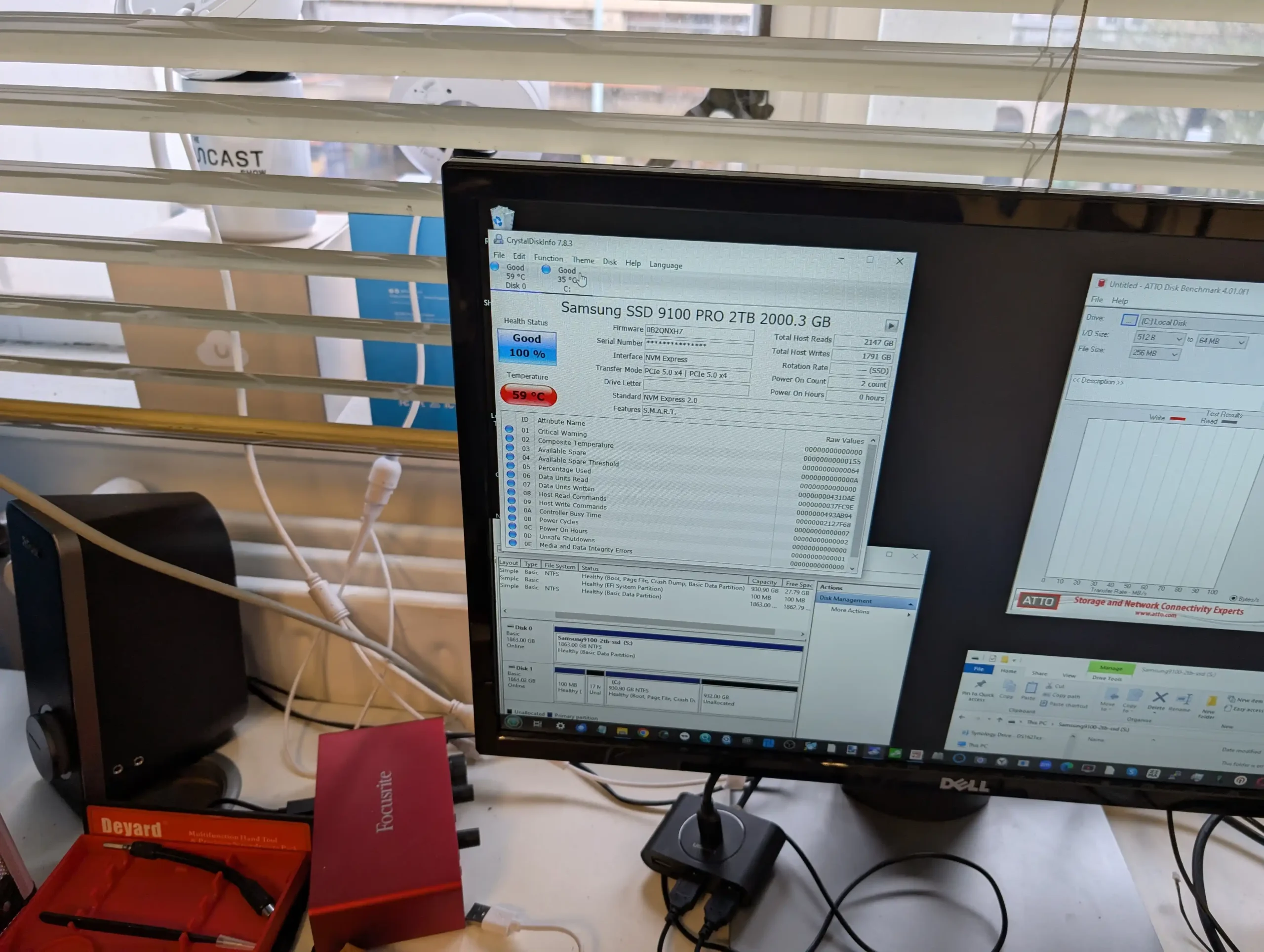

The Samsung 9100 PRO SSD delivers top-tier PCIe 5.0 performance, offering sequential read speeds up to 14,800 MB/s and write speeds reaching 13,400 MB/s, making it one of the fastest consumer SSDs currently available. Unlike many PCIe 5.0 SSDs that rely on third-party controllers from Phison or NAND from Micron, the 9100 PRO benefits from Samsung’s fully in-house design, including its Presto PCIe 5.0 controller and V-NAND TLC (V8). This ensures better integration between hardware and firmware, resulting in more stable performance, improved power efficiency, and better overall optimization for workloads like AI computing, video production, and high-speed data processing. Additionally, Samsung claims 49% improved power efficiency over previous PCIe 5.0 SSDs, helping to reduce thermal output compared to some early PCIe 5.0 models. Its high endurance rating (up to 4,800 TBW on the 8TB model) also positions it as a strong choice for users who require reliable, long-term performance.
However, there are some key drawbacks to consider. Thermal performance remains a challenge, as the 9100 PRO can reach temperatures above 81°C under extended workloads, meaning a proper cooling solution is necessary to prevent thermal throttling. While Samsung offers a heatsink version, those using the bare PCB model may need to invest in additional cooling for sustained performance. Additionally, real-world speeds, while impressive, do not always match Samsung’s maximum advertised performance, particularly once the TurboWrite cache is exhausted. Furthermore, Samsung’s reputation for SSD reliability is generally strong, but firmware issues in previous models, such as the 990 PRO and 980 PRO, led to concerns over long-term stability. While Samsung has since addressed those problems, some users may remain cautious about potential firmware-related risks. Despite these concerns, the 9100 PRO still stands out as one of the best PCIe 5.0 SSDs available, offering fully in-house hardware, high endurance, and leading-edge performance for users who need the fastest storage available today.
| PROS of the Samsung 9100 Pro SSD | Cons of the Samsung 9100 Pro SSD |
|
|
Choosing the right data storage solution for your needs can be very intimidating and it’s never too late to ask for help. With options ranging from NAS to DAS, Thunderbolt to SAS and connecting everything up so you can access all your lovely data at the touch of a button can be a lot simpler than you think. If you want some tips, guidance or help with everything from compatibility to suitability of a solution for you, why not drop me a message below and I will get back to you as soon as possible with what you should go for, its suitability and the best place to get it. This service is designed without profit in mind and in order to help you with your data storage needs, so I will try to answer your questions as soon as possible.
This description contains links to Amazon. These links will take you to some of the products mentioned in today's content. As an Amazon Associate, I earn from qualifying purchases. Visit the NASCompares Deal Finder to find the best place to buy this device in your region, based on Service, Support and Reputation - Just Search for your NAS Drive in the Box Below SUBSCRIBE TO OUR NEWSLETTER
SUBSCRIBE TO OUR NEWSLETTER 
[contact-form-7]
 Join Inner Circle
Join Inner Circle
Get an alert every time something gets added to this specific article!
 Subscribe
Subscribe
Need Advice on Data Storage from an Expert?
Finally, for free advice about your setup, just leave a message in the comments below here at NASCompares.com and we will get back to you.
 Need Help?
Where possible (and where appropriate) please provide as much information about your requirements, as then I can arrange the best answer and solution to your needs. Do not worry about your e-mail address being required, it will NOT be used in a mailing list and will NOT be used in any way other than to respond to your enquiry.
[contact-form-7]
Need Help?
Where possible (and where appropriate) please provide as much information about your requirements, as then I can arrange the best answer and solution to your needs. Do not worry about your e-mail address being required, it will NOT be used in a mailing list and will NOT be used in any way other than to respond to your enquiry.
[contact-form-7]
TRY CHAT
Terms and Conditions
 Ko-fi or old school Paypal. Thanks!To find out more about how to support this advice service check HEREIf you need to fix or configure a NAS, check Fiver
Have you thought about helping others with your knowledge? Find Instructions Here
Ko-fi or old school Paypal. Thanks!To find out more about how to support this advice service check HEREIf you need to fix or configure a NAS, check Fiver
Have you thought about helping others with your knowledge? Find Instructions Here


IMPORTANT – The Samsung 9100 Pro SSD is Now LIVE and my Review can be found HERE on YouTube or HERE on the Blog.
(Original Article Below)
Samsung has officially launched its 9100 PRO Series, marking its first full-fledged PCIe 5.0 NVMe SSD and its most powerful consumer storage solution to date. Designed to meet the growing demands of AI workloads, high-performance computing, 8K video editing, and gaming, this SSD delivers sequential read speeds of up to 14,800 MB/s, making it nearly twice as fast as its predecessor, the 990 PRO. The 9100 PRO lineup includes capacities of 1TB, 2TB, 4TB, and 8TB, catering to both professionals and power users requiring high-speed data access and extensive storage capacity. With the introduction of a more power-efficient 5nm controller, improved thermal management, and a choice between heatsink and non-heatsink versions, Samsung aims to push PCIe 5.0 adoption forward while setting a new benchmark for consumer SSDs.
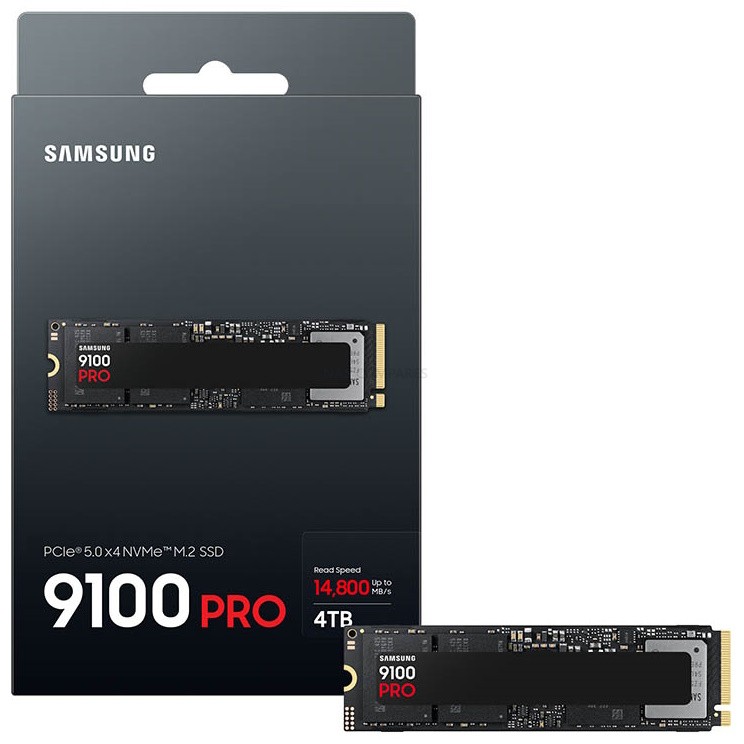
The Samsung 9100 PRO is built using Samsung’s in-house PCIe 5.0 controller and V-NAND TLC (V8) flash memory, providing a significant increase in performance, reliability, and efficiency. Unlike its predecessors, the 9100 PRO utilizes the NVMe 2.0 protocol, enabling better optimizations for high-speed workloads. It is equipped with LPDDR4X DRAM-based caching to further enhance performance, ensuring that data retrieval and transfer speeds remain consistent under heavy loads. Power efficiency has been improved by 49% compared to the 990 PRO, allowing the drive to operate at lower power consumption levels, with an active power draw ranging from 7.6W to 9.0W depending on the model. For added security, the 9100 PRO supports AES 256-bit encryption, TCG Opal 2.0, and Microsoft eDrive, making it a viable option for enterprise-level security and personal data protection.
| Specification | 1TB | 2TB | 4TB | 8TB |
|---|---|---|---|---|
| Interface | PCIe 5.0 x4, NVMe 2.0 | |||
| Form Factor | M.2 (2280) / M.2 (2280 with Heatsink) | |||
| NAND | Samsung V-NAND TLC (V8) | |||
| Controller | Samsung In-House Controller | |||
| Cache Memory | 1GB LPDDR4X | 2GB LPDDR4X | 4GB LPDDR4X | 8GB LPDDR4X |
| Sequential Read/Write (MB/s) | 14,700 / 13,300 | 14,700 / 13,400 | 14,800 / 13,400 | 14,800 / 13,400 |
| Random Read/Write (IOPS, QD32) | 1,850K / 2,600K | 1,850K / 2,600K | 2,200K / 2,600K | 2,200K / 2,600K |
| Power Consumption (Active Read/Write, W) | 7.6 / 7.2 | 8.1 / 7.9 | 9.0 / 8.2 | TBD |
| Device Sleep (L1.2, mW) | 4.0 / 3.3 | 4.8 / 4.0 | 6.5 / 5.7 | TBD |
| Intelligent TurboWrite 2.0 Cache | 114GB | 226GB | 442GB | TBD |
| Data Encryption | AES 256-bit, TCG Opal v2.0, MS eDrive (IEEE1667) | |||
| Total Bytes Written (TBW) | 600 | 1,200 | 2,400 | 4,800 |
| Warranty | Five (5) Year Limited Warranty | |||
The Samsung 9100 PRO SSD is a pretty big jump in storage performance, surpassing previous consumer SSDs like the 990 EVO and EVO Plus in nearly every metric. While the 990 EVO and EVO Plus were developed to meet the needs of mainstream users looking for a balance of performance and affordability, the 9100 PRO is engineered specifically for professionals, power users, and high-performance computing environments. One of the most significant differences is the interface upgrade, with the 9100 PRO utilizing PCIe 5.0 x4—a major step up from the 990 EVO’s PCIe 4.0 and the EVO Plus’s PCIe 3.0. This translates to dramatically higher sequential read and write speeds, where the 9100 PRO reaches up to 14,800 MB/s read and 13,400 MB/s write speeds, whereas the 990 EVO maxes out at 5,000 MB/s read and 4,800 MB/s write, and the EVO Plus is limited to 3,500 MB/s read and 3,200 MB/s write. These figures alone make the 9100 PRO nearly three times faster than the EVO Plus and close to three times faster than the 990 EVO, delivering unprecedented speed for workloads like 8K video editing, AI processing, and high-resolution content creation.
Beyond raw speed, the 9100 PRO also dominates in efficiency, endurance, and storage capacity, areas where Samsung has significantly improved upon its previous SSD lineup. The 9100 PRO features an endurance rating of up to 4,800 TBW (Total Bytes Written) for the 8TB model, whereas the 990 EVO and EVO Plus are capped at 600 TBW, meaning the 9100 PRO can handle up to eight times the write cycles before reaching its lifespan limit. This enhanced durability makes it ideal for workstations and AI applications where large datasets are continuously processed and rewritten. Furthermore, Samsung has introduced an 8TB model in the 9100 PRO lineup, a first for its consumer NVMe SSDs, whereas the 990 EVO is limited to 4TB and the EVO Plus maxes out at 2TB. Power efficiency has also been improved by up to 49%, thanks to the 5nm controller used in the 9100 PRO, allowing it to maintain higher performance while consuming less power per operation. These advancements make the 9100 PRO not just an incremental upgrade but a transformative SSD in Samsung’s lineup, aimed squarely at professionals who demand uncompromising speed, reliability, and storage capacity.
| Specification | Samsung 9100 PRO | Samsung 990 EVO | Samsung 990 EVO PLUS |
|---|---|---|---|
| Interface | PCIe 5.0 x4, NVMe 2.0 | PCIe 4.0 x4, NVMe 1.4 | PCIe 3.0 x4, NVMe 1.3 |
| Form Factor | M.2 (2280) / M.2 (2280 with Heatsink) | M.2 (2280) | M.2 (2280) |
| NAND | Samsung V-NAND TLC (V8) | Samsung V-NAND TLC | Samsung V-NAND TLC |
| Controller | Samsung In-House Controller | Samsung In-House Controller | Samsung In-House Controller |
| Cache Memory | 1GB – 8GB LPDDR4X | 1GB – 2GB LPDDR4 | None |
| Sequential Read (MB/s) | 14,700 – 14,800 | 5,000 | 3,500 |
| Sequential Write (MB/s) | 13,300 – 13,400 | 4,800 | 3,200 |
| Random Read (IOPS, QD32) | 1,850K – 2,200K | 800K | 600K |
| Random Write (IOPS, QD32) | 2,600K | 1,000K | 550K |
| Power Consumption (Active, W) | 7.6W – 9.0W | 5.3W – 5.9W | 4.5W – 5.0W |
| Device Sleep (L1.2, mW) | 4.0mW – 6.5mW | 5mW | 5mW |
| Total Bytes Written (TBW) | 600 – 4,800 TB | 600TB | 600TB |
| Warranty | 5-Year Limited Warranty | 5-Year Limited Warranty | 5-Year Limited Warranty |
The 9100 PRO Series introduces Samsung’s Intelligent TurboWrite 2.0, a highly optimized SLC caching system that significantly improves write speeds and overall performance consistency. amsung TurboWrite is a technology used in Samsung SSDs to make them faster. Think of it like a temporary speed boost for writing data.
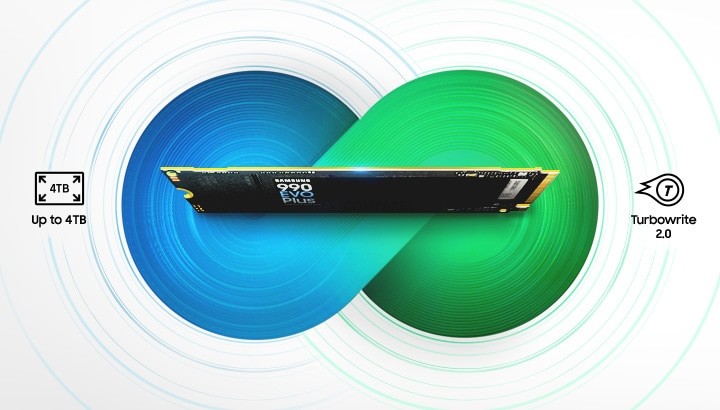
 Faster file transfers (especially for small/medium-sized files).
Faster file transfers (especially for small/medium-sized files). Better everyday performance (like booting Windows, opening apps, or saving documents).
Better everyday performance (like booting Windows, opening apps, or saving documents). Slows down for big files – If you copy very large files that fill up the TurboWrite cache, the speed drops to the SSD’s normal (slower) write speed.
Slows down for big files – If you copy very large files that fill up the TurboWrite cache, the speed drops to the SSD’s normal (slower) write speed.
Unlike conventional SSDs, which experience a performance drop once the primary cache is exhausted, TurboWrite dynamically allocates NAND capacity as an extended cache, maintaining peak speeds for longer durations. The cache size is based on drive capacity, with 114GB allocated for 1TB models, 226GB for 2TB, and up to 442GB for 4TB variants. This feature ensures high-speed data transfers and minimizes write slowdowns, especially beneficial for video editors, software developers, and content creators working with large datasets.
The Samsung 9100 PRO is designed with long-term endurance in mind, featuring Total Bytes Written (TBW) ratings of up to 4,800TB for the 8TB variant. This translates to 0.328 Drive Writes Per Day (DWPD), meaning users can rewrite roughly one-third of the drive’s full capacity daily for five years without exceeding its rated lifespan. This makes it ideal for sustained workloads, AI processing, and enterprise environments that require consistent, high-speed storage. Compared to previous-generation SSDs, the 9100 PRO offers significantly improved durability, reducing the risk of performance degradation over time.
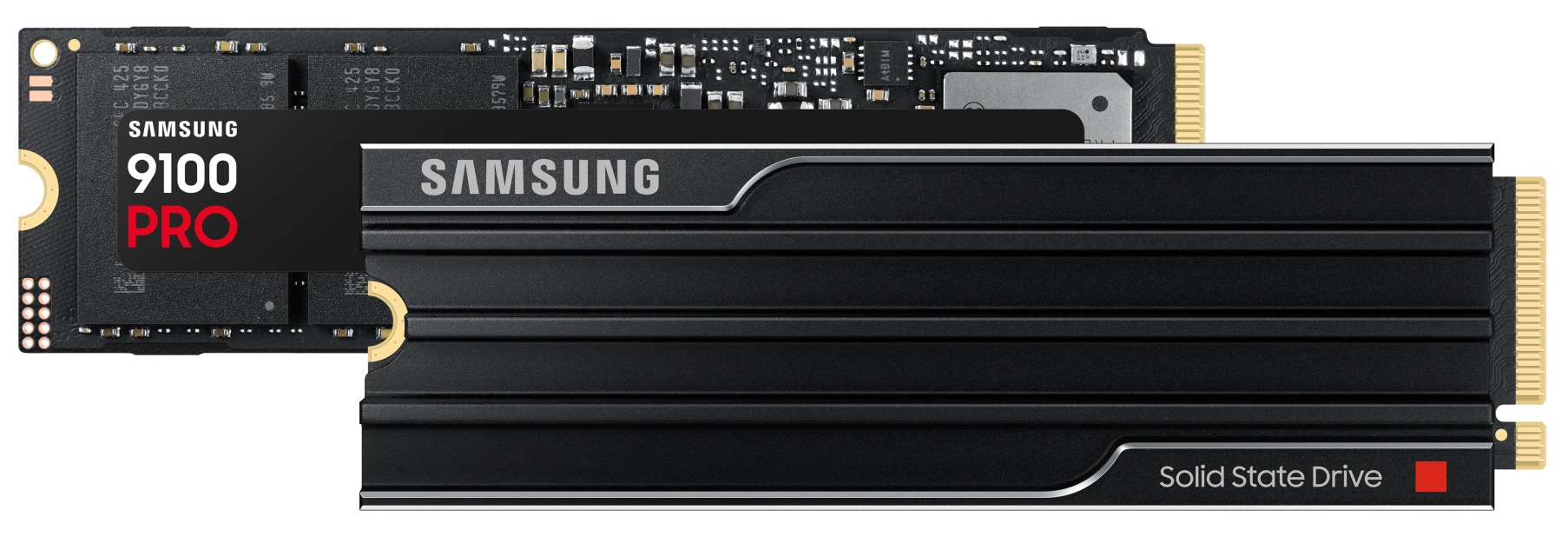
The Samsung 9100 PRO SSD will launch in March 2025 with the following pricing:
The heatsink versions will be available for $20 more per model. Given its groundbreaking performance, improved efficiency, and increased storage capacity, the 9100 PRO is set to become one of the leading PCIe 5.0 SSDs in the market, competing with Seagate’s FireCuda 540 and Crucial’s T700.
 SUBSCRIBE TO OUR NEWSLETTER
SUBSCRIBE TO OUR NEWSLETTER 
[contact-form-7]
 Join Inner Circle
Join Inner Circle
 Subscribe
Subscribe
This description contains links to Amazon. These links will take you to some of the products mentioned in today's content. As an Amazon Associate, I earn from qualifying purchases. Visit the NASCompares Deal Finder to find the best place to buy this device in your region, based on Service, Support and Reputation - Just Search for your NAS Drive in the Box Below
 Need Help?
Where possible (and where appropriate) please provide as much information about your requirements, as then I can arrange the best answer and solution to your needs. Do not worry about your e-mail address being required, it will NOT be used in a mailing list and will NOT be used in any way other than to respond to your enquiry.
[contact-form-7]
Need Help?
Where possible (and where appropriate) please provide as much information about your requirements, as then I can arrange the best answer and solution to your needs. Do not worry about your e-mail address being required, it will NOT be used in a mailing list and will NOT be used in any way other than to respond to your enquiry.
[contact-form-7]
 Ko-fi or old school Paypal. Thanks!To find out more about how to support this advice service check HEREIf you need to fix or configure a NAS, check Fiver
Have you thought about helping others with your knowledge? Find Instructions Here
Ko-fi or old school Paypal. Thanks!To find out more about how to support this advice service check HEREIf you need to fix or configure a NAS, check Fiver
Have you thought about helping others with your knowledge? Find Instructions Here

|
 |